Information
Cat sedative for travel: 10 prescription & over the counter options.
Traveling with cats can get pretty hairy, leading many owners to wonder about a cat sedative for travel. There are several options to choose from, both prescription and over the counter. Read on to learn more about when sedating a kitty is appropriate, and what the options are.

Last Updated: December 18, 2023 | 9 min read

When you purchase through links on our site, we may earn a commission. Here’s how it works .
Traveling with cats is a hairy business, as many felines do not take well to the motion of being in the car. Cats experience anxiety when traveling, but sometimes it is absolutely necessary. When this situation arises, owners often ask about a cat sedative for travel. These medications can help reduce anxiety and make traveling more enjoyable for both felines and their human companions.
Traveling is stressful and can induce anxiety for owners and their purr babies. There are a few different choices when it comes to cat sedatives, and some are only available through a prescription from your veterinarian. Owners have over-the-counter options they can consider as well.
Whenever giving your cat a new medication, whether prescription or over-the-counter, it is important to discuss your concerns with your veterinarian beforehand. Take some time to research the options and learn about the side effects. Let’s get started and go a little deeper into the subject of the best cat sedative for travel.

Medicine To Calm Cats For Travel
Many humans need to take medication for traveling due to nausea, car sickness, fear , and anxiety. Felines can often experience similar symptoms or simply may be very uncomfortable and show some outbursts of unusual behavior. For several reasons, kitties might need sedatives in the car, bus, or train. Some felines are naturally anxious or fearful, while others may have had a negative experience in the past, such as a car accident or a scary trip to the vet.
Common reasons for sedation in cats during travel include:
- Travel anxiety
- Motion sickness
- Aggression or fear towards other animals
- Agitation during veterinary visits
In some cases, sedation may be necessary during travel for a cat’s safety. Cats may become agitated and afraid during a trip, causing them to want to run and hide. In some cases, they may get aggressive toward their owners. Turning to a sedative, anti-anxiety medication, or over-the-counter treatment may help.
Medicine to calm cats during travel can be prescription or over the counter. There are a few different remedies owners can try, and one should never be afraid to speak with your veterinarian about this. All sedatives, even over-the-counter ones, come with potential side effects, and it is essential to consult your veterinarian before administering any sedative to your cat. Some of the most common side effects of sedatives include:
- Drowsiness and lethargy
- Loss of coordination
- Decreased appetite
- Vomiting and diarrhea
- Disorientation
Kitties who start vomiting, have diarrhea, difficulty breathing, increased aggression, slow heart rate, or other symptoms may be experiencing a bad reaction to sedation.
Prescription Sedatives
There are a few different types of feline sedatives that veterinarians can prescribe. What your veterinarian will choose to use will depend on your specific kitty, her health, and her age, as well as the specific circumstances of your trip plans. Your vet will detail the correct dose for your cat. Always follow proper dosing instructions.

Gabapentin is only available by prescription and is the generic name for this drug. It is commonly prescribed to kitties for traveling and works as both a sedative and to help with anxiety. Gabapentin is commonly used to treat seizures and neuropathic pain. However, it can also be used as a sedative in felines. Gabapentin works by binding to a specific type of calcium channel in the brain, which helps reduce nerve activity.
It is also used as an anticonvulsant drug to treat seizures and chronic pain in humans. According to the U.S. Food and Drug Administration , veterinarian use of this drug is not listed on the label but is allowed. This is called “off-label.” While often prescribed for pain management and seizures, it can also be used to treat anxiety and as a sedative during travel.

Trazodone is an antidepressant that is commonly prescribed to sedate a kitty for traveling. This drug works to ease anxiety by regulating the level of serotonin, a neurotransmitter, in the brain. Serotonin promotes a sense of well-being. This works as both a sedative and to reduce anxiety. This drug is tolerated well by cats but should not be used in felines that have liver, heart, or kidney concerns. Trazodone is generally used in the short term and is also prescribed during orthopedic recovery periods.
Benzodiazepines
Benzodiazepines are a group of drugs that are often used to treat anxiety and insomnia. They work by enhancing the effects of a neurotransmitter called gamma-aminobutyric acid (GABA) in the brain. The increased level of this neurotransmitter works to keep the cat relaxed. Examples of benzodiazepines commonly used in cats include diazepam (Valium) and lorazepam (Ativan). Benzodiazepines are also medications commonly taken in humans. Kitties must take a much smaller amount. These are only available by prescription and should not be used for kitties that suffer from liver or kidney disease or those who are pregnant.
Clonidine is a medication commonly used to treat behavioral disorders such as separation anxiety, loud noise phobia, and anxiety surrounding travel, veterinary visits, or medical treatment. This drug works to soothe anxiety and is helpful as a pain reliever and muscle relaxer. In some cases, it is used to treat inflammatory bowel disease.
Over The Counter Cat Sedative For Traveling
If you do not want to go to the vet and put your kitty on a prescription sedative for travel, you will be happy to hear that several over-the-counter options are often very effective . Of course, discussing using any of these with your veterinarian beforehand is important to ensure it’s safe for your kitty’s unique health needs.
Benadryl (Diphenhydramine)
Benadryl, a commonly used medication for humans, can also be used for cats to calm them during a trip. It is not a sedative. Rather, this is an antihistamine that can have a sedative effect . This is available over the counter. Diphenhydramine, the active antihistamine ingredient, is safe for healthy adult felines over six months old. Speak with your veterinarian about the correct dosage. Usually, the dose will be about 1 mg per pound of weight. This may be given up to three times a day. However, discussing your cat’s individual dose with the vet first is best.
Melatonin is hormone felines produce naturally. It is secreted from the pineal gland and occurs in response to dark or dimming light. Melatonin helps the body regulate sleeping and waking habits . When increased by supplements, it can help with soothing anxiety and as a mild sedative. Melatonin comes in liquid, pill, and capsule form, as well as in calming treats and chews. It is very effective for short-term use and in situations like travel. It can interact with some medications, so always discuss it with your vet before adding this to your kitty’s regimen.

Cannabidiol (CBD) can be used to calm cats down and may have a mild sedative effect. It can be found in oils as well as CBD treats and is safe for feline use. CBD can help with anxiety, overactivity, and anxiety and has been used as an anti-inflammatory. Some products mix CBD and melatonin for a stronger effect.
Bach Rescue Remedy
Bach Rescue Remedy is a natural remedy that contains flower essences that are thought to help reduce anxiety. This product is available in a liquid form that can be added to water or food. Though the rescue remedy does not cause drowsiness, it has a calming effect, making travel easier for them.
Feliway is a synthetic copy of a pheromone that cats produce when they feel safe and secure. These pheromones work naturally and have a calming effect. Feliway is available in a spray or diffuser and can be used to help reduce anxiety during car rides. This also comes as a spray, collar, and in wipes. This product is drug-free, which appeals to many owners.
Zylkene is a veterinary supplement made from alpha-casozepine, derived from cow’s milk. T his non-drowsy formula has been shown to help balance out the stress reactions of cats and dogs. Lactose and preservative-free. This comes in a capsule form that owners can open and sprinkle on food or in water. This one does not work right away, so owners must start giving it about 5 to 7 days before a trip.
Cat Tranquilizer For Travel
A veterinarian must prescribe tranquilizers. These should only be used in very extreme situations. Tranquilizers most often require an injection to be administered. These are usually used before anesthesia. Injectable tranquilizers are rarely prescribed for travel and are usually only done in special circumstances. These are more commonly used in a medical setting.
Acepromazine maleate is a feline tranquilizer that is used by vets. This is injected into a vein, under the skin, or in a muscle and takes about 45 minutes to work. It can be given in tablet form in some circumstances. Most often, it’s used in a clinical setting. Acepromazine is a tranquilizer that works by decreasing the activity of the central nervous system. This drug is often used before surgery or for long-distance travel.
Lidocaine hydrochloride, also called lidocaine HCL, is another injectable feline tranquilizer. Lidocaine HCL is used by vets as a local anesthetic that gives an epidural-like effect. It can be used to numb an area before stitches and is used to treat an irregular heartbeat in some kitties.
How To Give Your Cat A Sedative
There is no one specific way to give a kitty a sedative. The method is often dependent on the sedative used. Some may need to be wrapped in a treat, pill pocket, or hidden in food . Others can be sprinkled into water or on kibble. Discuss the instructions with your veterinarian to ensure you give your kitty the proper dose.
Should I Sedate My Cat For Flying On A Plane?
Sedating cats for flying is not recommended . Of course, it may be appropriate for an individual pet, but in general, this is not a common practice. This is partly because felines cannot regulate their body temperature when sedated, and most of the time, pets are not flying next to their owners. Sedation lowers heart rate and respiration and leaves kitties unable to brace against shifts in the cabin. Sedation is not a great idea if your kitty cannot be supervised the entire plane ride.
The American Veterinary Medical Association (AVMA) explains that sedating felines during flight can increase their risk of respiratory distress and heart concerns. It is rather unusual for a vet to recommend fully sedating a kitty for flying, and some airlines will not accept sedated pets.
How To Calm Cats While Traveling

Even with sedation or calming aids, felines can still experience anxiety and excitement while traveling. Owners can employ a few different methods to help calm them. Most kitties eventually calm down and fall asleep during car rides but may act up during stops or when left alone in a vehicle.
- Crating your kitty is advisable for riding in the car or any other form of transportation. This is for her safety and yours. Keep a soft blanket, treats, and toys inside the crate to keep your kitty occupied. Consider a travel appropriate litter box as well.
- If going on a long trip, practice traveling with your cat ahead of time. You can start by taking short car rides to get her used to the movement and sensation.
- Try out calming methods and aids before traveling. This is important to see how your pet reacts and if there are any negative side effects.
- Try to keep yourself calm, at least while your pet can sense your feelings. She will model her behavior after you; if you stay calm, this will help her do the same.
Frequently Asked Questions
Are cat sedatives safe.
Yes, when given properly and in the right way, these are safe for kitties. Owners should consult with a vet and always follow dosing instructions.
How will I know if I should sedate my cat for travel?
This is a hard question to answer because there is no one correct answer for everyone. This depends on your pet, her needs, and your travel situation. Discuss it with your vet early rather than right before your trip if you are concerned. You will need to do some research and prepare ahead of time to make travel a safe and enjoyable experience for yourself and your purr baby.
Can kittens have sedatives?
Kittens under six months should not be given sedatives . It’s always best to avoid sedating kittens if possible; most vets advise against it. Training your purr baby to tolerate traveling rather than relying on sedatives, especially for kittens, is better.
How long do cat sedatives last?
This will depend on the sedative, the dose, and how often a dose is given. Additionally, felines react differently, so what has a strong effect on one may not do the same with another. Doing a trial run before travel is a good idea to see how your pet reacts to sedation and how long the effects last.
Final Thoughts
Sedating a cat for car travel is a common way owners can make travel less fear-inducing for cats. There are both prescription and over-the-counter options. Not all work the same for every kitty, so owners will need to keep that in mind. The type of sedative that will work best for your pet depends on several factors, including the severity of their anxiety and any underlying medical conditions. Prescription sedatives are generally the most effective and tailored to your cat’s needs. However, over-the-counter sedatives can be useful for mild anxiety or cats that experience mild discomfort or whose owners only need the sedative for traveling purposes.

Author's Suggestion
My Cat Ate Plastic: What Should I Do?
Leave a comment cancel reply.
Your email address will not be published. Required fields are marked *
More From Information

How Do I Get A Cat Out Of A Tree?

Is Anthurium Toxic To Cats?

Warrior Cat Names: 325 Warrior-Inspired Cat Name Ideas
Cat Sedatives for Travel: Should I use them?

Cats tend to be creatures that appreciate home comforts and routine. Unlike dogs, it isn’t often that cats travel outside of the house, usually only for vet appointments. Because they aren’t used to it, this of course makes traveling a little scary for some cats. If you have an upcoming trip and know that your cat tends to get stressed and anxious when traveling, you may be considering using cat sedatives for travel.
However, experts advise avoiding the use of cat sedatives for travel, so it’s very important that you consider all of your options first. There are many dangers of sedating and tranquillising cats, so it isn’t something that should be taken lightly.
In this article, we will outline which cat sedatives for travel are available, the dangers of using them and the alternative remedies for travel anxiety in cats. We will also share some travel tips for a stress-free trip.
Related posts: Flying with Cats in Cabin? [13 Top Tips!] 15 Airlines That Allow Flying With a Cat In-Cabin [Prices & Policies]
The underlying problem: Travel anxiety in cats.
Anxiety—that feeling of nervousness, unease, or apprehension that we are all familiar with. Sometimes anxiety is perfectly normal, but it becomes a problem when it is severe or frequent enough to have an adverse effect on the cat’s or owner’s quality of life.
Depending on your cat’s temperament and travel experience, your cat may experience some stress and anxiety when traveling. Of course, a cat who is well traveled is far more likely to be a lot calmer when traveling. However, cats who have not had much experience traveling, in cars, on trains, on planes, are far more likely to find the experience stressful.
The following are signs and symptoms that your cat is stressed and anxious while traveling:
- Change in mood
- Excessive meowing or vocalisation
- Change in appetite or weight loss
- Increased lethargy
If your cat does get anxious when traveling, don’t worry, there are many fixes, which we will discuss in this article.
Why do cats get stressed when traveling?
There could be many different reasons that your cats gets stressed or anxious when traveling.
It could simply be that your cat hasn’t travelled much in his or her life and finds the experience unfamiliar and therefore rather scary. Cats who aren’t often exposed to long car rides, busy trains and train stations, and even airports, are more likely to find it stressful. This is particularly true if they were not exposed to it when they are young.
When a kitten or young cat is exposed to many different environments and experiences they tend to grow into a well-adjusted, balanced and calm adult cat. Therefore, a cat who was not exposed to many different environments when young is more likely to be fearful of new environments and in turn find traveling quite an ordeal.
Alternatively, your cat may have associated traveling to a bad experience. I could be that maybe he or she has associated a trip in the car, to something scary like a visit to the vet, or an accident.
What to do about travel anxiety in cats?
Behavioural modification and gradual exposure to travel is the best way to deal with travel anxiety in cats. It does take time, but it is worth it in the long run.
Rather than using cat sedatives for travel, which has many dangers we will outline below, it’s important to try train your cat to stay calm in different environments. Both you and your cat will be far happier for it.
These protocols involve teaching a cat how to stay calm when they are exposed to certain triggers, such as a busy train, airport, or a long duration in a car.
The safest way to manage travel anxiety in cats is to gradually increase your cats exposure to these triggers and the use of positive reinforcement. The word ‘gradual’ is key. You want to take baby steps to teach your cat that traveling isn’t so scary after all.
For example, if your cat struggles with rides in the car, you should start by simply introducing him to the car for a short period of time, even without actually leaving the driveway or the pavement. Get your cat to spend time in the car, and give him plenty of treats so that he slowly starts to associate the car with positive things. Once he seems more comfortable in the car, you can start taking him for short trips around the block. Over time you should be able to increase the duration of your journeys.
The following are all things you can do to create a positive association to traveling:
- Treats. Lots of treats!
- Using your cat’s favourite toy or blanket
- Calming music
- Make the destination fun! If your cat is scared of car rides, take him on a short ride to his favourite place
Although there are cat sedatives for travel available, both over the counter and through the vet, they aren’t recommended unless your cat’s travel anxiety is severe and travel is unavoidable.
How to tell if cat sedatives for travel are required?
As mentioned above, the best way to deal with travel anxiety in cats, is through increased exposure and positive reinforcement. This does take some time as you want to gradually build up a positive association to either the car, train, or even airport.
However, if you have already tried various training methods and your cat is still showing signs of stress when traveling, you may want to consider your alternative options.
If your cat is showing these signs and seems to be severely distressed when traveling, take him to the vet. Talk your vet through the symptoms and they will be able to advise you on what is best for your cat.
What cat sedatives for travel are available?
There are a range of dog sedatives for travel available, each suitable for differing levels of anxiety in dogs:
- herbal stress relievers (lavender and chamomile)
- Feliway – a natural product that mimics pheromones
- Valarium or products containing valarium such as Pet Remedy and Calmex
- Buprenorphine (brand names: Buprenex, Simbadol)
- Gabapentin (brand name Neurontin)
- Alprazolam (brand names Xanax and Niravam
Before giving your cat anything, it’s always best to seek advice from your veterinarian. Your cat’s veterinarian can determine which sedative is best for your cat based on the symptoms that your cat shows and your cat’s overall health.
Whichever medication is prescribed, ensure you closely follow the dosing instructions that are provided and never give your cat more sedative than is recommended. You should also always talk to your veterinarian about any questions or concerns that you might have.
Why you should NOT use cat sedatives for travel.
Sedation essentially puts the brain to sleep. Previously, both owners and pet health professionals thought that the most efficient way to treat anxious cats was to simply “knock them out”. If they’re asleep for the journey they won’t know the difference right? However, it’s not as simple as that.
Over the years, medical research has taught us that using cat sedatives for travel is actually rather dangerous.
Firstly, cat sedatives for travel can actually cause your cat to panic more. When a cat is sedated or tranquillised, their ability to think and process is hindered. The wooziness can confuse and worry your cat, which could cause them to panic. Additionally, a cat that has been sedated also won’t be able to stand up right and maintain balance. Not only will this add to the confusion and panic, it could of course increase the chances of injury.
Furthermore, cat sedatives for travel affect more than their brain and balance. Using cat sedatives for travel will reduce their heart rate, respiration, and body temperature. This can cause problems with breathing and maintaining your cat’s body temperature, particularly if your cat is a snub-nose breed.
Lastly, although it is rare unless the dose of sedation was too high, cat can also become dehydrated.
The intensity of the risks listed above are increased when flying. In fact, airlines generally won’t allow cats to fly under sedation nowadays. This is because the increased altitude pressures can increase the likelihood of respiratory and even cardiovascular problems.
No loving pet parent wishes any of the above on their cat! That’s why the American Veterinary Medical Association strongly recommends against using tranquilizers and sedatives.

What are the alternatives to using cat sedatives for travel?
Natural remedies.
Like humans and dogs, any cats respond really well to various herbal stress-relievers. However, of course every cat will respond differently, depending on their size, weight, breed and temperament. What works for one cat may not work for yours.
In the same way that chamomile tea has been found to relax us humans, it’s also a good way to help calm cats. Chamomile helps the brain relax without dangerous side effects that cat sedatives for travel can have. In fact, there have been studies to show that it has a relaxing affect on many different animal species.
The scent of lavender oil has also been tested in cats – studies have found that it has a relaxing affect. You don’t want your cat to ingest the oil, so you can just give your cat a little whiff of it before travel, or put a drop of oil on your cat’s travel blanket.
Valerian is another herbal remedy often used by humans to treat insomnia, is also recommended for cats. Rather than affecting the brain directly, Valerian helps to reduce tension and anxiety.
Over the counter options
Some nutritional supplements have been found to have a relaxing affect on cats. These include L-theanine, melatonin, or s-adenosyl-methionine which can all be bought over the counter.
As mentioned above, Valarium relaxes both pets and humans. There are a few different over the counter products that contain Valarium, such as Pet Remedy and Calmex .
Alternatively, you could consider using products that contain pheromones . These can come in collar or spray forms. The collar, which looks like a flea collar, produces the hormone pheromone that mama cats produce to relax their kittens. Cats also produce pheromones to relax and reassure other cats. The collar is a natural way to help keep your cat calm during travel. Alternatively, you can spray your pet’s carrier with pheromones. There are a few over the counter products that contain pheromones, such as Feliway wipes and sprays .
Body wraps have been proven to help some cats feel calmer in stressful situations. The hug-like effect of a wrap, such as a scarf, provides cats with calming reassurance. Some pet owners simply use scarves to wrap around their pets. Alternatively, there are some products that have been specifically designed to reduce anxiety in cats, such as the Thundershirt.
It’s important to note that you should always seek advice from your vet before giving any remedy to your cat. Nowadays, many veterinarians will prescribe herbal or “alternative” options for pets. Additionally, it’s vital that you always follow dosage instructions.
Tips for traveling with cats with travel anxiety.
1. spend time to train your cat to stay calm..
As mentioned above, the best way to deal with travel anxiety in cats is to manage their behaviour. Take some time to gradually expose your cats to traveling, providing plenty of positive reinforcement with the use of treats and affection.
Not only will your cat benefit from the time you put into this, staying calm is a requirement if you are planning on taking your cat on a flight. In order for cats to travel in the cabin with their owners, they must stay calm on the flight otherwise they risk being sent into the cargo area of the plane.
2. Exhaust your cat before travel.
Try to exhaust your cat a little by increasing the level of activity before your trip. Have an extra play session before you trip.
A sleepy cat will be less prone to getting stressed out when traveling. Exercise also helps shed some layers of anxious energy.
3. Limit access to food and water before travel.
Limit your dog’s access to food. Therefore, it’ll be less likely that they will need to defecate or urinate when traveling.
Additionally, some cats may experience motion sickness if they eat just before traveling.
This is particularly important if you are taking your cat on a flight. Air Canada suggest feeding your cat four to six hours prior to departure, as a full stomach may cause discomfort during travel.
4. Get your cat used to it’s travel carrier.
This is super important if you want to ensure that travel is as stress-free as possible for your cat.
Cats feel much more secure when traveling in a carrier, as it provides them with a safe place. However, it is important to spend time to get your cat get accustomed to it. You want your cat to be completely comfortable spending long periods of time in their carrier.
This will take some time, especially if your cat is not used to being confined in a travel carrier. When first introducing your cat to its carrier, never force them in and immediately close the door. This may lead to a negative association with it which in turn may cause them to fear the carrier.
Instead, let your cat explore the carrier by itself, with the door open. You can lure your cat into their carrier with plenty of treats, and let him/her play and sleep in there as much as possible.
It’s also helpful to do some practise runs in the carrier. Take your cat to the cafe in the carrier, or out for some car rides.
For an added sense of security, pop some of your cat’s favourite toys in their travel home, for extra comfort.
5. Familiarise yourself with the airport/train station that you are departing from and arriving to.
This of course only applies if you are traveling by train or plane.
Most airports will have a dedicated area for pets and service animals to rest. It is actually a legal requirement that all U.S. airports have pet-relief areas available for working animals and pets to rest. Take some photos of the airport maps, so you don’t have to wander around on the day trying to find a resting place.
6. Leash train your cat (recommended if flying).
Although it isn’t usual for cats to wear harnesses and walk on a leash, in order to fly with cats in cabin they may need to be harnessed and leashed. It’s important to take time to leash train your cat before your flight, to minimise stress.
Most of the time your cat will be required to remain in their carrier, at the airport and on the plane. However, when passing through security and customs you may need to take your cat out of the carrier.
Additionally, most airports have pet relief areas for cats and dogs to stretch their legs and go to the toilet.
Spend some time getting your cat used to walking on a lead at home. We recommend simply letting your cat wear a harness around the house for a while, before getting them to walk on a lead. That way they can get used to the feeling of wearing a harness.
7. Pack all the essentials.
Get everything organised the night before your trip. This will make the whole journey much less stressful for you, which will in turn make your cat calmer. An anxious cat is more likely to feel calm if it’s owner is calm.
If you are crossing borders or getting on a flight, you will need a number of documents. The documents required will vary depending on which airline you are flying with (if flying), and where you are traveling from and to. But generally, you may require any of the following:
- Microchip certificate
- Rabies vaccination certificate
- Animal health certificate
- Additional vaccination certificates
- Rabies titer test results
- Parasite treatment certificate
- Import permit
This is just a guide on what is required, please check the requirements for your specific airline and destination country.
Supplies are key to a stress-free trip. Here’s what we suggest bringing:
- Your cat’s food
- Favourite treats
- Collapsible food and water bowls
- A leash (highly recommended if flying)
- Plastic bags and hand cleaners in case of accidents
- Cat’s favourite blanket
When traveling with an anxious cat, we recommend bringing their favourite toy and blanket. Both of these will provide them with a sense of security. A blanket also comes in handy as you can use it to cover your cat’s carrier.

Bottom Line
So, if your cat gets particularly stressed or anxious when traveling, don’t worry there are many ways to manage this. As cat sedatives for travel can actually be quite dangerous in many ways discussed above, it is best to stay away from them unless your cat gets severely stressed and travel is unavoidable.
As we have discussed, there are many alternative methods to managing travel anxiety in cats. Firstly the best way to manage it, is to train your cat to stay calm in different situations, through positive reinforcement and gradual increased exposure. Additionally, there are many natural remedies and over the counter medications that could help calm an anxious cat. These include, chamomile, lavender oil, valerian and anti-anxiety wraps.
If you feel you have tried everything you can to help your cat stay calm while traveling, then there are cat sedatives for travel available. In these cases, you will need to visit the vet to discuss your options. It’s vital to seek your vet’s advice when giving your cat any medication, and always follow dosages accurately.
Happy and safe travels!
Related posts: How to get a UK Pet Passport [2021 Guide Flying with Cats in Cabin? [13 Top Tips!] 13 Airlines That Allow Flying With a Cat In-Cabin [2021 Prices & Policies]
Related Articles
![cat tranquilizer for travel Photo of How to Safely Secure Dogs When Camping? [5 Methods]](https://www.petsthattravel.com/wp-content/uploads/2023/11/how-to-secure-dogs-when-camping-390x220.jpg)
How to Safely Secure Dogs When Camping? [5 Methods]
![cat tranquilizer for travel Photo of Do All Dogs Have Webbed Feet? [Breed Info & Paw Care]](https://www.petsthattravel.com/wp-content/uploads/2023/11/do-all-dogs-have-webbed-feet-390x220.jpg)
Do All Dogs Have Webbed Feet? [Breed Info & Paw Care]
![cat tranquilizer for travel Photo of Can Pit Bulls Swim? [Breed Facts & FAQs]](https://www.petsthattravel.com/wp-content/uploads/2023/11/can-pitbulls-swim-390x220.jpg)
Can Pit Bulls Swim? [Breed Facts & FAQs]
![cat tranquilizer for travel Photo of Do Newfoundland Dogs Like Water? [Breed Facts & FAQs]](https://www.petsthattravel.com/wp-content/uploads/2023/11/newfoundland-dog-water-390x220.jpg)
Do Newfoundland Dogs Like Water? [Breed Facts & FAQs]
Leave a reply cancel reply.
Your email address will not be published. Required fields are marked *
Save my name, email, and website in this browser for the next time I comment.
- Domestic Pets
- Animal Vitals
How to Choose the Right Cat Sedative for Travel
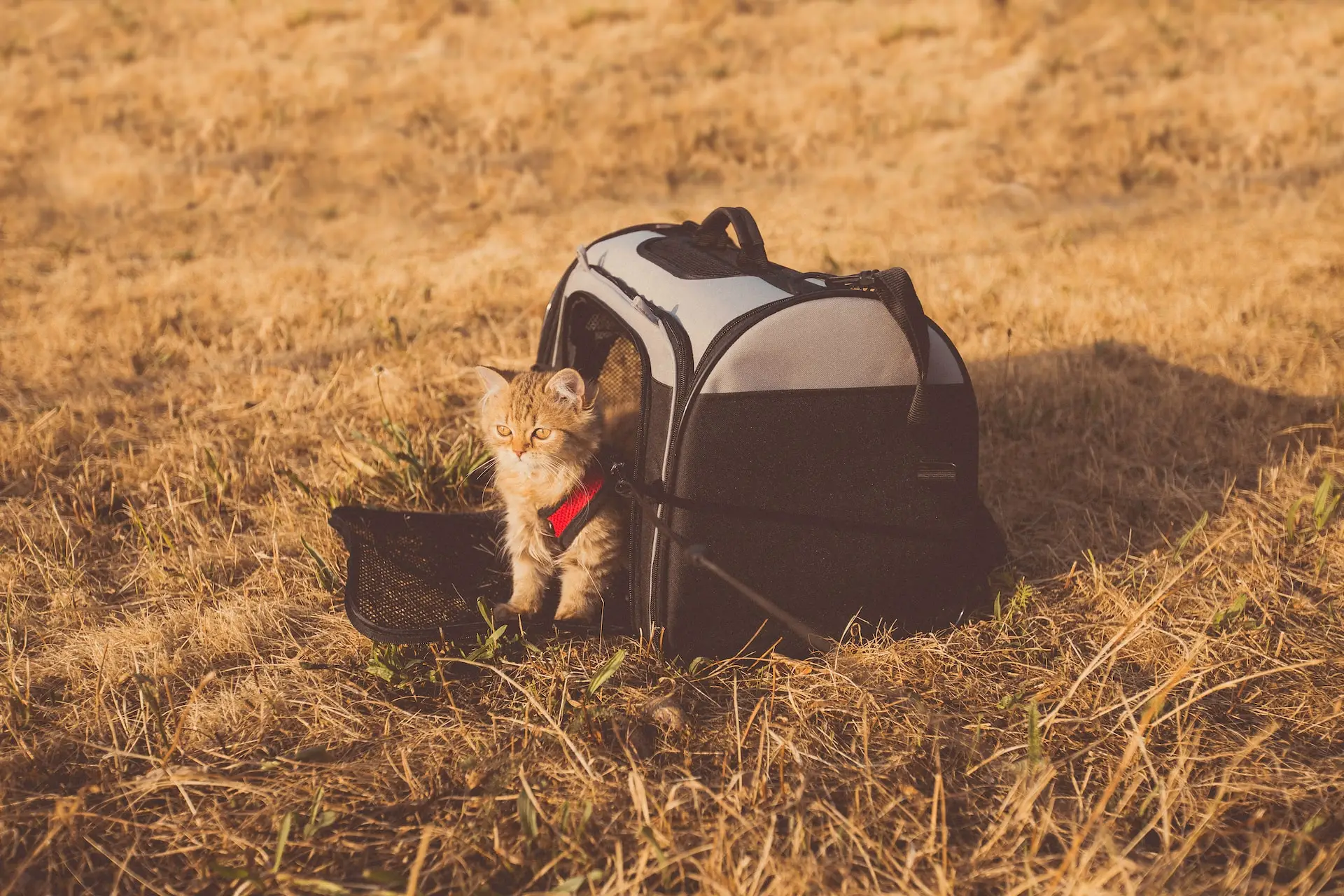
Decoding Cat Sedatives
A cat sedative for travel is an invaluable tool for pet owners who are looking to ensure their feline friends remain calm and stress-free during travel and other potentially stressful situations. Understanding the types, uses, and safety of these sedatives is crucial for making an informed decision that prioritizes your cat’s well-being.
Over-the-Counter Sedatives
Over-the-counter cat sedatives are easily accessible and can be found in pet stores or online. Pet owners, especially when meticulously following the product’s instructions, generally consider them safe for use.
These sedatives typically comprise natural ingredients or milder synthetic components designed to provide a calming effect. Herbal extracts like valerian root, chamomile, and lavender, commonly feature as ingredients due to their traditional use for their soothing properties.
Types of Over-the-Counter Sedatives
- Pheromone-Based Products : These replicate the natural pheromones that cats produce, creating a sense of familiarity and safety. Feliway, for instance, is a popular choice among cat owners.
- Calming Supplements : Available in various forms such as chews, powders, or capsules, these supplements often contain a blend of ingredients believed to promote calmness.
- Calming Collars : Infused with soothing ingredients, these collars release calming agents over time, providing a constant source of comfort for your cat.
Over-the-counter sedatives are non-prescription, making them more accessible. However, it’s crucial to choose products from reputable brands and to closely observe your cat during their first use to ensure there are no adverse reactions.
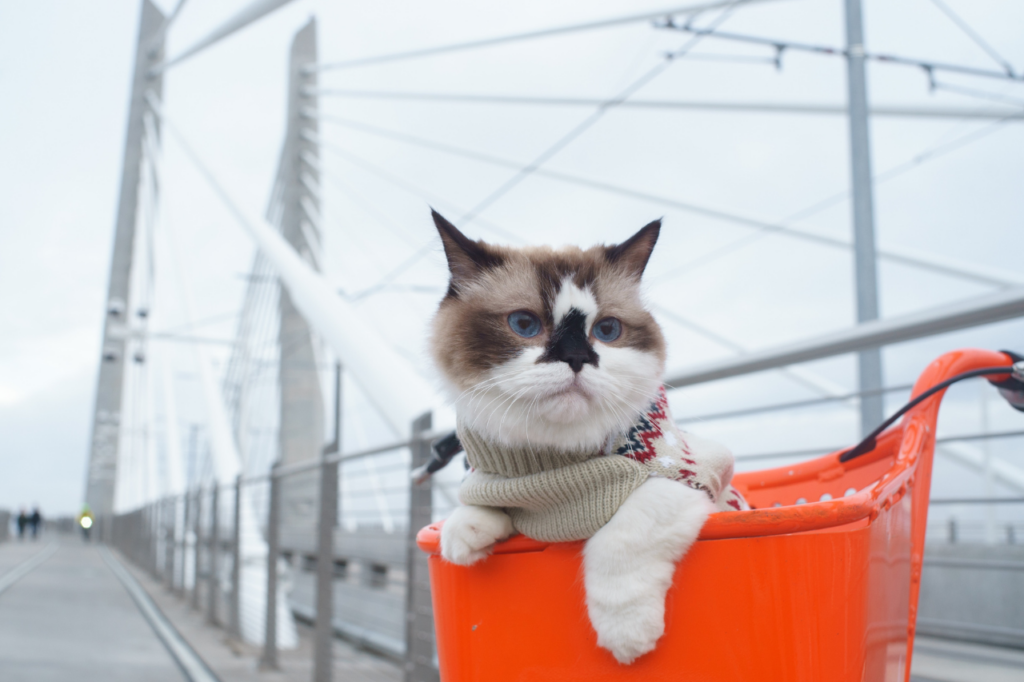
Over-the-Counter SedativesPrescribed Sedatives
Tailored Solutions for Your Cat’s Specific Needs
Sedatives prescribed offer a more potent solution and tailor to meet the specific needs of your cat. These are provided after a thorough evaluation and consultation with your veterinarian.
Your veterinarian will conduct a comprehensive assessment of your cat’s health, considering factors such as age, weight, existing health conditions, and the nature of the stressor. This in-depth evaluation ensures that the sedative prescribed is both safe and effective for your cat.
Types of Prescribed Sedatives
Benzodiazepines : Medications like Diazepam or Alprazolam fall under this category, offering strong sedative and anti-anxiety effects.
- Anti-Anxiety Medications : These can include selective serotonin reuptake inhibitors (SSRIs) or tricyclic antidepressants (TCAs), which work by altering the levels of specific neurotransmitters in the brain.
- Other Sedatives : Medications like Gabapentin, which is often used for pain and seizures, can also provide a calming effect.
Administration and Monitoring a Cat Sedative for Travel
Prescribed sedatives require precise dosing and close monitoring, especially when used for the first time. Your veterinarian will provide detailed instructions on how to administer the medication and what signs to look out for in case of any adverse reactions.
Ensuring Safety and Efficacy
While stronger and more potent, prescribed sedatives come with an assurance of safety and efficacy when used as directed. Your veterinarian’s guidance is paramount in ensuring that your cat receives the right medication at the right dose.
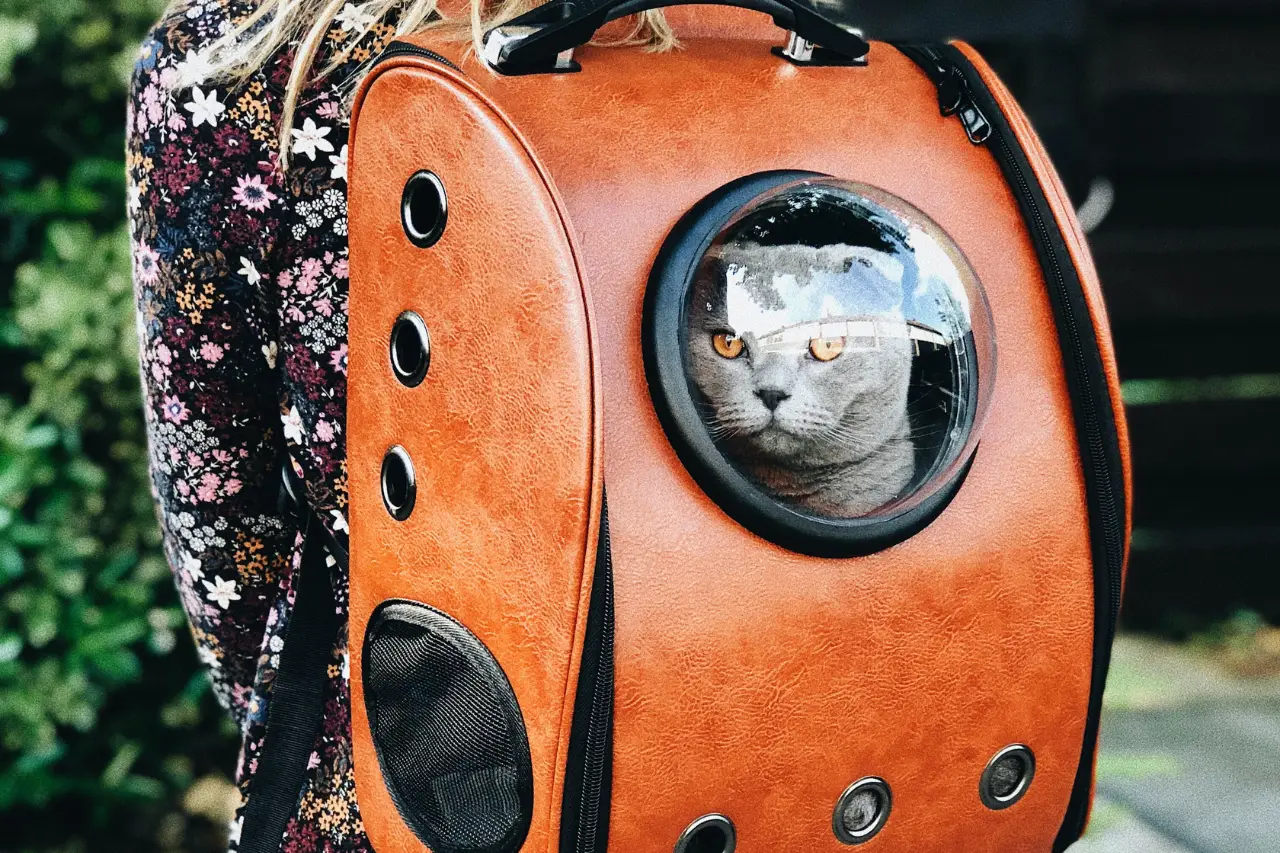
Understanding Cat Behavior & What to Look Out For
Cats are creatures of habit and tend to be sensitive to changes in their environment or routine. Stress and anxiety can manifest in various behavioral changes, and as a pet owner, recognizing these signs is crucial.
Here we dive deeper into the understanding of these stress indicators and determine when it might be necessary to consider a cat sedative for travel for your feline companion.
- Hiding: Seeking Solace and Security – Cats often retreat to secluded areas when they feel threatened or stressed. While some cats are naturally more introverted, a sudden increase in hiding behavior can be a cause for concern. Pay attention to changes in your cat’s usual hiding spots and frequency. If your cat is spending an excessive amount of time away from its normal activities or social interactions, it could be a sign of stress.
- Excessive Vocalization: A Cry for Help – Cats communicate through vocalizations, and an increase in meowing, yowling, or other sounds can indicate distress. Listen for changes in the pitch, volume, or frequency of your cat’s vocalizations. Don’t ignore excessive and persistent vocalizing, especially if it’s out of character for your cat.
- Aggression: A Defensive Response – Stress can lead cats to exhibit aggressive behaviors, which may be directed toward other pets, humans, or inanimate objects. Look for signs of aggression such as hissing, swatting, biting, or puffed-up fur. Understand that aggression can be a sign of fear and that your cat may require a calm and safe space to de-escalate.
- Changes in Bathroom Habits: A Physical Manifestation of Stress – Stress can lead to changes in bathroom habits, including urinating or defecating outside the litter box, and changes in the frequency or consistency of elimination. Monitor your cat’s litter box for any changes and pay attention to any accidents around the home. Persistent changes should be discussed with a veterinarian as they can also indicate medical issues.
- Over-Grooming: A Compulsive Coping Mechanism – Over-grooming is a common stress response in cats, leading to hair loss and potential skin irritation. Look for bald patches, redness, or irritation on your cat’s skin. Pay attention to your cat’s grooming habits, noting any increases in frequency or intensity.
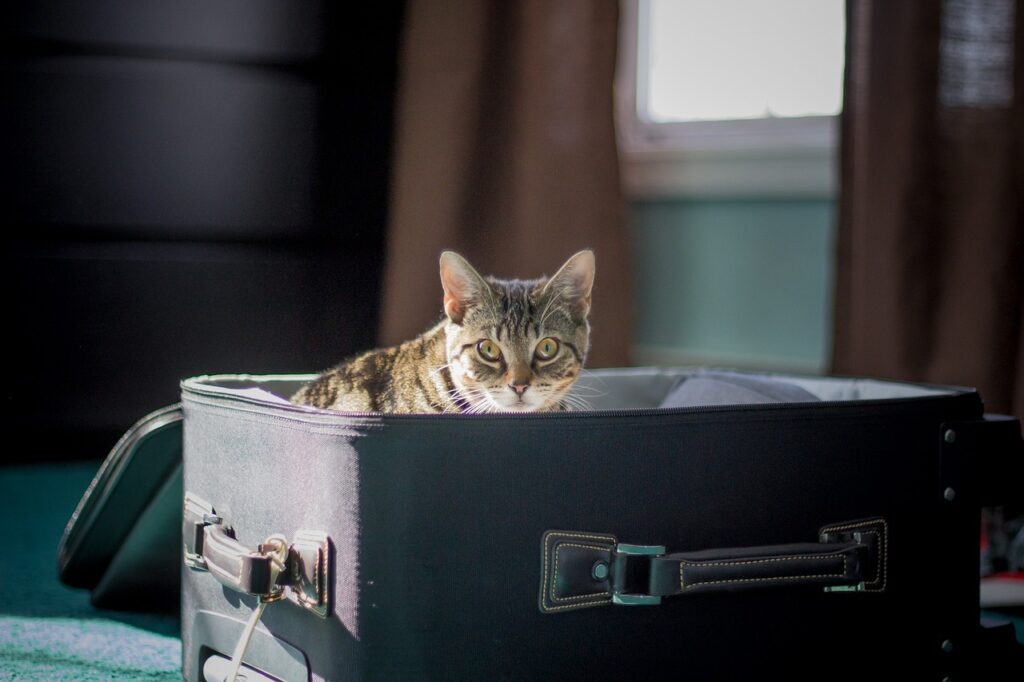
Are Cat Sedatives Safe?
Yes, cat sedatives are safe when used responsibly. Generally, over-the-counter options are very safe, and you should strictly follow your veterinarian’s directions when using prescribed products. Never overdose and ensure proper monitoring of your cat after administration.
Recommended Cat Sedatives
Over-the-counter cat sedatives for travel.
- Feliway : A synthetic pheromone mimicking those produced by mother cats. Available as a diffuser or spray.
- Zylkene : A calming dietary supplement containing alpha-capsazepine, suitable for cats of all ages.
- Composure : A blend of calming agents available in chewable form.
- Bach Rescue Remedy : A homeopathic remedy designed to reduce stress and anxiety.
Prescribed Medications
- Benzodiazepines : Medications like Xanax, Ativan, and Valium, are known for their calming effects.
- Tricyclic Antidepressants (TCAsJM) : Medications like Anafranil and Elavil, are used to treat anxiety disorders.
- Selective Serotonin Reuptake Inhibitors (SSRIs) : Medications like Prozac and Paxil, are also used for anxiety disorders.
- Gabapentin : A versatile medication used for seizures, pain, and anxiety.
- Acepromazine : A sedative used for calming and before veterinary procedures.
Safely Administering Cat Sedatives
Administering sedatives safely is crucial. Here are some tips for how to administer a sedative to your cat.
- Pills : Open your cat’s mouth and place the pill at the back of the throat. Ensure they swallow.
- Liquid Medications : Use a dropper to administer the correct amount directly into the mouth or mix it with food.
- Feliway : Spray bedding and the travel crate. Always follow the directions. Whether it’s an over-the-counter or prescribed sedative, follow all guidelines carefully.
Ensuring a Calm Journey: The Final Takeaway on Cat Sedative for Travel
Choosing the right cat sedative for travel ensures a serene journey for your feline friend. Understand the options, know the signs of stress, prioritize safety, and follow administration guidelines for a seamless experience. Your cat’s well-being is paramount, and with the right knowledge, you’re set for success.
By: Joseph Menicucci, DVM
Contributing Professional
The Animalista professional contributors are comprised of licensed Veterinarians and certified Veterinary Technicians who have been vetted by our team and have either authored or reviewed this content for accuracy.
Related Articles

Can You Keep Sugar Gliders as Pets?

How To Treat A Dog With Mosquito Bites

Are Black Snakes Poisonous? Decoding the Mystery

Subscribe to get the latest on all things animals

- Terms & Conditions
- Privacy Policy
- Write for TheAnimalista
Copyright © 2024 TheAnimalista.com All Rights Reserved.
ADVERTISE WITH US
Thanks for your interest. Please let us know how we can partner with you by filling out the brief information below. We promise not to take long in getting back to you.
Tell Us About Yourself
Write for us.
You’re so awesome for wanting to write for us! Let’s get to it, please share some info so we can get to know you and better understand how best to get you into the pack. We never keep fellow animal people waiting long, promise!
Tell Us About Your Awesome Self
Content submission.
Hey There! So you must be what we call Animal people for wanting to share some Animal Adorbs with the world – we think that’s fantastic. We just need some basic info to get you and your lovely featured (maybe even famous!)
Terms and Conditions

How to Safely Sedate Your Cat for Air Travel without Stress or Anxiety
A comprehensive guide to sedating your cat for air travel.
Traveling by air with your feline friend can be quite stressful for both of you. However, with the right preparation and sedation, it doesn’t have to be a nightmare. In this article, I’ll answer all your questions about safely sedating cats for a flight.
Why Sedate My Cat?
- Cats find the noises, movements, and unfamiliar environment of air travel incredibly frightening and anxiety-provoking. Without sedation, your cat will likely be very stressed and possibly try to escape during the flight.
- Sedation allows your cat to remain calm and sleepy for the duration of the trip. They won’t be disturbed by take-offs, landings, or turbulence.
- Calm cats are safer cats. A sedated cat cannot panic and potentially injure itself or others if it tries to bolt during the flight.
From my experience as a vet, sedating cats for flights is strongly recommended unless your individual cat is exceptionally docile and travel-trained. The benefits outweigh the risks.
What Type of Sedation Should I Use?
Most vets will prescribe a mild sedative like meloxicam that can be given a few hours before your flight . This allows your cat to be drowsy yet still easily roused during boarding, take-off and landing for checks by the flight crew.
I do not advise bringing powerful tranquilizers or sedatives yourself unless prescribed by your vet. These could interact with pre-existing conditions or be dosed improperly. Let a professional handle sedation.
How Do I Safely Administer the Sedative?
- Have your vet show you exactly how and when to give the medication for best results. Most take effect within an hour.
- Provide water after dosing to help the medication dissolve. Do not feed within a few hours of the flight.
- Monitor your cat frequently after dosing to ensure safety. Call your vet immediately if any concerning side effects emerge.
- Be prepared with wet pet carrier, food, litter and medication consent form from vet for TSA inspection.
From experience, go slowly and calmly when giving oral meds. Going limp isn’t harmful – just means it’s working!
What Should I Do During the Flight?
Bring a favorite toy or item that smells like home to ease anxiety. Place your cat’s carrier under the seat in front of you so you can check them discretely between in-flight movies.

A sedated cat may sleep through turbulence or noise without issue. But alert flight staff right away if yours seems unusually distressed. Most important is not panicking yourself – your cat can sense stress. Just calmly pet and reassure.
Essentially – be attentive but not overanxious. Let the sedatives do their job and your cat rest easy!
What If My Cat Won’t Take the Medication?
Basically, some cats just “sort of” won’t cooperate no matter what. Here are few tricks I have used in my practice:
- Hide medication in smelly wet food your cat loves. The aroma overpowers taste.
- Scoop cat directly into arms, wrap gently in towel burrito-style while partner gives meds. Fast and firm is kinder than a struggle.
- As a last resort, ask vet to show syringe administration into the mouth or cheek. A little scruffing may be needed.
I have faced many feisty felines, and with patience you can outsmart even the wiliest! Let me know if you need any other tips.
What Precautions Should I Take?
- Never fly with a cat you’ve sedated for the first time. Trial-run meds at home first.
- Don’t let your cat out of the carrier unless strictly necessary like using a litter box – even sedated, scare or stress could induce panic.
- Keep water, litter, medication and vet records on hand in case of an air emergency or health issue.
- Check advance booking rules for sedation. Some airlines require vet prescription or health form.
In summary – Prep well, and worst case is a groggy nap! But hey, isn’t that better than endless hours of crying? You’ve got this.
What Can Go Wrong?
To be perfectly honest, with the right precautions, sedation doesn’t pose huge risks. However, as with any medical treatment, complications are possible. Here’s a real-life case:

I once treated a cat who had aspirated some liquid given with her pills due to owners not fasting as instructed. Thankfully, she recovered fully with antibiotics. But it shows why vet guidance is crucial.
Overall though, as long as you follow vet dosing, monitor sedation closely, and have emergency contacts handy – your trip should be smooth sailing! Of course, unexpected reactions may occur in very rare cases. But stressing won’t help. Stay positive and vigilant.
So in summary, while sedation isn’t foolproof, the chances of truly serious side effects are amazingly small when done properly with an experienced vet’s guidance. Most worrying seems like something probably isn’t even a big deal! But be attentive just in case. Your vet will drop everything to help if anything was amiss.
Alternatives to Sedation
Despite all the precautions we’ve discussed, some pet parents simply don’t feel comfortable chemically restraining their cat for a flight. Here are a couple non-sedation options if yours is extremely travel-phobic:
- Drive if possible instead. Long but your cat will likely cope better without sedation.
- Try calming pheromone sprays, collars or diffusers before and during the flight. These may take the edge off fear without pills.
Ultimately, choose the strategy that best suits your individual cat ‘s health, temperament and the trip’s need. With any alternative, thorough desensitization training is still key to success. Here’s hoping smoother skies await you both!
In conclusion, sedating cats properly for air travel is perfectly safe when done under veterinary guidance. While no plan is foolproof, the potential benefits of a calmer flight for owner and pet alike usually outweigh improbable risks. As always, expert advice and attentive care are key. Safe travels to you and your furry friend !
Sedation Guidelines for Air Travel with Your Cat
Can i sedate my cat for a flight, what are the risks of sedating a cat, what medications are used to sedate cats, how do i prepare my cat for sedation, can i travel with my sedated cat in the cabin, what steps should i take when i land.
When you arrive, do not let your groggy kitty loose in unfamiliar areas right away. Keep it in the carrier until it seems more awake and alert. Also check for any signs it is unwell like vomiting. If problems occur, don’t hesitate to contact a vet asap. With a bit of TLC after the flight, hopefully your pal will be back to its old self in no time!
So in summary, sedation is an option for cats flying but only with vet supervision. Proper planning and care are key to reduce risks. What do you think – have I described this topic clearly enough? Let me know if you need any clarification or have extra questions!
Cat Sedative for Travel Everything You Need to Know
Are you considering traveling with your feline friend? If so, then you’ll love this cat sedative for travel post. I’ve done a bunch of due diligence to bring everything right to you to help you understand how to sedate your furbaby.
Cat sedation can be a great way to relieve the stress and sickness that can be caused when traveling via plane, train, or automobile. Some cats just do not do well during travel and will meow and moan the entire trip.
It’s totally possible to help calm them down and enjoy the voyage together.

What Are Cat Sedatives?
They can either be natural or medicated over the counter products that will help keep your furry friend asleep or calm during stressful situations. Many people use these methods to help their kitty stay calm or relaxed while traveling.
There are different methods to use when sedating your kitty and we’ll be taking a look at the various methods to use.
Can I Sedate My Cat for Travel
This is a controversial topic among everyone, and yes it’s totally possible to sedate a cat. There are several over-the-counter and natural products you can use.
I’ve put together a list of a few of the options as well as the dosage amount and side effects from use.
Cat Sedative for Travel Over The Counter
Diphenhydramine (benadryl).
Contains sedative qualities that can help your cat feel more relaxed, and can even help with motion sickness.
When using this for your cat, make sure that you place your cat a familiar carrier that they’ve used. Place their favorite blanket and toy that has their scent or your scent on it.
This will help them stay relaxed as the Benadryl wears off.
Dosage: Allow 0.5 mg to 2 mg per pound every 8-12 hours.
Side Effects: Loss of appetite, a decrease in urination, drowsiness, dry mouth, diarrhea, and vomiting.
Gabapentin and Clonidine
An inexpensive medication that was originally developed to help control seizures in humans. You should give it to your cat about 1-2 hours before going to vet, traveling or whatever causes anxiety in your feline.
A single dose can last for about 12 hours.
Dosage: 100 mg or a placebo capsule containing lactose powder
Side Effects: Owners may experience their cat vomiting, suffering from ataxia , and hypersalivation all of which should be resolved within 8 hours.
Chlorpheniramine
It’s a low-cost antihistamine that is used to treat cat allergies. It comes in the form of capsules, tablets, and syrup. It can cause drowsiness in a cat and sometimes used as a mile sedative.
Dosage: Do not exceed 0.25 mg/per pound every 8 hours when using a sedative.
Side Effects: drowsiness, vomiting, lack of appetite, and diarrhea.
What Is A Safe Sedative for Cats?
Most owners don’t want to use medicine to dose their feline friend. As you can see above, most of them come with side effects that can make your baby feel bad.
None of the methods that I shared above have been known to cause long-term lasting side effects. Most of the side effects will wear off within 8 hours.
If not, you’ll definitely want to contact your veterinarian to have your feline friend checked out. You may also want to check with your veterinarian to see if they can prescribe pet anxiety medication to help your cat stay calm while traveling.
How Can I Naturally Sedate My Cat
If you don’t feel comfortable giving your cat over the counter medicines then here is a list of some natural sedatives to make your travel a much more pleasant experience.
Nip of Catnip
Catnip or Nepeta cataria has been known to be a great sedative for cats. Catnip contains the popular essential oil nepetalactone that is known to drive felines crazy.
Nepetalactone causes a hallucinogenic effect that is similar to LSD or marijuana. It is a member of the mint family when you crust the leaves, it has a faint scent of mint.
To use it as a sedative, you’ll want to make sure that your cat eats the catnip. If they just inhale it, they will become stimulated.
Side Effects: Catnip is completely safe for cats. However, if they consume too much, they may vomit and have diarrhea. The side effects will go away after you stop feeding them and with some time.
Kava Kava, also known as Piper methysticum , is a tropical herb that has been used as a sedative. When using it as a natural sedative for cats, make sure that you’re using it under the supervision of a veterinarian trained in natural remedies for cats.
They’ll know what dosage to use. If you use too much, Kava Kava can be toxic to the liver. Do not give it to your cat if they are pregnant or have liver problems.
Side Effects: Can be toxic to the liver if given the wrong dose.
Cat Stress Relief From Feliway
Feliway is clinically proven, and veterinary recommended. It is a natural product that is used for calming anxiety behavior in cats. You’ll want to place the diffuser where your kitty spends most of the time.
Make sure that you add the synthetic pheromone into the device. Once your cat is exposed to the diffuser it helps calm them and can even be used as a cat tranquilizer.
Side Effects: None
Rescue Remedy
This is a commercial product that is marketed for calming cats. The product contains botanical essences of flowers such as Clematis, which is known to help anxiety in cats.
Add it to their food before your trip and this will help calm your kitty.
More Cat Travel Tips
These are some great tips is you’re taking a long road trip with your feline.
How Long Does A Sedative Last On A Cat?
Most sedatives will last between 8-12 hours. Before giving your cat any type of sedative, make sure that you understand the proper dosage.
If you’re not sure of which sedative to use, don’t hesitate to contact your veterinarian. They will be able to guide you in traveling safely with your feline member of the household.
How Do I Calm My Cat On A Road Trip
If you’re going on a short road trip, according to Amazing Wellness, you can smear butter, tuna juice or meat baby food on your cats front paws.
They’ll go into grooming mode and will automatically calm down.
You can also try playing with them. Getting a cat to play can take their mind of the stressful situation and help them relax.
Just spend time with them. Your kitty is anxious because they are in an unfamiliar surrounding. Taking some time out to let them know everything is okay, can help them relax.
Conclusion Cat Sedation for Travel
Being a cat lover doesn’t necessarily mean that you shouldn’t enjoy going on vacations or taking long car trips. Hopefully, these tips can help you make your cat less stressful when traveling.
Felines are not used to traveling, but hopefully, some of the tips on this article can aid you in calming your pet.
Related Articles
- Can You Mix Catnip With Cat Food ?
- Feline Anxiety
- How Long Can A Cat Go Without Food or Water ?
References and Further Reading
VetInfo – Managing Cat Travel Anxiety With Diphenhydramine
Dr. Dawn Ruben – Diphenhydramine (Benadryl) for Dogs and Cats
Julia Wilson – Catnip (Nepeta Cataria) Everything You Need to Know
Vera Tweed – Calming Pet Anxiety
- Behavior and Training
- Health and Safety
- Travel Gear
- Travel Tips
Mastering Cat Travel: A Deep Dive into Cat Sedative for Travel
- May 18, 2023 April 4, 2024
- 11 min read
Table of Contents
Are Sedatives Safe for Cats?
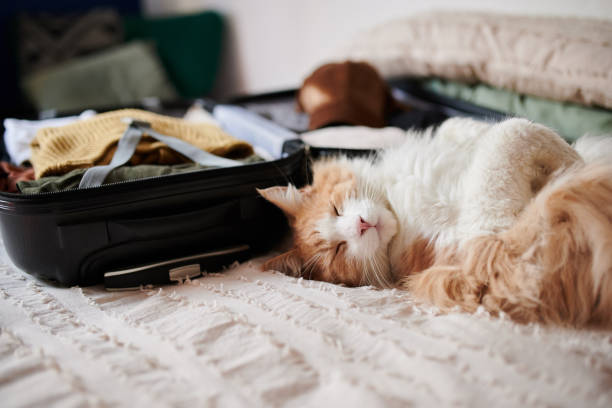
Should You Give Your Cat a calmative for Travel?
How do i know that my cat is stressed.

Types of Cat Calmatives to Calm Your Cat
Gabapentin:, acepromazine:, benzodiazepines:, natural cat sedatives, kitty pheromones:, herbal remedies:, cat sedatives vs anti-anxiety medication for travel, how to sedate your cat for travel safely, consult a pet doctor:, monitor your kitty:, keep familiar items close:, avoid feeding just before travel:, side effects of sedation in cats, drowsiness:, loss of balance:, change in behavior:, physical symptoms:, final thoughts on cat relaxant for travel , cat tranquilization for travel – faqs , q: what are the common types of relaxants for cats, q: are sedatives safe for my cat, q: can i calm my cat for travel without consulting a pet doctor, q: what should i do if my kitty experiences side effects from a relaxant, q: are there natural alternatives to relaxants for cats, q: how can i help my cat feel relax during car travel, q: is it safe to sedate a cat for travel, q: how can i keep my cat calm during long car rides, q: what sedative options are available for traveling with my cat, q: can i sedate my cat for airline travel, q: how can i help my cat sleep during plane travel, q: what should i do prior to travel to prepare my cat for the journey, q: is it common for cats to experience anxiety during car travel, q: can i use over-the-counter medications like benadryl to relax my cat during travel, q: what are some tips for keeping my cat relax and relaxed during pet travel, leave a reply cancel reply.
Your email address will not be published. Required fields are marked *
Save my name, email, and website in this browser for the next time I comment.
Anum Basit is the founder of PurrfectJourney, a cat travel blog that provides expert insights and advice for cat owners who love to travel. As a lifelong cat lover, Anum has gained extensive knowledge and experience in the field of cat travel. She understands the unique challenges that cat owners face when traveling with their feline companions and is committed to providing informative and engaging content that helps them navigate these challenges with ease. Anum's passion for cat travel has inspired her to create a platform where cat owners can find valuable information and resources for traveling with their furry friends. Follow her on PurrfectJourney for the latest insights and tips on cat travel!

Cat Sedatives: When and How to Use Them
Even the calmest of cats may feel stressed, nervous, or fearful in certain situations.
This can lead to a variety of issues, including inability to perform a veterinary exam or grooming. With severe or long-term stress, quality of life can be impacted. Anxiety in cats can even contribute to physical illness.
Below we discuss common situations when cat sedatives may be helpful, and how to use them safely and effectively.
When Do Cats Need Sedation?
In some short-term situations — such as during a veterinary visit, while trying to trim mats out of the fur, or loud fireworks — a reasonable amount of anxiety is expected. But if a kitty’s stress is severe, they may try to escape the situation and end up becoming lost or injured in their panic. Or, they may bite, scratch, or injure a human.
Sedation or anxiety-reducing medications can help prevent both of these scenarios. They can also keep a cat happier by making a potentially stressful situation much more comfortable for a feline.
There are also some pets who struggle with long-term anxiety. For example, maybe an older cat is unhappy about a new kitten housemate. Or, a cat may have general anxiety due to their personality type or a previous trauma.
Kitties who fall into this chronic stress category may benefit from long-term medications.
This is especially true for cats whose stress manifests in physical symptoms. A common example is cats with interstitial cystitis, an inflammatory condition of the urinary bladder. In cats prone to this condition, stress can bring on a flare up that requires veterinary treatment.
How Do I Know If My Cat Is Stressed?
Cat communication often appears subtle to human beings. But once you know what to look for, it may be easier to spot a potential problem in the early stages.
Here are some common symptoms of stress or fear in cats:
- Making themselves appear as small as possible.
- Ears back or flat against the head.
- Hair standing up.
- Pupils (black part of the eyes) expanding.
- Meowing excessively.
- Attempts to escape or hide.
- Loss of appetite.
- Signs of aggression, such as growling, hissing, spitting, or trying to scratch or bite.
- Behavior changes, such as grumpiness, playing less often, or hiding more.
- Urinating outside of the litter box.
Affected cats may show just 1-2 symptoms, or several. And context is important. For example, a cat’s pupils may also become larger during playtime, and that’s perfectly normal.
Since some of the above symptoms can also indicate a serious medical condition, it’s important to call your vet or schedule an appointment before assuming these signs are stress related.
Prior to prescribing a sedative or anxiety-reducing medication, a vet will perform a physical exam, and possibly diagnostic tests such as bloodwork. This helps rule out underlying medical conditions as a cause of the cat’s symptoms. It also helps ensure a cat is healthy enough for sedation.
How Is Anxiety in Cats Treated?
Stress reduction in pets should always involve some form of behavior modification or environmental changes.
A simple example of behavior modification (a type of training) would be leaving the cat’s carrier out in the home all the time and placing treats inside. Over time, the cat may come to view their carrier as a fun place rather than a scary place.
Done properly, behavior modification can have excellent results for some pets. However, improperly performed, it can reinforce anxious behaviors. So it’s always important to seek guidance from a professional (a veterinarian, veterinary behaviorist, or specialty trainer with expertise in pet anxiety).
Environmental modification involves thinking about the world the way your cat perceives it and then helping them feel safer and calmer.
For example, many cats feel safe when they are hidden. For this reason, many vets will (if possible) perform a cat’s physical exam with the cat inside their carrier, where the cat feels hidden behind the carrier’s walls.
This trick can also be used for car rides. Covering the sides of a kitty’s carrier with breathable blankets creates a dark and quiet space to hide, which may help reduce a cat’s anxiety during travel.
Other common treatment methods include natural remedies, supplements, and sedatives or other medications.
Depending on the needs of a specific cat, sometimes a vet will start with natural remedies and a few tips for how to help a cat feel calmer in their environment. For some kitties, this is all that’s required.
For other cats, sedation or anxiety-reducing drugs may be needed. If that’s the case, whether it’s short-term or long-term, a veterinarian will help a pet parent find the best plan for their cat’s medications. Often, this means a trial and error period to see which medication and dose work best for an individual cat.
Need a vet? Book a visit.
What Are Some Natural Remedies for Cat Anxiety?
For cats with mild anxiety, a vet may recommend starting with these therapies prior to prescribing a sedative or anxiety medication:
- Behavior modification and environmental changes, such as those mentioned above.
- Supplements, such as L-theanine, Zylkene (hydrolyzed milk protein), or other calming formulations for felines.
- Pheromone products like Feliway , which release calming cat scent signals.
- A Thundershirt or other body wrap, which provides comfort by mimicking swaddling.
- Herbal treatments such as Rescue Remedy for pets.
- Catnip . Every cat reacts differently to catnip. For some kitties, they will be very playful at first, then get tired after running around. This “post-catnip crash” may be an ideal time for travel, grooming, etc.
Always check with your vet before giving any new medication or supplement, to make sure it’s safe for your cat and won’t interact with any medications they are already taking.
Don’t assume products labeled as “natural” are safe, either. Even natural therapies like certain essential oils can be toxic to cats.
Which Sedatives Are Used for Cats?
Different medications cause different sedative effects. And, two cats may respond differently to the same medication. So there’s no one-size-fits-all when it comes to choosing the best sedative for each individual cat.
Some medications make a cat feel sleepy. Others (known as “tranquilizers”) bring about calmness or reduce anxiety. And some drugs may have both effects.
Additionally, some medications have pain relief effects, while others do not. And some are best for short-term stressful situations (like fireworks or a vet visit), while others are used for long-term anxiety issues.
Below are some of the most commonly used options for cat sedation and tranquilization.
Benadryl (Diphenhydramine) is not technically a sedative. It’s an antihistamine that’s commonly used for relieving allergy symptoms. However, sedation is a very common side effect.
Benadryl is an over-the-counter cat sedative option with a good safety margin. However, it’s important to check with your vet for the right dose and formulation.
Side effects include dry mouth, increased heart rate, and urine retention. Cats with certain medical conditions (such as glaucoma, high blood pressure, or certain urinary problems) should avoid Benadryl.
Acepromazine
Acepromazine causes sedation and some anxiety relief. It may be given as an injection in the veterinary clinic, or acepromazine pills may be sent home. Acepromazine is often used as a cat sedative for travel, or given 30-60 minutes prior to a veterinary visit.
Since the medication causes low blood pressure, it’s not an ideal choice for cats with heart disease or cats who are ill.
Gabapentin is a medication that can be used for several purposes, including seizure control, anxiety relief, sedation, and pain management. It’s a common cat sedative for grooming, travel, vet visits, and other short-term events.
Gabapentin is generally considered safe in healthy pets, with minimal side effects. It’s often used in combination with other medications in pets who need a stronger sedative effect.
Trazodone offers both sedative effects and anxiety relief. This makes it a good choice for many situations, including grooming, vet visits, travel, storms, or fireworks.
Trazodone must be used with caution in pets with certain conditions such as a heart problem, and it must not be combined with certain other types of anxiety medications (SSRIs). But overall, it’s a safe and popular choice.
Alprazolam (Xanax)
This medication can help cats with anxiety during short-term stressful events like fireworks and storms.
Alprazolam may also be used for grooming, vet visits, etc. Since it doesn’t have a strong sedative effect, it’s often combined with sedatives for an anxiety-relieving boost. In some pets (especially younger animals), alprazolam can cause excitement rather than tranquilization.
Drugs for Long-term Anxiety Issues
Some kitties — such as those with severe or chronic anxiety, or those who suffer from stress-related cystitis — may need to take daily medications for a longer period of time. Common medication categories include selective serotonin reuptake inhibitors (SSRIs) and tricyclic antidepressants. Popular options include fluoxetine and amitriptyline.
Injectable Sedation
For some pets, oral medication doesn’t provide enough sedation or anxiety relief. These kitties may need injectable sedation administered by a veterinarian during a checkup, toenail trim, x-rays, or other procedure.
Injectable drugs at a veterinarian’s office are typically stronger than oral medications that are sent home, and thus only administered by veterinary professionals who are trained and prepared to monitor a pet to ensure their heart rate, breathing, and temperature all remain normal during sedation.
Sedation Versus Anesthesia
Sometimes, confusion arises when discussing sedation and anesthesia. In general, sedation is “lighter” than general anesthesia, which means that a cat will not be in as deep of a sleep (and may still be alert, depending on the specific medication that is used) while sedated. Sedation is usually administered by mouth or via an injection.
General anesthesia, on the other hand, involves a deeper level of unconsciousness, which is maintained by an inhalant (gas) anesthetic. This is required for surgeries, although sedation may be appropriate for less invasive procedures such as cleaning a minor wound, clipping mats out of the fur, or taking x-rays.
A vet might recommend a combination of sedatives to obtain a desired sedative effect. Always check with your vet before combining, though, as some sedatives (especially two SSRIs in combination) are harmful if given together.
What Are the Side Effects of Sedation?
Side effects vary with each medication, so it’s best to ask your vet for specific information about the drug your cat has been prescribed.
In addition to specific effects listed above, common side effects of sedation in cats include:
- Vomiting or diarrhea.
- Clumsiness or lack of coordination.
- Decreased blood pressure.
- Decreased ability to regulate body temperature.
- Occasionally, paradoxical reactions. This is when a medication has the opposite effect, i.e. causing excitement, reactivity, or aggression instead of sedation.
Because of some of these effects, it’s important to monitor a pet closely until they’re more awake, or as advised by your vet.
What Else Should I Know About Sedatives and Cats?
Here are some additional important tips for sedating a cat:
- Staying calm yourself may help, since many pets react to emotions or stress they sense from their human companions.
- Many vets recommend a “trial run” for sedatives. For example, if using a cat sedative for travel, give your kitty a dose at home before the big travel day to make sure the medication works the way you want it to.
- Many airlines don’t allow sedatives during travel, due to safety risks. This is especially true for pets flying in cargo who can’t be monitored, and for short-nosed breeds who are more prone to respiratory distress and at a higher risk with temperature extremes.
- If you have difficulty giving your cat a pill, talk to your vet about other options. They may recommend using injectable sedation at the vet clinic instead. Some medications also come in other forms, such as a transdermal formulation you apply to the skin. But these special formulations must be ordered well in advance. And some medications can be added directly to your kitty’s food so they ingest it on their own — but check with your vet on this first.
As you can see, there are many different situations for which cat sedatives can be used — and many different medications to choose from. After consulting a veterinarian, most pet parents can find an option that works well for keeping their kitty relaxed, happy, and safe.
Could your cat benefit from sedation? Schedule a telehealth appointment or in-person consultation with one of our caring veterinarians to learn more.
About the Author

Better care, Right when you need it
- Cat Behavior
- Health & Care
- Vet Approved
How to Sedate a Cat for Car Travel: 3 Effective Methods & Application Tips
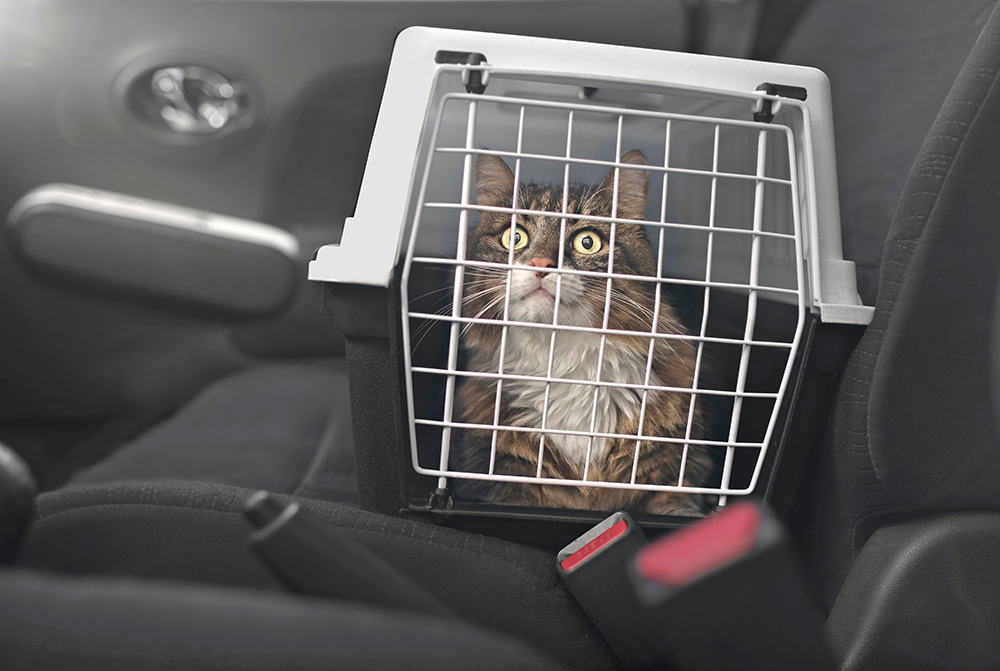
Image Credit: Lightspruch, Shutterstock
Last Updated on September 17, 2024 by Catster Editorial Team
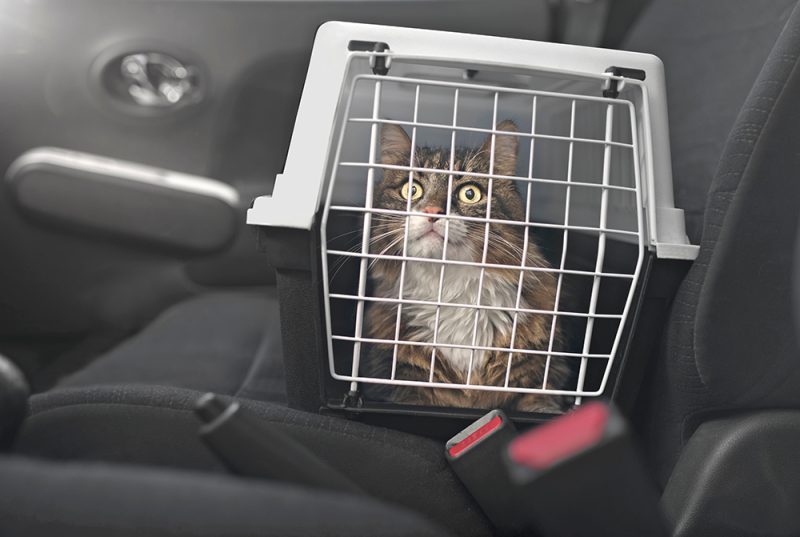
Click to Skip Ahead
Minimizing the upsetting events for your territorial-minded cat is the goal when you need to travel. Taking your feline friend away to an unfamiliar place or visiting the vet or even a new house is terrifying. Luring it to accept that you have to travel is a challenge. Plan the move tactically to avoid stressing out your cat.
Most cats get stressed when traveling. They try to hide in dangerous places like the pedals. Others are known to howl throughout the trip. There are even scenarios where cats try to escape and start scratching the car. That can stress out the driver and cause unnecessary stress.
To avoid all that, you have to sedate your cat. It is recommended that travel sedatives be given 1.5 to 2 hours before the travel. The common method most cat owners use to administer the sedatives is oral with food. But if you are dealing with a picky eater, you may want to explore other means.

What Are Cat Sedatives?
These are medications used to reduce tension and anxiety in cats when traveling. In addition, the sedatives offer physical and emotional stability. As a result, the cat stays calm, submissive and at times, it can sleep.
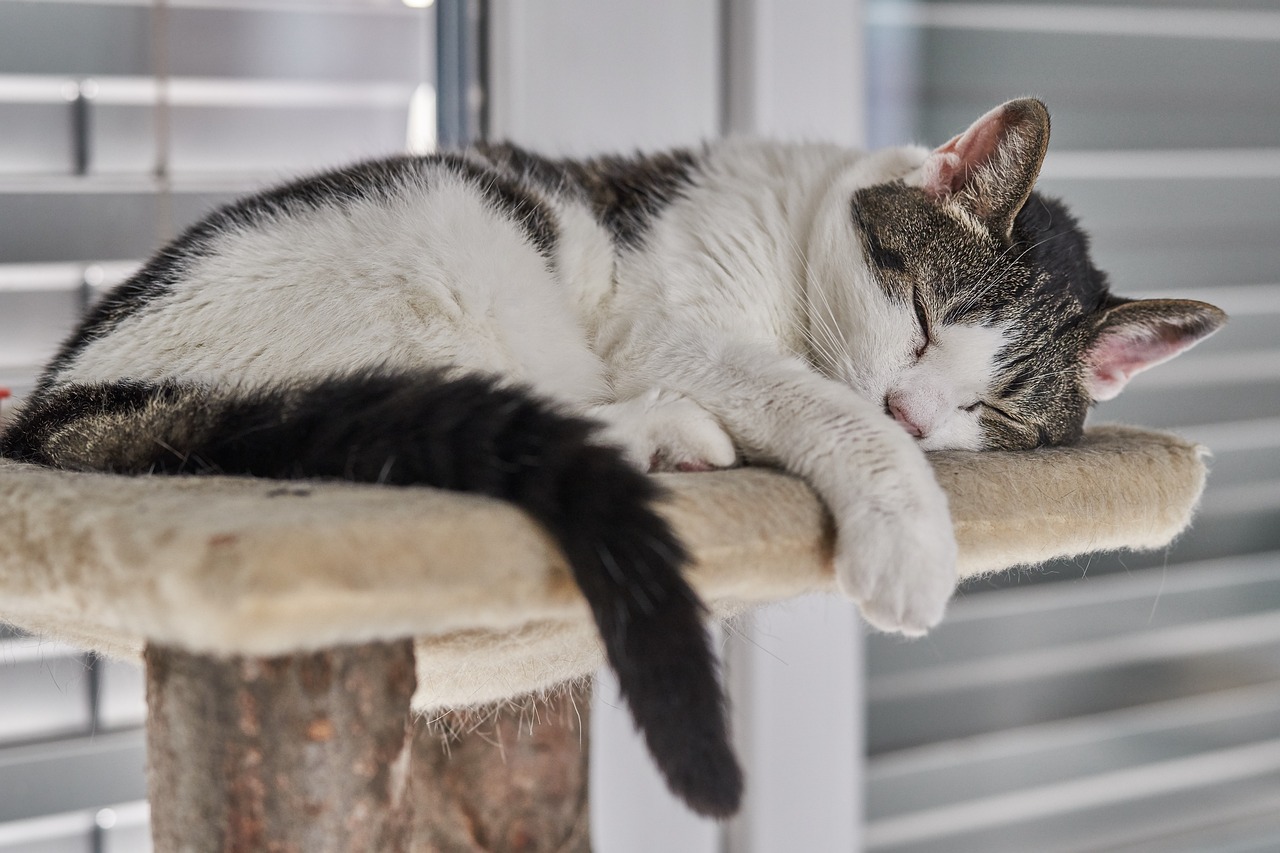
Different Types of Sedatives
We have some sedatives designed for cats. However it is not always the case since some have anti-anxiety that is the same as human sedatives.
So before administering the sedatives, consider seeking advice from your vet. But in case you have to do it over the counter, make sure your cat doesn’t have any underlying medical issues.

If you need to speak with a vet but can’t get to one, head over to PangoVet . It’s an online service where you can talk to a vet online and get the personalized advice you need for your pet — all at an affordable price!
- Benzodiazepines: It is a sedative that releases neurotransmitter gamma-aminobutyric acid activity that makes your cat relax and sleepy. The sedative is only given to cats without any kidney or liver complications. However, the cats can have side effects like vomiting, nausea, or aggression.
- SARIs: It is administered under the strict observation of a vet. The weight of the cat and heart condition is the primary determinant. That is because it can cause cardiac arrest for cats with heart conditions.
- Diphenhydramine: The drug makes the cat stay relaxed. However, the cats hate the taste of this medicine. It becomes hard to administer because the moment a can tastes it, they refuse to swallow. Therefore, it is wise to seek the vet’s approval before using this sedative. It is safe, though, and should be used 24 hours before the travel.
- Chlorpheniramine: It is available in pill and liquid form. It makes the cat feel drowsy and relaxed. In most cases, you can buy this medicine over the counter but be cautious. After buying, you can give the cat a few hours before the trip. Then, in case of any side effects, contact your vet.
- Gabapentin : It is a strong sedative that can make a cat sleep for around 8 hours. The beauty of this sedative is that it doesn’t have any taste. So, when giving your cat, it doesn’t sense it’s taking something strange. The recommended time is 2 hours before traveling.
- Clonidine: It’s a mild sedative, and in other occurrences, it is used to relieve pain relief to cats. The medicine triggers alpha adrenoreceptors in the brain that has effects on the heart rate. It can be administered 3 hours before the travel.
What Are the Side Effects of the Sedatives?
The side effects of the sedatives depend on the sedative you give to your cat. If you use the medical ones, the side effects will be different from the non-medical ones. However, here are the most common ones:
- Hard to breath
- Slow heart rate
- Aggression, etc.
Now, let’s look at the different methods that you can use to sedate a cat. Note these methods vary, and in case you have doubts about how to do it, always consult with your veterinary.
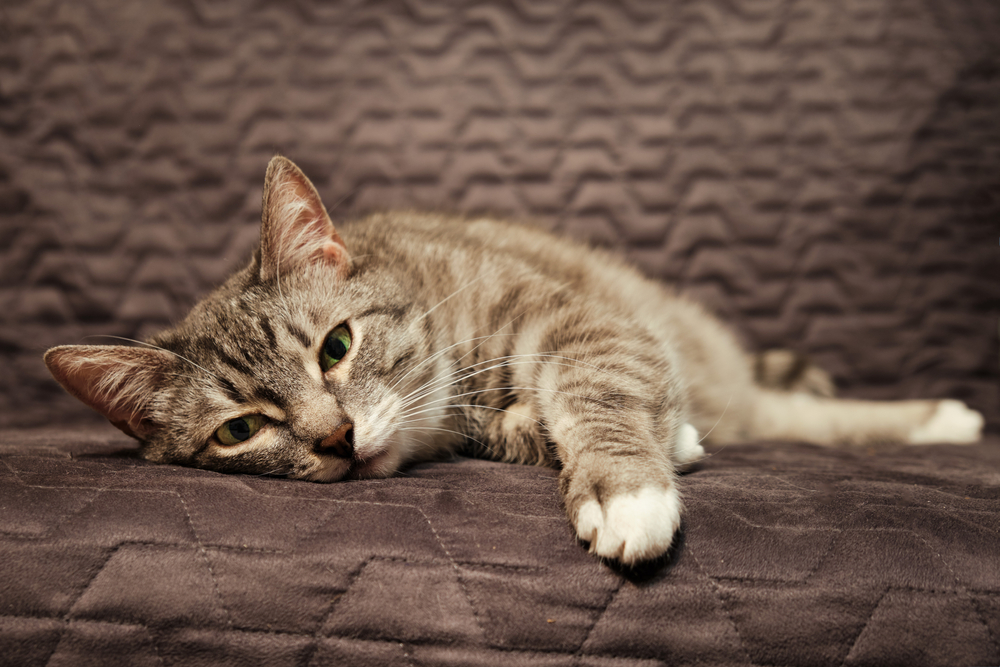
The 3 Methods to Use for Sedating Your Cat
There are several methods you can use to sedate your cat for car travel. Below are some of them.

1. Choosing the Right Sedatives
When you want to administer sedatives, there are so many things to consider. Things like the cat’s weight, age, and health conditions should be top on the list. Meanwhile, you can do the following:
- Visit the Vet. The vet will help you with the prescription and give you the sedatives you are supposed to use. If you opt to buy the sedatives over the counter, seek veterinarian approval for your pet’s safety. That way, you will have an idea whether the sedatives you have bought are of good quality. Then, again, the vet will check whether your cat is healthy and can use the sedatives. Ensure you discuss with the vet the duration the trip will take for proper medication.
- Analyze the Time Frame. It’s essential to know how the sedatives work and their time frame. Before buying the sedatives, discuss them with your vet. This is to ensure you have an idea of when to sedate your cat before traveling. Medication doesn’t work at the same time. Some have immediate effects, whereas others take some time. To avoid giving your cat the medicine at the wrong time, discuss with your vet when you intend to travel. From there, he will advise on the best time to use the sedative.
- Get Acquitted with the Sedatives. The vet has prescribed the medication but before administering it, understand them first. Then, you can discuss with the vet and get to know what sedative to use. As we discussed, different sedatives work for specific cats. Make sure you understand how they work. The purpose of that is to look out for any danger signs for your cat.
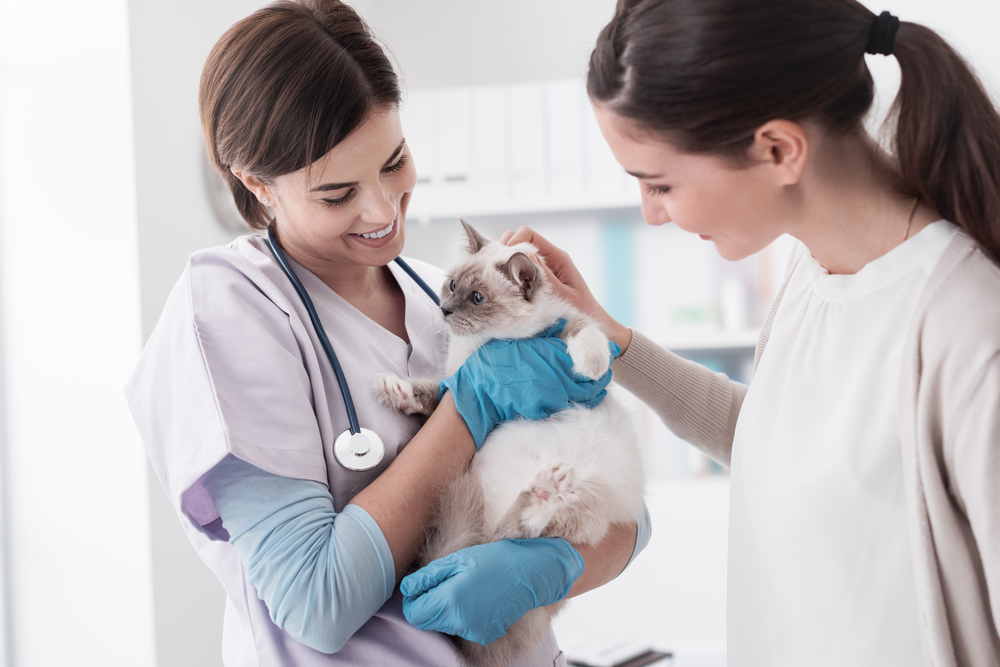
2. Use of Medications
You can opt to use medications as a way of sedating your cat. The procedure will involve several factors to make it a success.
- Do a Trial Test First. If you choose to give medication to your cat, make sure you give the drug at least a week before first. The aim is to see how the cat reacts after taking that medicine. After giving the medication, observe your cat for 12 hours; if you notice the cat is restless or dizzy, you can visit your vet for further discussion. Meanwhile, discontinue the medication.
- Prepare Your Cat. Before sedating the cat, prepare it first. Ensure the cat is calm and relaxed. Then take a towel or a cloth and wrap it. Make sure the head is not wrapped. You can also hold it between your legs. Alternatively, get someone to help you.
- Give It the Medication. When giving the medication, remember to follow the vet’s instructions. That is to avoid giving under or overdose. First, force your cat to open its mouth by adding some pressure using your thumb fingers. Once the cat opens its mouth, give the medicine.
- Make Sure it Swallows the Medicine. Cats can trick you, and don’t swallow the medicine. So hold it tightly while the head is facing upward. Rub it on the throat to ensure it swallows the medicine. Don’t release it fast but take a few minutes to ensure it has swallowed. To know whether it has swallowed the medicine, the cat will lick its nose.
- Use Alternate Methods. If the cat resists taking medicine orally, you can use other methods. For example, wrap the cat and try using a pill gun. You can use it to drop the medicine without necessarily making the cat swallow it. Alternatively, you can also use liquid medication and mix it with some of its favorite food. But you must consult your vet first.
- Give the Medication Some Time to Settle. Once the cat has taken the sedative, you can now give it some time for the medication to take effect. As we discussed earlier, the sedatives take different times to react, so be patient. The cat should be relaxed and calm after that. In case you notice any signs of unconsciousness, let your vet know about it.
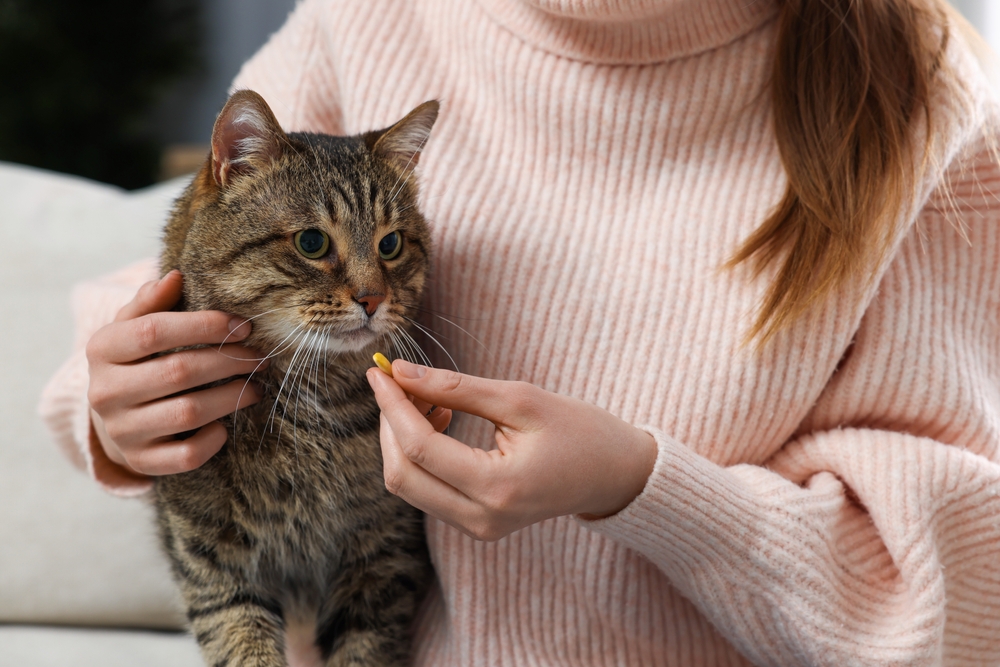
3. Using Non-Medication Methods
Non-medications can also be used to sedate a cat. For example, in the cat carrier , you can use the following to make the cat relax and calm down.
- By use of Pheromones. The pheromones can be used to keep the cat calm. They are either in the form of sprays , plug-in diffusers, or sprays. If you are using a carrier to carry your cat, you can administer them. When you plan to travel, consider introducing pheromones way before the D-day. Some of the available brands are Comfort Zone and Feliway.
- Body Wraps or Towel Wraps. When you wrap your cat, it calms down. The secret in body wraps is that it presses the pressure parts of a cat. The feeling makes a cat calm down and relax. Make sure you wrap it around its torso. If you opt to use a towel, wrap it around the body. That will give the cat a calming effect, and in case you want it to fall asleep, it can easily do that.
- Use of Supplements. There are supplements like Anxitane that offer relaxation. Anxitane is green in color, and it affects the brain causing relaxation. The cat can either chew or swallow. You can get the supplement in tablet or liquid form.
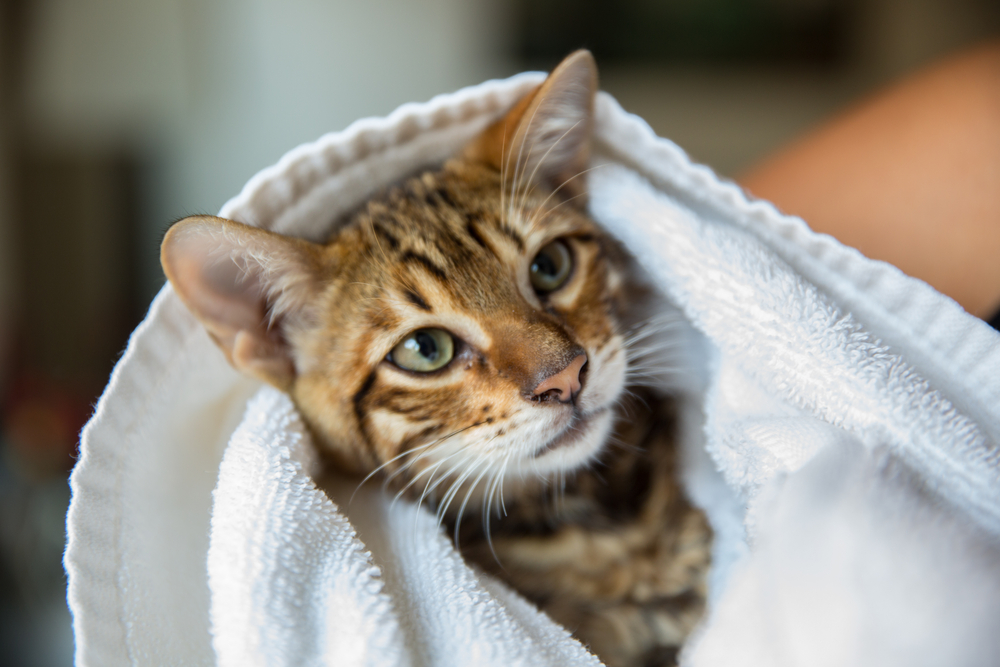
What If You Are Taking A Long Car Trip?
If you are taking a long trip , ensure that your cat is well settled in its crate. Strange smells and noise make even a calm cat want to escape. Use a car seat belt to secure the crate to avoid sending panic moods.
Some disturbances from unnecessary movement can make your cat freak out. It is advisable to let the cat stay in the back seat though not a must.
Additional Tips
Whichever method you choose to sedate your cat before travel, ensure that you take proper precautions. For example, please don’t buy a carrier on the day of travel. The cat will not be comfortable using it. Instead, you can buy a few weeks before and make sure you help your cat be familiar with it.
Use some soft clothing in the carrier and ensure they have your scent. Then, the cat will feel comfortable knowing that you are traveling together .
While traveling, you can try to place your hand near the carrier occasionally to give your cat some assurance. Don’t forget to carry some food for your cat.
Final Thoughts
Cats don’t like to travel to unfamiliar places, and that is why they get stressed. So traveling with a cat requires adequate planning. But before embarking on that journey, ensure you take the proper precautions.
Consult with the vet to ensure your cat is free from stress and anxiety. Traveling with your cat will be fun if you are sure the cat is comfortable.
- Why Is My Cat Panting in the Car?
- Boating With Cats Guide: Living Onboard, Seasickness & Things to Know!
Featured Image Credit: Lightspruch, Shutterstock
How useful was this post?
Click on a star to rate (you can leave written feedback after clicking submit)
Help us improve Catster for pet parents!
Your feedback really matters.
What did you like about this post? Also how can we improve it?
About the Author

Christian Adams
Christian started writing for a local newspaper as a teenager, and he's been involved in the publishing industry for most of his adult life. Combining his love of writing with a passion for animals, he is currently the Director of Editorial at Pangolia and the Editor-in-Chief at Catster. Christian lives in the Philippines with his wife, son, and four rescue cats: Trixie, Chloe, Sparky, and Chopper.
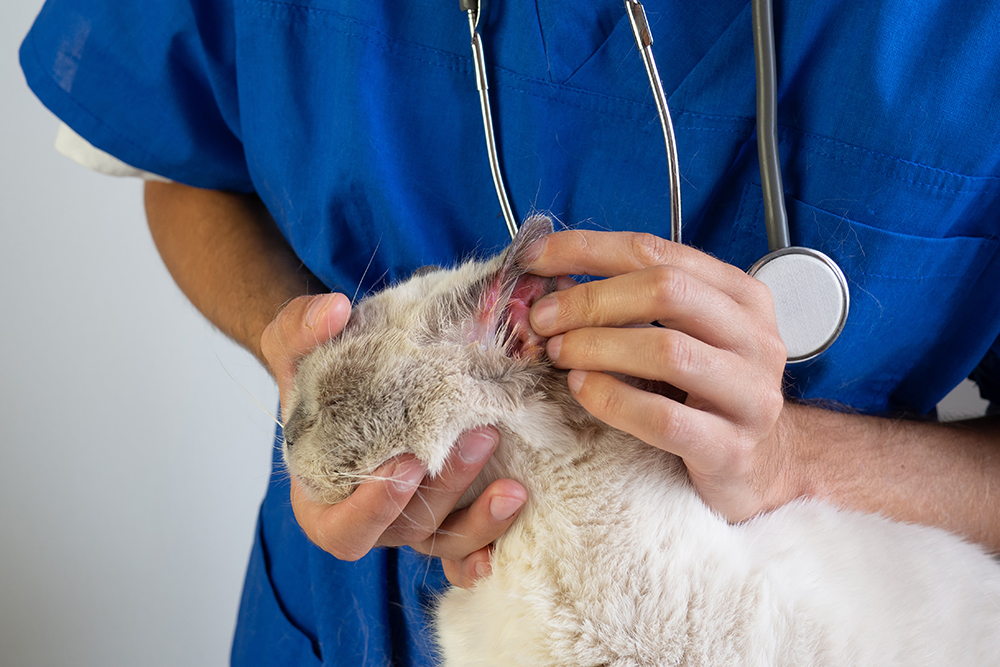
Yeast Infection in Cats (Malassezia Dermatitis): Our Vet Discusses Signs, Causes & Treatment
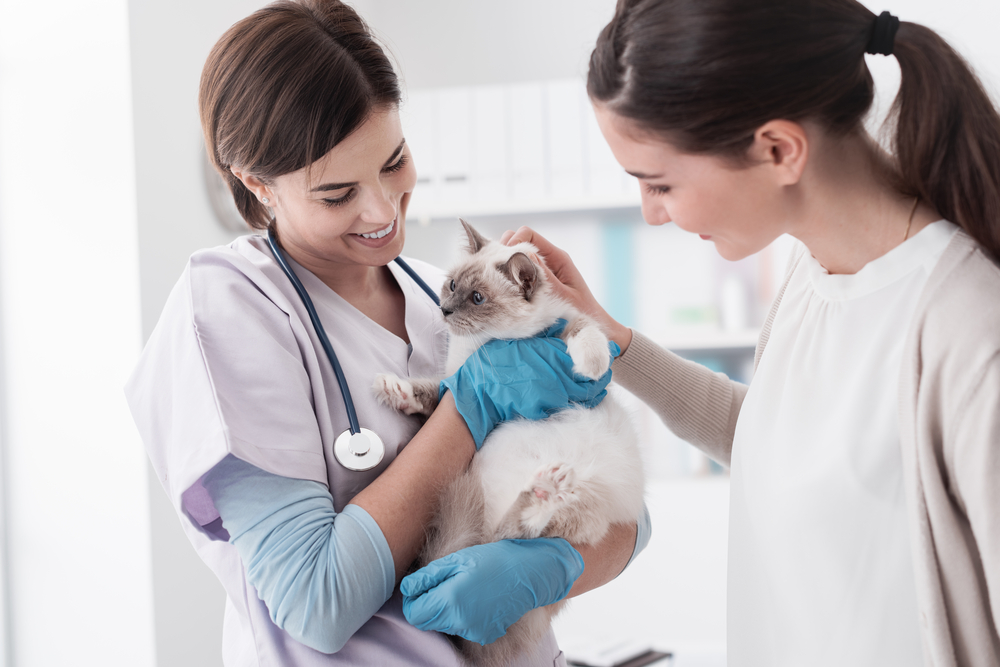
How to Save Time at the Vet? 11 Vet Approved Tips for Being Efficient at the Vet
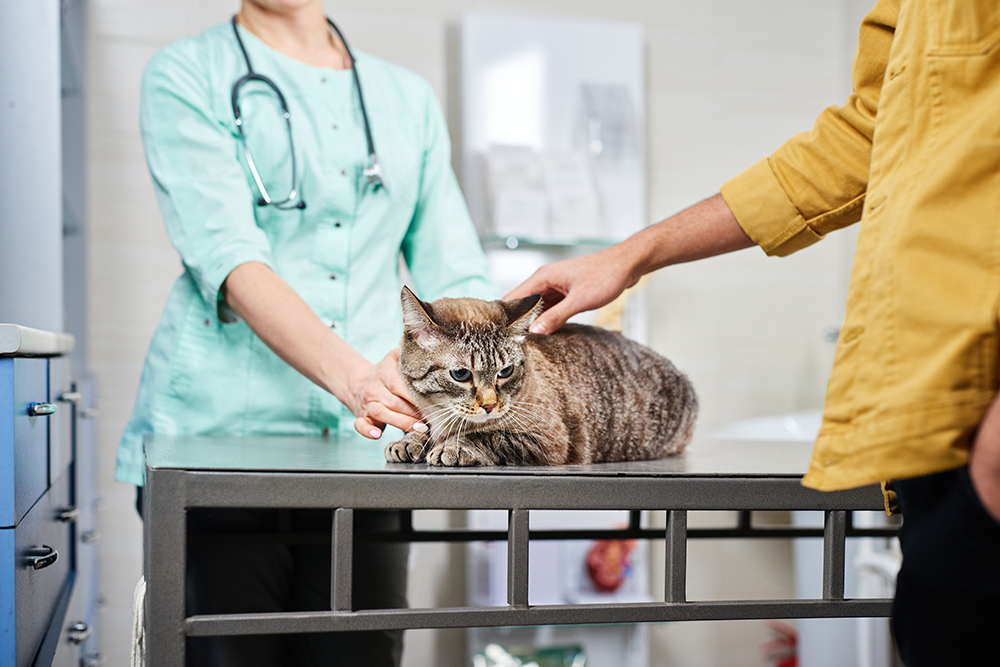
Bone Marrow Cancer in Cats: Our Vet Discusses Signs, Causes & Treatment
Leave a reply cancel reply.
You’re very welcome to leave a comment or question. Please know that all comments must meet our community guidelines, and your email address will NOT be published. Let’s have a positive and constructive conversation.

Get Catster in your inbox!

Things I’ve Been Wrong About (And I’m Not Too Proud to Admit)
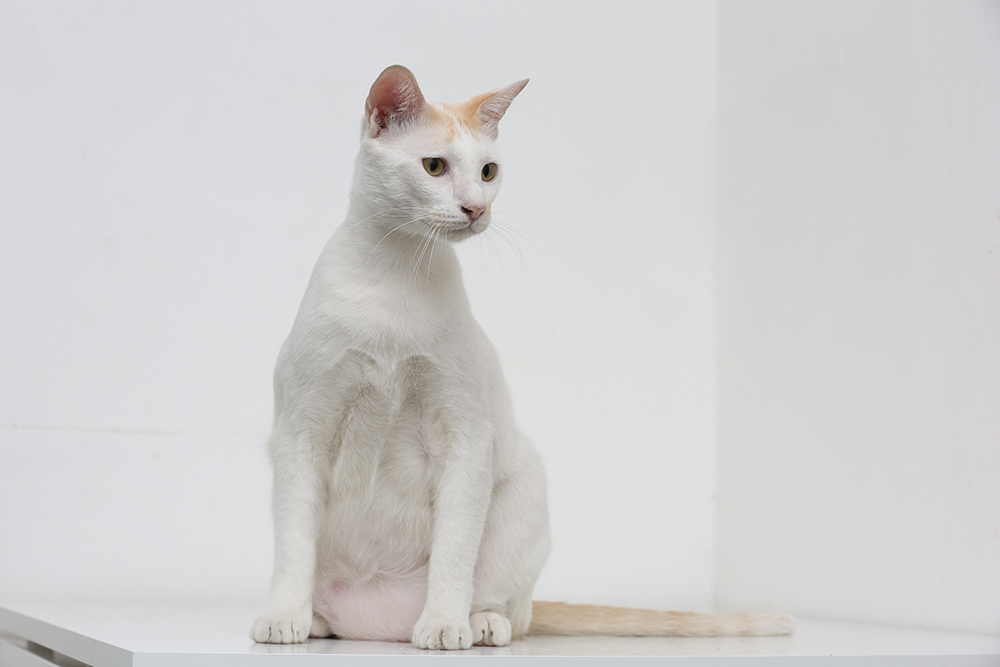
Why Is My Cat’s Primordial Pouch So Big? Normal vs Abnormally Large (Vet Verified)
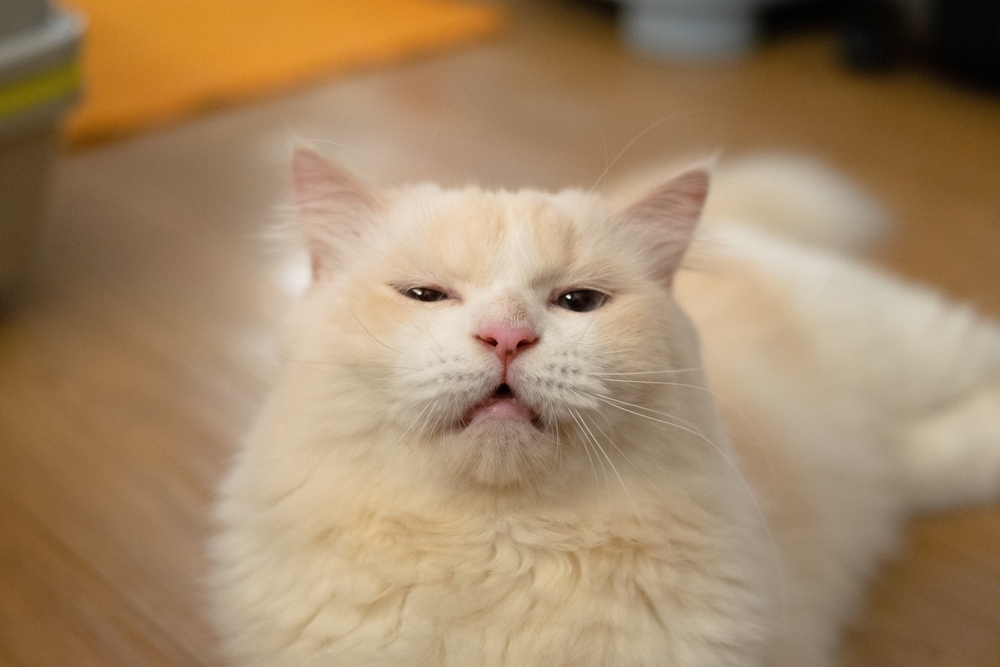
Why Do Cats Open Their Mouth When They Smell? Reasons Explained (Vet Answer)
© pangolia pte. ltd. all rights reserved..

- Search Please fill out this field.
- Newsletters
- Sweepstakes
- Living with Pets
- Traveling with Pets
Should You Give Your Cat a Sedative for Traveling? Here's What You Need to Know
Stressful events may call for a sedative to calm an anxious or fearful kitty.
Janelle is a cat mum to two resident adventure kitties, Lyra and Atlas, and numerous cat and kitten fosters. Janelle and her furry family enjoy filling their days with hiking, kayaking, and seeking out the best cat-friendly destinations around the Pacific Northwest. You can follow Janelle, her adventure kitties, and adoptable fosters at @paws_pdx.
:max_bytes(150000):strip_icc():format(webp)/janelle-leeson-58f2c77d4a4b4b3c994938e0e0618d57.jpg)
Are Sedatives Safe for Cats?
- Should You Give Your Cat a Sedative for Traveling?
- Cat Sedatives vs. Anti-Anxiety Medication
- How to Sedate Your Cat for Travel Safely
- Cat Sedation Side Effects
Many pet parents request sedatives when traveling with their cats. Not all cats are thrilled to travel, and many have trouble handling the stress. But at one time or another, your cat may need to face her fear and buckle up for a car ride or other means of travel, especially if you're moving . The good news is that she doesn't have to face this fear alone. If your cat shows signs of travel anxiety or fear after adequate training, she might benefit from a cat sedative for travel.
If your cat has a moderate to severe fear of travel that she can't seem to shake, it might be time to help her find relief with cat sedatives. While no medication is 100 percent safe for cats, only your veterinarian can determine if your cat is healthy enough for sedatives, says Katherine Pankratz DVM, DACVB, a certified veterinary behaviorist at Animal Behavioral Clinic in Portland, Ore. The benefits of a calm kitty may outweigh the risks, but Pankratz notes that sedatives could impact your cat's blood pressure, heart rate, and respiratory rate depending on her health and the type of travel.
Every kitty is different, so ask your veterinarian to recommend not just the best sedative for cats, but the best option for your cat—you may be surprised to learn your kitty doesn't require medication at all.
Do Cats Need Sedatives for Travel?
If your cat tends to be vocal, drool heavily , pant , or otherwise act distressed or abnormal when traveling, she might benefit from the use of sedatives.
Not quite ready to try cat sedatives for travel? Shelley Knudsen, DVM at All Feline Hospital in Lincoln, Neb. recommends these non-medication routes you and your kitty can try first:
- Feliway Spray
- Purina Calming Care Cat Supplement
- Rescue Remedy
- Royal Canin Calm Food
- Your cat's favorite catnip
These anti-anxiety over-the-counter (OTC) remedies, in addition to desensitization and counterconditioning training , may do just the trick for more enjoyable travels with your cat.
"Sedation is only one piece of the preparation for travel," Pankratz says. "It is very important to help prepare your cat for travel by training their comfort with travel itself." If your kitty still shows signs of stress after positive reinforcement and OTC calming aids, ask your vet if sedatives are right for her.
Cat Sedatives vs. Anti-Anxiety Medications
Cat sedatives work by coaxing your kitty into a state of sleep to keep her calm for long periods of travel—a useful tool for moderate to severe cases of fear of travel. Unlike anti-anxiety medications , sedatives don't target the negative, fear-inducing emotions your kitty experiences. While anti-anxiety medications may have a sedating component, they can be a useful coping tool for cats with little to moderate anxiety.
Talk with your vet about your specific pet so you can work together to find a treatment to help give your cat relief.
How to Safely Sedate Your Cat for Travel
Non-medicated calming aids such as pheromones are a-okay to purchase as an over the counter product and use at home. But if your finicky feline requires a medicated sedative, you should always consult your vet for safe dosing and administering.
Side Effects of Cat Sedatives: How Your Kitty's Behavior Might Be Affected Temporarily
Depending on the medication and dose as prescribed by your vet, your cat's behavior could range from Zen and sleepy to very groggy with difficulties walking. "Talk to your vet about the expectations and potential side effects of sedating medication. Sometimes, it is advised to perform a trial dose of the medication ahead of time to assess your cat's response prior to its need." Pankratz says.
For lighter doses of sedation, Pankratz says you can expect your kitty to return to normal behavior in about five hours or so. Stronger doses and medications could take up to a day to fully wear off. While your kitty slowly becomes more aware of her surroundings, and she gets her cat-like reflexes back, Pankratz recommends keeping her in a safe space. While a familiar space is best, surrounding her with familiar objects such as her favorite blanket can also provide comfort.
Related Articles
More related articles.
Am I a bad pet parent if I sedate my cat for travel?
Many cats aren’t at all fond of car trips, and if your travel also involves a plane, the experience can be downright stressful for your cat. While hopefully, your cat doesn’t have to travel far or often, there are some cases where cats are so anxious about a trip that it may be better to give your cat medication to help him cope. If your cat has a history of being anxious during trips, your vet might prescribe a cat sedative for travel.
Can I sedate my cat for travel?
Cat sedatives for travel, other solutions: cat travel anxiety medication, what can i give my cat to relax while traveling.
Like any medication, sedatives do pose some risks, so, if possible, your vet will avoid sedating your cat unless it’s absolutely necessary. Whether you’re planning for a trip across the country or know that your cat just doesn’t travel well, be sure to schedule an appointment with your veterinarian well in advance to discuss your options and come up with a solution that works for your cat.
According to VCA Hospitals , most cats travel well and don’t need to be sedated, but there are exceptions. If your cat doesn’t travel well, your vet might suggest that you try some different strategies, like using a ThunderShirt or pheromones to help keep her calm.
Emergency Vets USA notes that if your cat experiences anxiety while traveling, your vet may recommend sedation. It’s essential that if you sedate your cat you are able to monitor her during the trip. If you’ll be flying with your cat and she needs to travel in the cargo department you shouldn’t sedate her at all.
According to VCA Hospitals, your vet may prescribe medications like buprenorphine, gabapentin, or alprazolam. These medications help to reduce anxiety in cats and will encourage them to relax.
It’s important to follow your vet’s instructions precisely, and it’s a good idea to test out the medications on your cat while you’re at home to see how he tolerates them. This will give you the chance to contact your vet and make any necessary adjustments to find the dosage that works best.
Before you sedate your cat, you might want to try giving him medication to help control his anxiety first. Pet MD explains that there are many anti-anxiety medications commonly prescribed for cats. These include options like fluoxetine, sertraline, lorazepam, and trazodone. These medications typically won’t have the same effect that an actual sedative will have. Instead, they’re designed to reduce your cat’s stress and help to regulate his mood.
Many of these medications are given daily, but it may be weeks before they take full effect. They can also cause some side effects, so it’s important to discuss these possibilities with your vet, monitor your cat, and adjust dosages or change medications until you determine what works best.
There are several options available that will help your cat to relax, and these don’t have to be sedatives. Emergency Vets USA recommends spraying artificial pheromones in your cat’s carrier or having him wear a pheromone collar. The pheromones promote a sense of calmness for your cat.
You can also fill your cat’s carrier with familiar items, like a favorite bed or blanket and some of your kitty’s favorite toys. These things will smell like home and can help to reassure and calm your cat.
Don’t forget that there are many ways you can help your cat get used to traveling and better deal with that stress. Make sure that you choose a carrier your cat can comfortably fit in, and start by taking your cat on very short car trips. When you return home, let your cat out of the carrier and give her a treat. Repeating this process and taking the time to get your cat used to traveling, especially when it ends in a positive experience, can help make your cat more comfortable. Some cats will always find traveling tough, especially when going on longer trips, but any work you can do to help your cat get used to the idea can reduce the stress she feels.
Editors’ Recommendations
- What it means when your cat is constantly scratching and how to stop it
- Why do cats rub themselves against you? It’s not because they love you
- Are cats really nocturnal? You might be surprised
- Is it a big deal if your cat bites you? When you should be freaking out
- This is why your cat throws up after eating (and when it’s a problem)
- Getting Started
- Cat Behavior
- Health & Wellness

If your cat has access to the outdoors, then chances are you've seen him munching on grass at some point. This behavior isn't unusual for cats — Science reports that of 1,000 cat owners surveyed, 71% caught their cats eating grass at least six times since having the pet. Some cats may eat grass more often than others, especially if they spend lots of time outside, where they have plenty of access to the grass of their choice.
While it might seem strange that your cat eats grass, especially if they vomit it up afterward, this is pretty typical behavior. However, it's important to be aware of a few risks so you can help keep your cat safe. So, why do cats eat grass? Keep reading, as there are multiple potential reasons. Potential reasons why cats eat grass
Cats love their dinner — if you don't produce it right on time, you can bet you'll be serenaded with yowls until the meal appears. As with all of us, your pet will benefit from a strict meal plan for the majority of their food, but what about the occasional treat? It's fine, even encouraged to feed your kitty a snack now and then. We all know cats shouldn't really have milk, but can cats eat eggs? Yes, with some caveats. Can cats eat eggs?
We want to start with the basics: Cats really only eat meat, though their food might have other things sprinkled in to ensure a fully balanced and nutritious diet. Fortunately for you and your feline, eggs are high in protein and can be a perfectly healthy addition to their nourishment routine. Eggs include healthy fats, vitamins, and protein — all good things for a mouser.
If you've ever tried to bathe your cat or watched him come racing back into the house when the rain started, then you've seen just how much he hates water. Cats and water rarely mix well, and if your cat is tolerant of puddles and rain, then you have a pretty rare kitty.
For most felines, water is a thing to be dreaded and avoided, but there are actually many reasons behind that behavior. Your cat's aversion to water is caused by a combination of instinct, physical reactions, and past encounters. So, why do cats hate water? The answers can help you better understand your cat's behavior and lead to better bathing experiences. We'll also walk you through how to give a cat a bath that hates water. Lack of preparation

Everything You Need To Know About Cat Sedatives For Travel
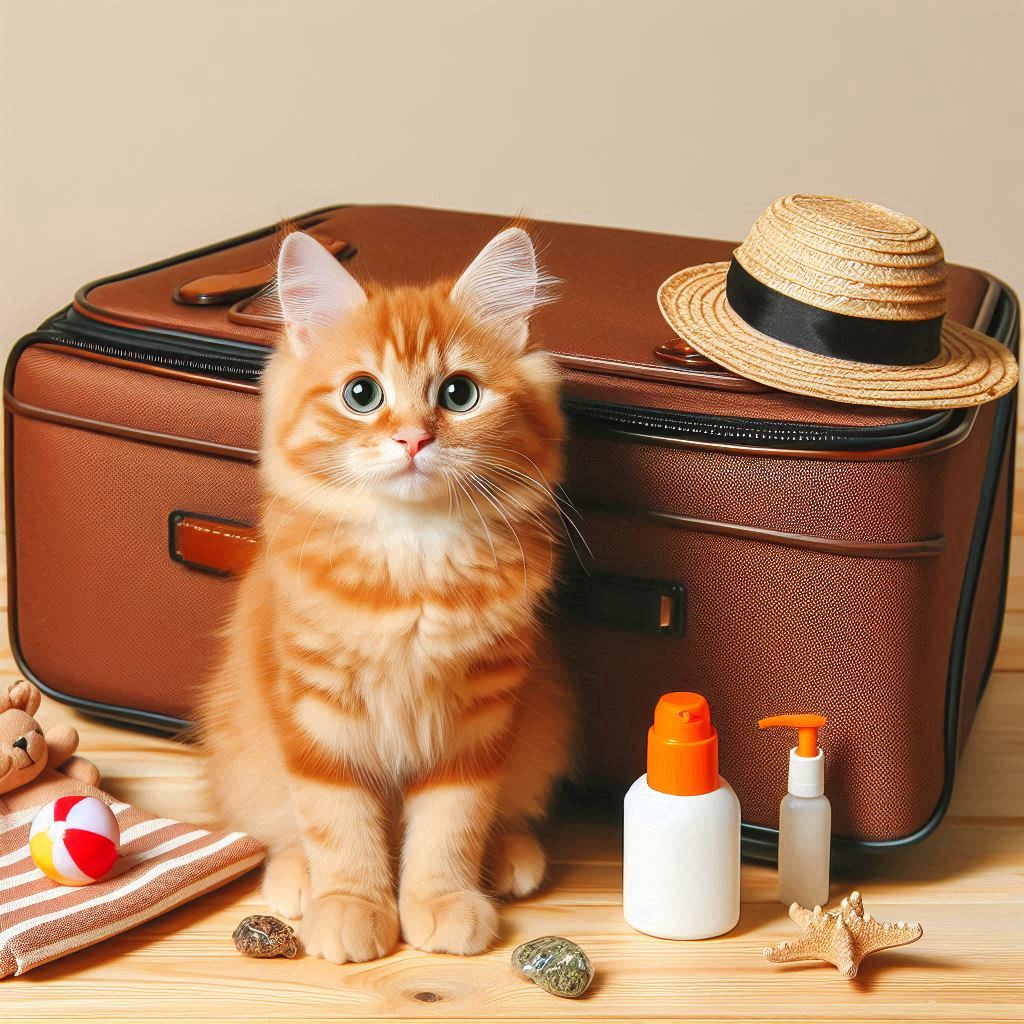
What Are Cat Sedatives?
According to Wikihow , cat sedatives can help your cat sleep and/or keep your feline friend calm during a long car ride.
Using a cat sedative is often a highly effective way to keep your cat calm while traveling.
How effective is a sedative when you’re traveling? Sedatives are medications used to reduce anxiety and tension in stressful situations.
A lot of cat owners don’t know anything about various types of tranquilizers and how their cat will be affected by the medication. A variety of pet tranquilizers are available by prescription from your veterinarian and are administered orally or by injection.
Cat sedatives are designed to get your cat relaxed, so it isn’t stressed out or make them sleep. Cats may need sedation for road trips, air travel, or going to the vet. Anxiety is what causes a lot of cats to react to unfamiliar situations.
Keeping a cat sedated during travel is not only better for the cat’s emotional and physical state but will help with your cat’s behavior during the trip. The cat may not sleep for the whole trip but will be more submissive.
Are Cat Sedatives Exclusively Designed For Cats?
While some cat sedatives are exclusively designed for kitties, some of them contain the same active ingredients that are in anti-anxiety medications for humans.
What Types Of Cat Sedatives Are There?
If you’re considering an over-the-counter sedative for your cat instead of a prescription, you should always talk to your veterinarian first, especially if your cat has any medical issues.
Veterinarians commonly use tranquilizers that are gas-based for medical procedures. However, isoflurane, sevoflurane, and halothane are only useful for a short duration and aren’t practical for cat owners to use.
According to Vetinfo the most common method that cat owners use to sedate their cats are sedatives in pill form.
The six main kinds of cat sedatives are benzodiazepines, diphenhydramine, chlorpheniramine, gabapentin, clonidine, and SARIs. Each of these medications affects a different mixture of neurotransmitters.
Cats that get stressed and don’t do well when they’re traveling can often benefit from being given Benadryl. The calming effects of the drug can help to keep your cat from getting motion sickness, in addition to giving them some quiet time during the trip.
[amalinkspro_table id=”1841″ aff-id=”undefined” new-window=”on” nofollow=”on” addtocart=”on” /]
This YouTube Video explains effective methods of sedating a cat.
Here’s what you need to know about each type of medication:
Benzodiazepines
There are several types of benzodiazepines that are used to sedate cats, and they all are pharmacologically similar to the prescription medication Valium. They increase the levels of a neurotransmitter called GABA.
The increased GABA levels help to keep your cat relaxed. Due to your cat’s small size and differences in metabolism, the dosage of benzodiazepines as a cat sedative is far smaller than what is prescribed to humans.
In addition, cats with liver and kidney disease generally cannot receive this medication, and these medications are not administered to cats who are pregnant. Benzodiazepines are available only by prescription.
Tranquilizers
According to PetHealthNetwork , As peaceful and quiet as many cat owners try to make their environment, there are times when a cat’s disposition changes and it can be due to stress.
Travel can be stressful for humans, but when you share your life with a cat, it can be even more stressful. A cat owner has three options when they travel.
- Hire a pet sitter
- Leave the cat at a boarding facility
- Take the cat on your trip
You could leave your cat at home and have a friend or family member who’s also a cat lover, care for your kitty. You could ask for recommendations from your veterinarian about pet sitters, or board your cat.
However, if you’re planning to take an extended trip, booking a stay at a kennel or hiring a pet sitter could be expensive.
If you happen to be moving to a new location, your cat obviously will go along. Before you leave, make sure you take all the necessary steps to keep your kitty calm and relaxed on the journey.
Some cats settle into their crate and get comfortable when you’re taking a trip. Other cats get stressed over everything, and you’ll experience every problem imaginable. Some cats don’t handle travel very well.
Strange sounds, smells, and sights can be stressful for your cat. Some owners choose to use a sedative to keep their cat calm when they’re traveling and being exposed to a lot of different situations and people.
For more details read: I’m Traveling. Are Tranquilizers Right for My Cat?
Diphenhydramine
Diphenhydramine is the active ingredient in the over-the-counter drug Benadryl.
Benadryl is safe to give to most cats, but the dosage of this medication as a cat sedative is far lower than the dose that is administered to humans. Benadryl is exceptionally effective for keeping cats calm.
Benadryl can also make it less likely that the motion of the car will cause your cat to vomit.
In most cases, you will give your cat 1/4 of the human dosage with a frequency of no more than twice a day.
It’s essential that the product that you choose only contains diphenhydramine. While it is safe to give a cat low doses of Benadryl, cats hate the taste of the medication.
Therefore, administering the medication can be difficult as cats tend to wretch when they notice the taste.
Despite the fact that it’s available over the counter, you should always talk to your vet before giving your cat diphenhydramine.
It’s important to make sure that the specific product that you choose does not contain any inactive ingredients that can be harmful to cats, and only a vet will know for sure.
Diphenhydramine has properties that make your cat feel calm. However, cats with certain medical conditions should not be given Benadryl. You should always discuss medications your cat is taking with your veterinarian before using over-the-counter medicine.
Your veterinarian keeps your cat’s medical records and will know how to adjust the dose of antihistamine, if necessary. It’s essential to follow your vet’s instructions to avoid any drug interactions.
The effects of giving your cat an antihistamine before you travel depend on several factors, including what the cat’s metabolism is like, how much the cat weighs, and how you administer the medication. The effects of the sedative may last from approximately 25 minutes to a few hours.
Gabapentin is a central nervous system depressant that’s a prescription medication for humans and cats. It’s exceptionally effective as an anti-anxiety medication for cats.
Clonidine is also a central nervous system depressant, and it’s also an exceptionally effective anti-anxiety medication for cats. It’s only available by prescription from a vet.
SARIs are known for being highly effective, but they often cause dizziness and disorientation. They cannot be administered to a cat with a heart condition.
Chlorpheniramine
This is an over the counter cold and allergy medication for humans in addition to being a cat sedative.
It’s an exceptionally effective anti-anxiety medication for cats. While it’s available over the counter, your vet will need to assist you in choosing the right product and administering the right dosage.
Phenobarbital
This medication is a central nervous system depressant, and it is an anti-seizure medication for humans. It is a narcotic medication.
Natural Calming Remedies For Cats
One of the most effective calming remedies for cats is cat calming spray. Your cat doesn’t have to take anything orally which could cause digestive upsets. Spray the mist into your cat’s crate or on a blanket or bed 30 minutes to an hour before he’ll be confined.
Allowing the extra time for the spray to penetrate the cat’s bedding will ensure that he doesn’t inhale too much of the spray. As the cat inhales the spray gradually, it will have a relaxing effect.
The critical thing to remember about the calming spray is to spray it in an area where the cat will be lying.
Some people are under the impression that catnip is only something to give to their cat during playtime.
Catnip does have an effect that causes cats to get excited, but it can also be calming. Catnip can generate a calming effect when it comes into contact with a cat’s smell receptors.
Catnip can soothe a stressed cat if they’re upset over different people or pets in the house. Catnip is available dry, as fresh leaves, or as a spray. The catnip may be sprinkled or sprayed around your cat’s favorite places to provide a calm environment.
One thing about catnip is that only about 50 percent of cats will react to it. In a cat’s brain, catnip is associated with urine, so a lot of them will behave as though they were in a heat cycle.
According to PetMD , Besides catnip, there are several herbs that can help to keep your cat calm. Some cats get stressed out easily because it’s part of their temperament. Other cats have a calmer demeanor.
The cats that save their freak out attacks for when they’re traveling with their owners or are going to the vet need a lot of help to remain calm. Here are some herbs that can help.
1. Flower essences are used to keep humans calm and stress-free, and they work well for cats. Although flower essence formulas aren’t an actual herb, the herbal ingredients combine to produce a calming effect quickly.
The thing to remember about this formula is that you must only use the variety that’s alcohol-free for your cat.
2. Chamomile is an excellent choice for cats who suffer from nausea or motion sickness when they’re traveling.
3. Hops are available in a dried flower form that can help to keep a cat calm and free of stress.
4. Valerian has a stimulating effect on cats in the same way as catnip. Cats shouldn’t be allowed to ingest the herb. You can rub a small amount of valerian root oil over a surface, and your cat will be ecstatic just sniffing it.
Applying pressure has a calming effect on humans and animals. One of the methods of keeping a cat calm is to use one of the shirts that apply pressure to the torso area. The theory of applying pressure as a calming effect is similar to a parent swaddling an infant.
These shirts apply gentle and constant pressure on the cat’s torso, which has a calming effect. The shirts can be used for grooming, trips to the veterinarian, noise anxiety from fireworks or thunderstorms, and for travel.
A lot of veterinarians recommend this type of calming method for cats that get stressed easily, and a lot of them use them for their pets that have anxiety issues.
For more details read: Six Ways to Naturally Sedate Your Cat
What Happens After You Give Your Cat A Sedative?
Do they take effect immediately.
There will be a period of time before the medication kicks in. The amount of time that it takes for the medication to kick in depends on the medication that your pet receives. What happens next depends on how your cat reacts to the medication.
Do They Always Sleep At Some Point During The Trip?
If your cat reacts strongly to the medication, he or she will go right to sleep. In other cases, your cat will simply become less active than usual. As a result, he or she will be less likely to resist being put in the crate or carrier .
You can also read:
- Size Matters When It Comes to Cat Carriers
- 5 Best Cat Carriers for Your Nervous Cat
- The Beginner’s Guide to Fly with Your Cat
- Save Your Furry Friend From Quarantine With A Pet Passport
He or she also will be less vocal than he or she would be without the medication.
However, it’s important to note that some cats may be calmer after taking a cat sedative but still find it difficult to sleep.
Will The Sedative Last For The Whole Trip?
It depends on the medication as well as how your cat reacts to the medication. However, it’s not uncommon for a dose of the medication to only last for part of the trip.
Discuss what to do if this happens with your vet. Some cat sedatives can be re-administered after a certain period of time has passed, but this isn’t possible with all medications.
When Should You Use A Cat Sedative?
You should never bring your cat on vacation with you. The only time that you’ll need to sedate your cat to travel is if you’ll be relocating. Cats find travel extremely stressful even if they are sedated.
Are There Side Effects Of Cat Sedatives?
All cat sedatives have side effects, but the specific nature of the side effects depends on the medication that you give your cat. In addition, different cats experience different side effects from different medications.
These are some of the most common side effects of cat sedatives:
- Excessive sedation
- Disorientation
If you notice any of these side effects, it’s important to seek veterinary attention immediately:
- Increased aggression
- Other gastrointestinal side effects
- Signs of an allergic reaction: itching, rash, swelling of the lips, face, or tongue, or
- difficulty breathing
- incoordination
- unusually slow heart rate and/or breathing
If your cat experiences any of these side effects after being given a sedative, contact your veterinarian immediately.
How Much Do Cat Sedatives Cost?
The cost of cat sedatives depends on the specific sedative that you are using. In addition, the cost of sedating your cat depends on the dosage of the medication that your veterinarian recommends.
Different veterinarians may charge different prices for the same medication. Larger cats typically require more medication. Therefore, it is likely to cost more to sedate a larger cat than a smaller one.
How Do You Administer A Cat Sedative?
You can disguise the pill:.
Cats don’t tend to be cooperative patients, but there are several ways that you can get your cat to take a pill. If the cat sedative is being administered in pill form, you might be able to disguise the pill in meat.
Will Your Cat Still Notice The Pill?
Your cat might simply enjoy the tasty treat without really noticing the pill. However, this method doesn’t always work.
Some cats tend to eat around the pill. If this method works, it’s generally the best way to get your cat to take a pill.
What Can You Do If You Can’t Hide The Pill In Meat?
If this method doesn’t work, you’ll need to essentially force your cat to take the sedative.
As you would expect, this is a difficult process that doesn’t always work. Some cats will spit the pill out or even pretend to swallow the pill.
Related: Quick Tips & Tricks on How to Give Your Cat a Pill
Will My Cat Try To Bite Me?
Maybe. If you have to use this method, it’s important to be very careful to avoid being bitten as cat bites tend to become infected.
Related: Kitten Bites! Understanding Why and How to Stop Them
Even the most agreeable cats could bite you if you try to open their mouth. Using the tips in this video can prevent your cat from biting you.
Are There Any Devices That Can Make Your Cat More Likely To Take A Pill?
A “pill gun” can make it easier to get your cat to take a pill. These devices insert the pill in a manner that is somewhat forceful, and it’s less likely that your cat will spit the pill out or pretend to swallow it.
How Will I Know If My Cat Took The Medication?
If your cat licks his or her nose after you attempt to get your cat to take a pill, it means that he or she swallowed it.
Are Liquid Sedatives Easier To Give Your Cat?
If it’s possible to give your cat a liquid sedative, this is almost always the best option. Liquid sedatives can often be mixed with food.
Can A Liquid Sedative Be Given To Your Cat With A Syringe?
If you cannot mix the liquid with food, it’s still usually easier to get your cat to take a liquid sedative than it is to get your cat to take a pill.
Are There Any Special Precautions That You Must Take While Using A Syringe To Give Your Cat A Sedative In Liquid Form?
While you can use a syringe to get your cat to take a liquid medication, it’s important to administer the medication slowly.
If you administer the medication too quickly, your cat could aspirate the liquid. This could be extremely dangerous.
Regardless of how you administer the medication, you should always try to get your cat in a calm mood before you administer the medication. This will make it less likely that your cat will protest and/or attempt to bite you.
What Causes Stress In Cats?
A lot of cats go through life seemingly relaxed all the time and are immune to stressful situations. However, it’s not the same for all cats. Some will get stressed over minor things like rearranging your living room furniture.
Cat owners don’t like to see their pet visibly upset because they know if they’re stressed they aren’t happy. There are many reasons a get suffers from stress. A bout with anxiety in your cat could be caused by people coming to visit that the cat isn’t familiar with.
Any changes in their environment or introducing a new pet into the family could be causes for a cat to get stressed. Stress in cats can manifest in different ways and aren’t only troubling for the cat emotionally but could cause physical harm.
These are some of the signs that indicate stress in a cat:
1. Aggressive behavior. A cat that’s stressed may become defensive or offensive. Some cats exhibit both types of behavior.
2. Finding a hiding place. When a cat that’s usually outgoing and friendly suddenly becomes withdrawn and wants to hide, it could be a sign that the cat is experiencing stress. A cat that’s stressed often wants nothing more than to find a quiet, hiding place and have seclusion.
3. Loss of appetite. If your cat is one that looks forward to every meal and suddenly has a loss of appetite, it could be a sign that there’s stress going on. It’s vital to get to the root of the problem, so your cat is consuming enough food to stay healthy.
4. Urinating in inappropriate places. If a cat starts urinating outside their litter box and medical problems have been ruled out, it could be a sign that the cat is feeling stress.
5. Grooming excessively. A cat that’s usually relaxed and starts grooming regularly may be feeling stressed. Some cats will spend so much time grooming that they begin to lose some of their furs, so it’s crucial to find out what’s going on to remedy the situation.
Tips For Cats With Travel Anxiety
If your cat tends to suffer from motion sickness or get agitated when he’s in the car Benadryl can be given twice a day, which averages out to 8-12 hours. The dosage is 0.5 to 2 milligrams for each pound.
Besides using Benadryl to keep your cat relaxed, you should take special care with the carrier you use for your cat when you’re traveling. It’s not advisable to buy a new carrier just before you make a trip and expect your cat to adjust quickly.
The carrier should be a place where he’ll be calm during trips. You should make the carrier as comfortable as possible to provide a relaxing environment for the cat.
Cats really are naturally curious and like to watch what’s going on. The crate’s location should allow them a good view of their owners or even a good view out the window.
Cat experts recommend making sure that something soft in the cat’s crate, like their bed or blanket, or article of clothing with the owner’s scent. A favorite toy inside the crate will also help keep your cat occupied.
While you’re traveling, place your hand near the carrier frequently, so the cat picks up your scent. Speak to your cat in a soothing, quiet voice. When the effects of the tranquilizer begin to work, your cat will start to calm down and feel relaxed.
Cats enjoy comfort food as much as humans so you can reward your cat with a favorite treat.
Taking a trip with your cat requires some careful planning. A lot of cats get anxious when they’re in the car for short trips. The veterinarian who treats your cat on a regular basis can prescribe the most effective sedative to keep your kitty calm and happy during the trip.
You’ll enjoy your trip more if you don’t have to worry about your cat’s anxiety and whether he may get sick.
Tips For Long Car Trips With Your Cat
A loose cat in a car is never a good idea, even if he’s usually well-behaved. Cats can freak out over little things that don’t affect other animals. Unusual noise or smell could cause them to try to hide somewhere they shouldn’t be.
Another possibility is that a cat that gets spooked might make escape attempts. The more panicked a cat gets, the more likely he or she is to act out, possibly with aggression. Some cats resist going into their crate but usually settle in after a few minutes.
Always remember to have the crate restrained by a seat belt, so it doesn’t get jostled around while you’re driving. A lot of movement will make the cat feel more stress and could result in an injury.
Your cat will be safest if the crate is in a back seat. Car airbags deploy with enough force to injure or kill a cat, even in a carrier. It is better to be safe than sorry.
Cat Sedative For Traveling In A Plane
According to WikiHow , There’s a lot of controversy about sedating a cat before traveling in a plane. Some cat parents are hesitant to sedate their cats because they’re heard stories from people about the negative side effects of sedation.
People can get anxious and feel stressed before a trip, and animals can sense their owner’s stress level. When you take your cat from its familiar environment and get on a plane, the cat may go into a panic.
Careful planning before any air travel will make the experience more pleasant for you and less stressful for your cat. The first thing you should do is to take your cat to the vet for a check-up before the trip. Discuss your apprehension with the vet and get recommendations.
Another issue to discuss with your veterinarian is any medications your cat may be taking. The tranquilizer prescribed for air travel mustn’t interact with any other prescription medications.
The veterinary exam is necessary to make sure your cat is up-to-date on all vaccinations and is healthy enough for air travel. Tranquilizers can affect a cat’s ability to control their body temperature.
Regulating a cat’s body temperature could be a problem if they must be in the cargo hold. Find out in advance which airlines allow a cat to be kept in the cabin and what restrictions they have.
If you’re using sedation for your cat, test the medication several days before your trip, so you’ll know what the effects are on your cat. If there are any side effects, contact your vet for a different medication.
If you prefer not to use prescription sedatives for your cat, there are several products available through pet suppliers and homeopathic sites that are natural. Among the ingredients in some of these supplements are taurine, chamomile, ginger, and dried hops.

Hi, This is Alexa, and I love cats. This Website is a Complete Journal about how to travel with a cat and other information about Cat Health, Cat Training, Cat Behavior, Cat Foods and more. I hope you find it useful.

11 Important Things to Know About Cat Sedation for Travel

We take pride in providing authentic travel recommendations based on our own experiences, which is documented through our travel photography and writing only about places we have personally visited. We may earn a commission when you purchase a product or book a reservation. This has no influence on our recommendations. For more information, please read about our approach to travel publishing. Learn more ›
Written by Vandita Jadeja
We often come across cats that do not enjoy travel. These cats get stressed and like to stick to their routine. They do not like change and love to stay on their home turf. These are several things to know about cat sedation for travel.
There are also many cats who have no problem traveling and are easy and fun as your travel companion. But if you have a cat who gets anxious and stressed during travel , your cat needs more care. A viable option is cat sedation.
You can make the road trip less scary for your cat, and you and your cat will have a better trip. Many cats prefer to hide in dark, confined places whenever they are scared, and these places make them feel safe.
By placing a dark piece of cloth on the carrier, you can help the cat feel safe and hidden. Only use a thin cloth because the cat’s respiratory rate will skyrocket when she is nervous or scared. Try taking your cat for a short ride in the car to get her to accept the new space.
Reward the cat once you reach home.

The purpose of the practice is to get your cat to associate being inside a car with something other than a visit to the vet. Only plan long car rides with cats when your feline friend is ready.
This might not work well with all cats, and if you notice that the cat is anxious and stressed after several car rides, you can only travel by considering sedation.
Sleeping pills , diphenhydramine , and benzodiazepines are a few things you can use for cat sedation for travel. Visiting the vet before you administer your cat any sedatives is recommended. If not administered properly, they can cause serious problems.
Let’s get into various ways to calm your cat for travel.
8 ways to calm your cat for travel
Sleeping pills.

There are sleeping pills for cats, and vets often use them before surgery. The medicine to calm cats for travel has a soothing effect on the cat.
You can purchase the pills on Amazon and in a pet store. Purchasing the pills alone is not recommended due to the possible negative side effects.
Use a prescription before you buy them because choosing random pills online can worsen the cat’s traveling sickness.
Do not give your cat sleeping pills for humans
Many might say that using sleeping pills for humans on the cat is fine, but it is not. Even a small dosage can harm the cat and sometimes become lethal. All cats have a different sleeping cycle than humans; giving them human sleeping pills can disturb their natural sleeping cycle.
When traveling with your cat, sleeping pills should be the last resort. If you need them, please consult the vet before buying any pills.
Veterinarians prescribe safe pills, so you do not need to worry about the negative side effects. It is recommended to use sleeping pills only when there is no other way to calm your cat.
Types of cat sedatives
It is important to know what cat sedatives are before you use them. Cat sedation for travel can help your cat sleep or remain calm during a long flight or car ride. It is an effective way to keep the cat calm when traveling .
Many sedatives are specially designed for cats, while others contain certain ingredients in anti-anxiety medicines for humans. Speak to your vet before sedating your cat for travel.
Mentioned below are different types of sedatives for cats.
Benzodiazepines

Used for humans and animals as sedatives, benzodiazepines are a different class of drugs. They can also be used as anti-anxiety and muscle relaxant medication.
When this drug is used on your cat, it will increase the release and facilitation of neurotransmitter gamma-aminobutyric acid activity. It will keep your kitty relaxed and a slightly sleepy cat.
Check with the vet before you use the drug on the cat. You cannot use this medication if your cat has liver or kidney disease. It is only available by prescription and can have side effects like vomiting, nausea, aggression, dry mouth, or agitation.
Be sure to test this method to reduce your cats’ travel anxiety in advance and discuss it with your veterinarian. Otherwise, consider the natural remedies and alternative methods below.
Diphenhydramine

This is an over-the-counter drug with the main ingredient as Benadryl, which helps in cat sedation for travel. The dosage is very low than that administered to humans. It is often recommended for cats that suffer from travel anxiety.
Diphenhydramine will relax the cat and can also treat motion sickness in cats. Pet owners should consult a veterinarian about the dosage and how to administer it best.

Cats that suffer from high blood pressure or glaucoma or have prostate problems and difficulty urinating should be given this drug. If the vet approves of this drug for your cat, it is best to start 24 hours before the trip for the drug to take effect.
Chlorpheniramine

Chlorpheniramine is an over-the-counter and oral medication used for colds and allergies in humans. It also helps prevent symptoms of allergy in cats. It has a side effect of drowsiness which makes it ideal for sedating the car for the duration of the trip.
The medicine does not require a prescription, but it is recommended to consult a vet before administering it. The most common dosage is 1 to 2 milligrams every 8 to 12 hours.
It may take a couple of hours for the drug to take effect. Hence plan the trip accordingly. The medicine is available in pill and liquid form.

An inexpensive drug, Gabapentin was developed to cure seizures in humans, and it also helps treat neuropathic pain in dogs, cats, and humans. The good thing about this cat sedative is that it does not have a very strong taste, and the cat might not realize she is taking any medication.
It is best to administer it two to 2 hours before the trip; the dosage will vary from cat to cat. There is a powerful effect of sedation, and holds up to 8 hours. Watch out for any side effects, including vomiting, vomiting ataxia, and a rise in salivation.

Clonidine is a sedative that is used as a muscle relaxant and for pain relief in cats and dogs. It stimulates the alpha adrenoreceptors in the brain and impacts the blood vessels, nervous system, blood pressure, and heart rate.
You can only buy the drug by prescription for cat sedation for travel, and it has a mild effect, so you do not need to worry about the cat being completely out of herself. It will take up to 3 hours for the drug to take effect.
See Related : Best Travel Trailers for Couples

Serotonin antagonists and reuptake inhibitors often cure anxiety disorders in dogs and cats. Trazodone is one such drug, and it has been used to sedate cats before veterinary exams.
You MUST consult with the vet before using the drug on your cat. The drug is fairly safe, but if the cat has a heart condition, it can lead to cardiac arrest. It will take effect quickly, and the dosage depends on the cat’s weight. It takes up to 12 hours for the drug to dissipate.
Other alternatives to sleeping pills for cats

Cat sedation for travel should be the last resort. It only makes sense to use sedatives if the cat suffers from high travel sickness or anxiety.
You can also consider fewer synthetic options, like using pet calming collars. They release natural cat hormones to make the cat feel relaxed and safe. Alternatively, you can use herbs that have a calming effect. Let us go over both options in detail.
See Related: Road Trips in America
Calming collars

Designed for cats that tend to be anxious, scared, or stressed in situations like traveling, the calming collars are easy and convenient to use. It is an innovative solution that helps modify stress-related behavior in cats through good behavior pheromone technology .
With this technology, the collar emits a pheromone that a mother cat produces to calm and reassure her kittens. The collar also has ingredients like chamomile and lavender that provide a soothing fragrance and helps the cat deal with fearful situations.
Using the collars when traveling with cats long distances via car is best. To use the collar , you need to place it around the cat’s neck and adjust it to fit the neck comfortably. You need to leave about 2 to 3 inches for adjustment. Once the collar is placed, you need to cut off the excess portion of the collar.
You will notice that white powder is released from the collar. It is this powder that will activate and free the pheromones. Wash your hands after placing the collar around the cat’s neck.
You need to remove the calming collar before you bathe or shampoo the cat, and if you want to apply it again, seal the collar in a plastic bag to prolong the effect.
If you notice that the cat behaves strangely after wearing the collar, remove it immediately to avoid any negative effects. Each cat may respond differently to this method to reduce anxiety.
See Related : 13 Reasons Why Traveling is Important
Calming herbs

If you do not want to use any medication on your cat, consider using calming herbs and flower essences as cat sedatives. You can use herbs like catnip that give an energy boost to the cat.
Give her catnip fifteen minutes before you hit the road, and once she is done running around, she will remain calm throughout the journey. It is a natural cat sedative for travel.
Chamomile also has a calming effect on the cat. The cat should be exposed to dried flowers. It has substances that act on the same brain area as an anti-anxiety drug and will help reduce travel anxiety.
An ideal way to administer the herbs is by putting them in the tube collar. The cat will benefit from the relaxing properties of the herbs and will not over-ingest them. You can also use a cat tranquilizer for this purpose.
Things to Know When Traveling with Pets

These tips for traveling with pets are helpful for most cats and, generally, pets. Most pet owners know their animals better than anyone else, so use your best judgment as well as consult one of the many veterinarians in your local area before traveling.
- Make sure your cat is comfortable with traveling before you take them on a longer trip . If your cat is used to car rides, it will likely feel comfortable in a new environment.
- Talk to your veterinarian about sedating your cat for travel . If your cat becomes agitated or stressed during travel, it can be dangerous for them and other passengers.
- Choose the right sedative for your cat . There are many different types of sedatives available, so be sure to ask your veterinarian which one would be best for your pet.
- Follow the dosage instructions carefully . Over-sedating your cat can have dangerous consequences, so it is important to administer the medication correctly.
- Make sure your cat has access to food and water while sedated . They may not be able to eat or drink independently, so it is important to provide them with sustenance.
- Keep an eye on your cat’s respiration . If they are having trouble breathing, it is important to seek medical attention immediately.
- Be prepared for accidents . Sedated cats may lose control of their bladder or bowels, so it is important to have something absorbent handy in case of an accident.
- Do not leave your sedated cat unattended . It is important to monitor them if they need assistance or have a medical emergency.
- When the sedative wears off, your cat may be disoriented . It is important to let them adjust to their surroundings before handling or moving them too much.
- Do not give your cat any other medications without consulting your veterinarian first . Some drugs can interact dangerously with sedatives.
- Be sure to have your cat’s medical records handy in an emergency . It is important to have all their information readily available in case they need medical attention while traveling.
How can I minimize the risks associated with sedating my cat?
There are a few things you can do to help minimize the risks associated with giving your kitty sedatives:
- Make sure only to give your cat the recommended dosage of medication. Giving too much can be dangerous.
- Do not give your cat sedatives if they are pregnant or nursing.
- Talk to your veterinarian about any other health conditions your kitty may have that could be affected by sedation during your trip.
Consider Leaving Your Pet(s) Behind

If your cat does not like traveling , it is best to let her stay home. This depends a lot on your situation. However, if you must take your cat, consult the vet to calm a cat in the car. If you know that your cat has mild anxiety, a light dose of a natural sedative can help make your trip easier .
There are different alternatives, and it is up to you to decide which option is the best for your cat. Remember to place some familiar items in the car while traveling to make the journey comfortable for your companion. You can put a blanket with your scent and some of her favorite toys.
Talk to her calmly and let her smell you by placing your hand in the carrier. Be around the cat during the first trip, and if you notice any change in the behavior or health, you need to contact the vet immediately.
Do not use herbs or any cat sedative for travel without making a veterinary appointment. Cat sedation for travel is not an ideal option if you travel frequently. You need to look for ways to get your cat used to traveling by taking her for short trips .
If your cat gets very stressed and does not enjoy sitting in the carrier, you might have to look for ways to leave your cat behind. It might not sound like a good idea, but it could be best for the cat.
How do I know if my cat needs to be sedated for travel?
This question has no definitive answer, as every cat will react differently to new environments and experiences. However, if your cat becomes very anxious or stressed in new situations, sedation may be necessary to make travel less stressful for you and your feline friend.
What are the risks associated with sedating my cat for travel?
As with any medication, there are always potential risks associated with giving your cat sedatives. Some of the most common side effects include drowsiness, disorientation, and loss of appetite.
More serious reactions such as vomiting, diarrhea, and difficulty breathing can occur in rare cases. It is important to speak with your veterinarian about the potential risks before giving your cat any medication.
What type of sedative should I use to reduce my cat’s anxiety?
Sedatives come in a variety of forms. Therefore, it’s vital to consult your veterinarian about the various types. There are many different varieties of sedatives on the market, so choose carefully.
How do I administer the sedative to my cat?
The method of administration will depend on the type of sedative you are using. Some sedatives can be given orally, while others must be injected. Following your veterinarian’s instructions when administering medication to your cat is important.
Related Products
- Best Road Trips Books for Kids
- Best Van Camping Accessories
- Best Travel Kettles for RVs
Related Resources
- Travel Hacking 101
- Top Sites for Booking Tours
- Best Travel Credit Cards
Cat sedatives: Vet's guide to uses and sedating at home
Is your anxious kitty a handful? Cat sedatives can help
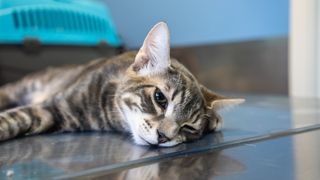
Your cat may benefit from receiving cat sedatives if they get frightened at stressful but necessary events like going to the veterinary clinic or travelling . Or perhaps if they become aggressive when you’re trimming their nails or grooming them at home.
Oral sedatives from your veterinarian can help reduce your cat’s fear and anxiety and make the fractious cat easier to handle. Before your cat needs to be sedated, it’s important to first consult your veterinarian to develop a plan to sedate your cat safely and effectively. Read on to learn more about using sedatives in cats and how they can help your cat.
- Best cat carriers: Keep your cat cozy and safe on your travels
- Best pet insurance: Essential cover options
Why would a cat need to be sedated?
Your veterinarian may recommend sedating your cat for veterinary visits if your cat tends to be very fearful, anxious, or aggressive in the veterinary clinic.
This not only helps your cat feel less stressed, but also ensures your safety and that of the veterinary team when handling your cat. Most importantly, your cat will be less fearful and will have a more positive experience during his or her veterinary visit.
Similarly, sedation may also be used to keep a cat calm during travel, such as long car rides, or in stressful situations such as moving to a new home. A sedative can make this process go more smoothly for both cat and owner by mitigating the cat’s anxiety and reducing the cat’s fear in this new and potentially scary situation.
Veterinarians also use sedatives to anesthetize your cat for certain procedures or prior to surgery. This ensures that your cat is safe, comfortable, pain-free, and immobile during the procedure. These sedatives are administered at the veterinary clinic under the supervision of the veterinary team.
How is a cat sedated?
There are several ways a cat can be sedated. If your veterinarian has asked you to sedate your cat prior to a veterinary visit, you will be given pills or capsules to be administered to your cat by mouth at home.
These pills may be given the night before the appointment and/or a few hours prior to the appointment. This ensures that your cat will receive the full sedative effect when it is time for the appointment.
A similar process may be used for other stressful events, such as car rides, moving, thunderstorms, or other scary happenings. Be sure to follow your veterinarian’s dosing instructions closely so that your cat gets the full effect of the medication but does not receive an overdose.
After receiving oral sedation medications, your cat will be calmer, more relaxed, and maybe a little groggy. Your cat will not be fully anesthetized or “out of it”. The sedation medication is just enough to take the edge off of your cat’s anxiety and should not put him or her fully to sleep.
In the veterinary clinic, a cat is often sedated using injectable sedative medications. These anesthetic medications are used to facilitate certain procedures or to prepare your cat for surgery.
The medication is injected either intramuscularly (IM) or intravenously (IV). These medications will fully anesthetize your cat or put him or her to sleep so that the procedure can be safely performed.
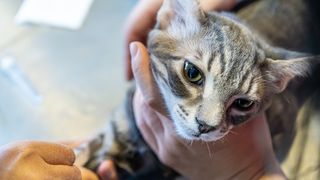
Can I sedate my cat at home?
Your veterinarian may prescribe one or two medications for you to give to your cat at home to sedate your cat for an upcoming event such as a veterinary visit or a long car ride.
Be sure to follow your veterinarian’s instructions closely to get the maximum benefit from the sedation while ensuring your cat is safe. With your veterinarian’s permission, it’s best to test the sedative at home on a typical day first, so you’ll know exactly how the sedative will affect your cat prior to the big day.
Never try to sedate your cat at home using over the counter treatments or home remedies. Sedating your cat at home without your veterinarian’s guidance can be very dangerous for your cat.
If you feel your cat needs to be sedated, speak to your veterinarian first. Your veterinarian will give you a safe and effective plan for sedating your cat.
What happens after my cat is sedated?
After your cat is sedated with oral medications, he/she may be a little groggy, sleepy, or quieter than usual. Your cat will not be completely asleep or “flat out”, but will still be awake and aware of the world around him or her.
The sedation will simply help take the edge off of his or her fear and anxiety to make stressful events go more smoothly.
After the scary event is over, your cat may sleep more than normal or may want to hide and be alone until the sedation has worn off. Once the sedation has worn off – usually within a few hours to a day – your cat will be back to his or her normal, happy self.
Veterinary visits, car rides, thunderstorms – whenever you may need to sedate your cat, make sure you’re doing it safely and effectively. Follow your veterinarian’s instructions to sedate your cat safely, and only use medications or supplements given to you by your veterinarian.
Be sure to follow your vet’s dosing instructions exactly, and never double the dose or re-dose your cat without first consulting your vet for instructions. Never use over the counter medications or home remedies to sedate a cat, as these may be dangerous for your cat, particularly if dosed incorrectly.
If you have any questions about sedating your cat or helping your cat through stressful experiences, contact your veterinarian for further advice.
PetsRadar Newsletter
Get the best advice, tips and top tech for your beloved Pets
Dr. Elizabeth Racine is a small animal general practice vet covering all things pet health and wellness. Her special interests include veterinary behavior, nutrition, and internal medicine. As a freelance writer, Dr. Racine has written content for major companies in the industry such as the American Kennel Club, Merck Animal Health, Bayer PetBasics, Elanco, and CareCredit. In her free time, Dr. Racine enjoys playing trampoline dodgeball, hiking with her beagle Dasher, and spending time with her three mischievous cats.
Vet shares five surprising dangers to be on the lookout for when walking your dog this fall
How to help children cope with the death of a pet
How often do you treat cats for fleas?
Most Popular
- 2 How often do you treat cats for fleas?
- 3 Hosting a party with a dog at home? Try this trainer's top tips to keep your pup safe when you're entertaining
- 4 32 types of show-breed cats
- 5 Training multiple dogs at the same time can be tricky, but this expert's advice will help make it easier
The Best Cat Sedation for Travel: Ensure Your Feline’s Comfort and Safety
Traveling with your cat can be a stressful experience for both you and your furry friend. Figuring out the best way to keep your cat calm during travel is crucial. Sedation can help make the trip more comfortable for your cat, especially if the journey is long or if your pet gets anxious.
When looking for the best sedation for traveling with your cat, safety, dosage, and the type of sedative are important to consider. Safety means making sure the sedative is approved by vets and is safe for cats. The right dosage differs from cat to cat, so it’s critical to follow veterinary advice. Types of sedatives vary, from natural herbal options to prescription medications. Each type has its own pros and cons, which you need to weigh based on your cat’s needs.
Choosing the right sedation method can help ensure a smooth and stress-free trip for both you and your kitty. Let’s dive into the options available and how to pick the one that’s right for your situation.
Best Cat Sedation for Travel
Naturvet quiet moments calming aid, naturvet hemp quiet moments for cats, vetriscience composure for cats, feliway multicat calming pheromone, charlie & buddy hemp oil, purina tidy cats lightweight free & clean unscented, fresh step clumping cat litter, cat crack catnip, nature’s miracle cat calming spray, pet naturals calming chews for cats, buying guide, safety first, effectiveness, form and dosage, possible side effects, ease of use, natural vs. prescription, traveling distance, experiences and reviews, more travel guides.
Getting your cat ready for a trip can be quite the task. Whether it’s a short drive to the vet or a long road trip , finding the right sedation can make all the difference. Here are the best products to help keep your feline friend calm and comfortable.
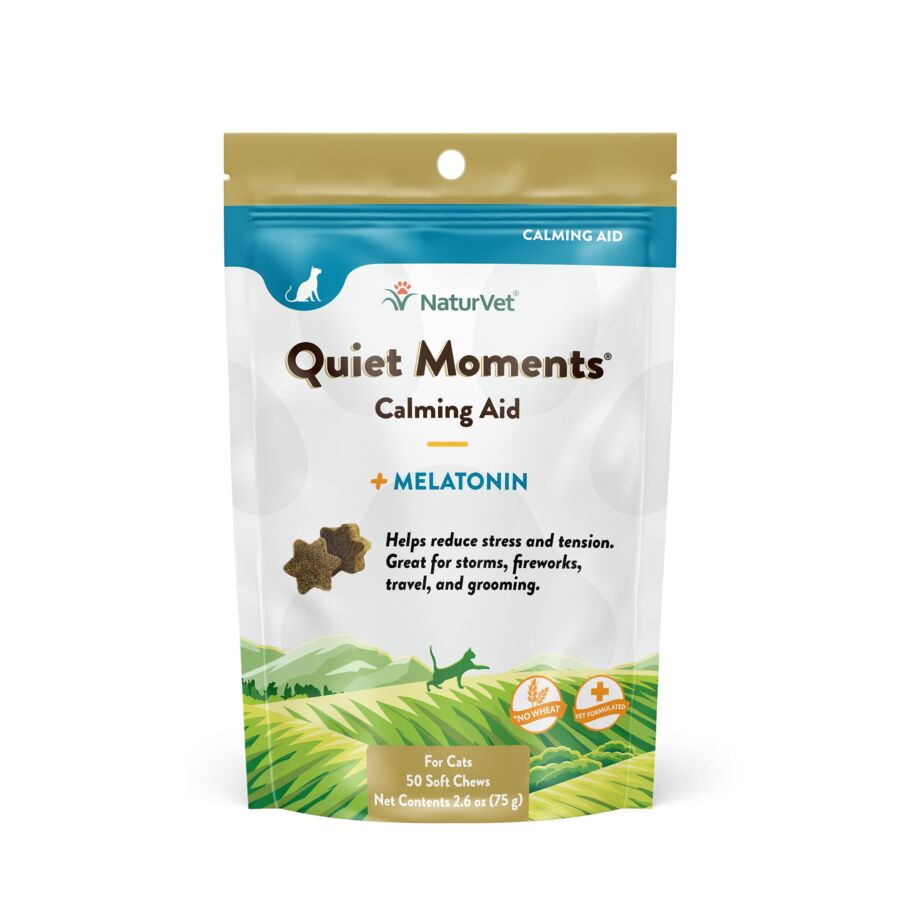
Great for easing your cat’s travel anxiety with tasty soft chews, but results can vary.
- Easy to give as a treat-like soft chew
- Contains melatonin to reduce stress
- Made in the USA, cGMP compliant
- Not all cats like the taste
- Effects might not last long
- May need to mix with food for picky cats
NaturVet Quiet Moments Calming Aid helps reduce stress for cats during travel. The soft chews contain melatonin, which is known to aid in calming. These treats are vitamin-enhanced, giving your cat the nutrients they need while traveling or when anxious. The treats are also wheat-free, which is a plus for cats with dietary restrictions.
Some users mention that their cats don’t always like the taste and refuse to eat them. If you have a picky eater, you might end up mixing them with other food. Additionally, while the calming effect works for some cats, it doesn’t work for all, with some owners seeing minimal results.
For those whose cats enjoy the flavor, these chews can make travel or trips to the vet more manageable. They’ve been around since 1994, and with their cGMP compliance, NaturVet offers a trustworthy option for calming your furry friend.
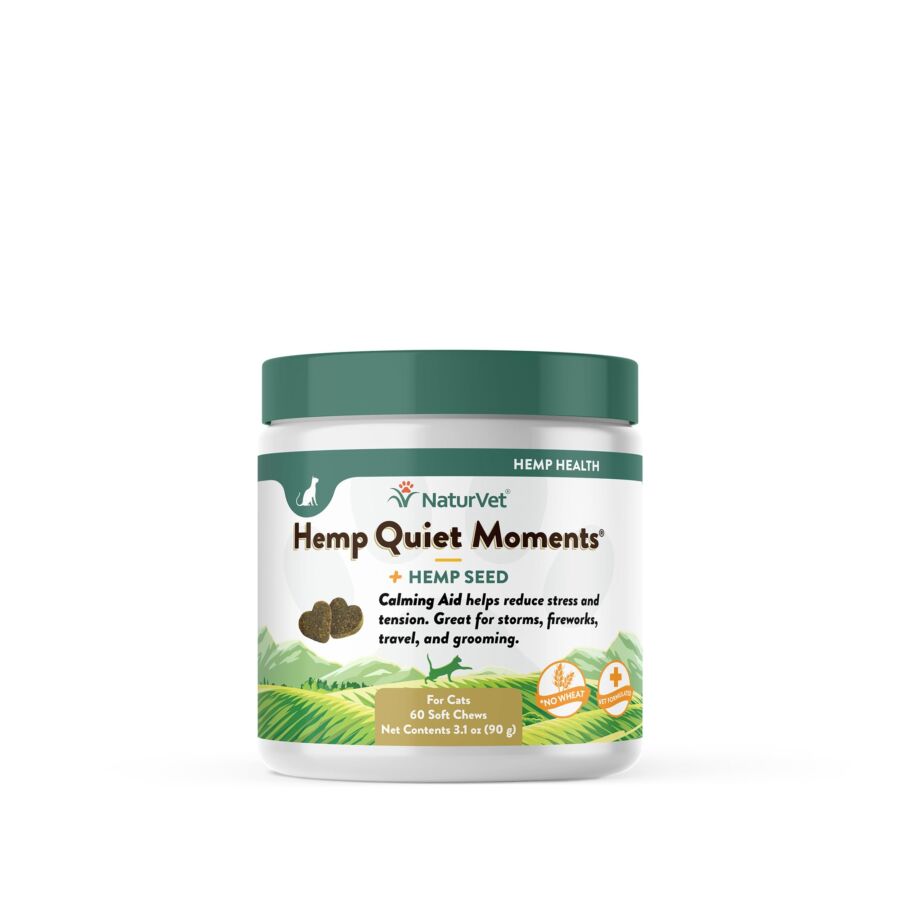
It’s a solid choice if you’re looking for a calming aid for your cat during travel.
- Offers a variety of calming ingredients
- Soft chews that taste like a treat
- Made in the USA with a satisfaction guarantee
- Mixed reviews on effectiveness
- Some cats may not like the taste
- Slightly higher price point for some budgets
NaturVet Hemp Quiet Moments blends calming ingredients like melatonin, thiamine, and L-tryptophan. These soft chews are designed to help your feline friend chill out during stressful times such as travel, fireworks, or vet visits.
One great feature is that these chews taste like treats, making it easier to give your cat their dose. Plus, they’re made in the USA, so you can feel good about supporting local manufacturing. And if, for any reason, you’re not satisfied, the product comes with a full refund guarantee.
On the flip side, customer experiences vary widely. While some cats love the taste and respond well, others refuse to eat the chews or show no noticeable change in behavior. The price might also be a bit steep depending on your budget. Despite these potential downsides, NaturVet Hemp Quiet Moments could be worth trying if you’re seeking a calming aid for your kitty.

This product can be a great choice if you need to calm your cat during travel or other stressful situations.
- Helps reduce anxiety in cats
- Easy to administer as chews
- Fast-acting relief
- Some cats may vomit after eating
- Product might arrive stale
- Can be expensive
If your cat struggles with anxiety during travel, VetriScience Composure chews could be a solution. These chews are designed to help calm your kitty without changing their personality. The flavor, chicken liver, is usually a hit with most cats, making it easier to get them to take it.
A notable feature is the fast-acting formula. You can use it daily or just when extra calming is needed. It’s made with safe, high-quality ingredients, free of artificial flavors and preservatives.
There are some downsides to consider. Some users have reported the chews arriving stale, and a few cats may experience vomiting. Also, the product can be a bit pricey. Nonetheless, for anxious cats, these chews might provide the needed relief.
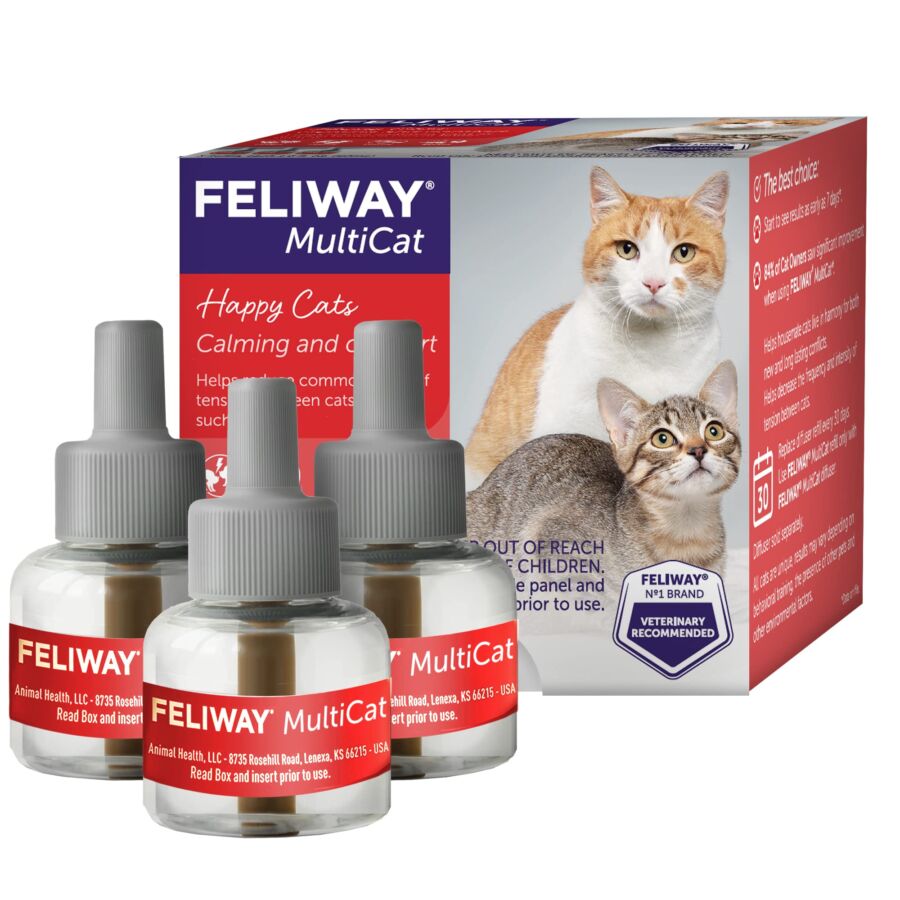
If you need a solution to ease tension among your cats, FELIWAY MultiCat might be just what you’re looking for.
- Reduces fighting and conflict
- Drug-free and safe
- Easy to use
- Diffusers not included
- May take time to see results
- Can be pricey
If your home is a battleground for your cats, FELIWAY MultiCat can help create peace. This product mimics natural pheromones to reduce tension and fighting. You’ll start seeing improvements in about three weeks, but it’s important to use it consistently.
You will get three refills in this pack, but remember, the diffuser itself is not included. Place the diffuser in rooms where your cats spend most of their time for best results. Make sure it’s not hidden behind furniture or curtains.
While FELIWAY MultiCat is not the cheapest option, many cat owners swear by it. It’s a drug-free solution, so you don’t have to worry about giving your cats medication. Just plug it in and let it work its magic.
Splitting up the text like this helps in reading. Each paragraph keeps things clear and easy. Long blocks of text can overwhelm, breaking it down makes it simple.

This hemp oil can help calm your pets during travel and make the journey more pleasant.
- Reduces anxiety
- Eases chronic pain
- Promotes better sleep
- Effects may not last long
- Some pets may not like the taste
- May not work for every pet
This Charlie & Buddy Hemp Oil aims to make traveling with your cat much less stressful. It’s known for relieving anxiety, so if your pet has a hard time staying calm, this could help. The oil promotes relaxation and supports better sleep, which is a bonus during long journeys.
On the flip side, some users have noted that the effects don’t last as long as they hoped. You might need to keep an eye on how your pet reacts and be ready for another dose. And remember, not all pets might like the taste, which could be a bit of a challenge.
If your pet often struggles with chronic pain or arthritis, this product can provide relief while traveling. It’s designed to ease joint pain, which is great for older cats. Just keep in mind, results might vary, and some pets might not respond as well.
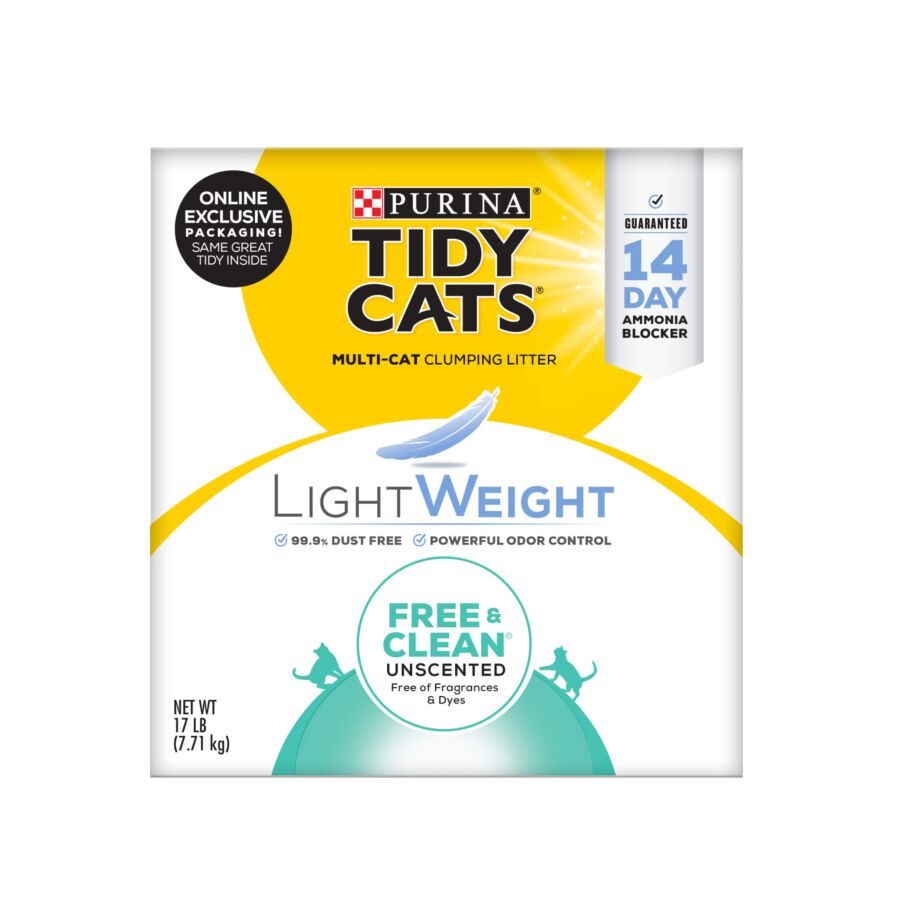
Purina Tidy Cats LightWeight Free & Clean Unscented litter is an excellent choice for those looking for a hassle-free, effective solution to keep their cat’s litter box fresh and clean.
- Lightweight and easy to carry
- Excellent clumping for simple cleaning
- Effectively controls odor with activated charcoal
- Tends to track around the house
- More expensive than average litters
- Some users report short overall lasting time
This Tidy Cats litter is remarkable for its lightweight nature. You won’t break your back carrying it from the store to your home. The clumping action is a game-changer, making the scooping process quick and straightforward. Activated charcoal is great for neutralizing smells, ensuring your home remains fresh.
However, the ease of use comes with a few drawbacks. The litter tends to track outside the box, leading to more cleaning around your home. It’s also pricier than some other brands, which might be a consideration if you’re on a tight budget. Additionally, a few users mention it doesn’t last as long, requiring more frequent purchases.
Despite the cons, this product simplifies litter maintenance and provides a fresh living space. If you’re willing to deal with some extra sweeping now and then, it could fit well into your routine.
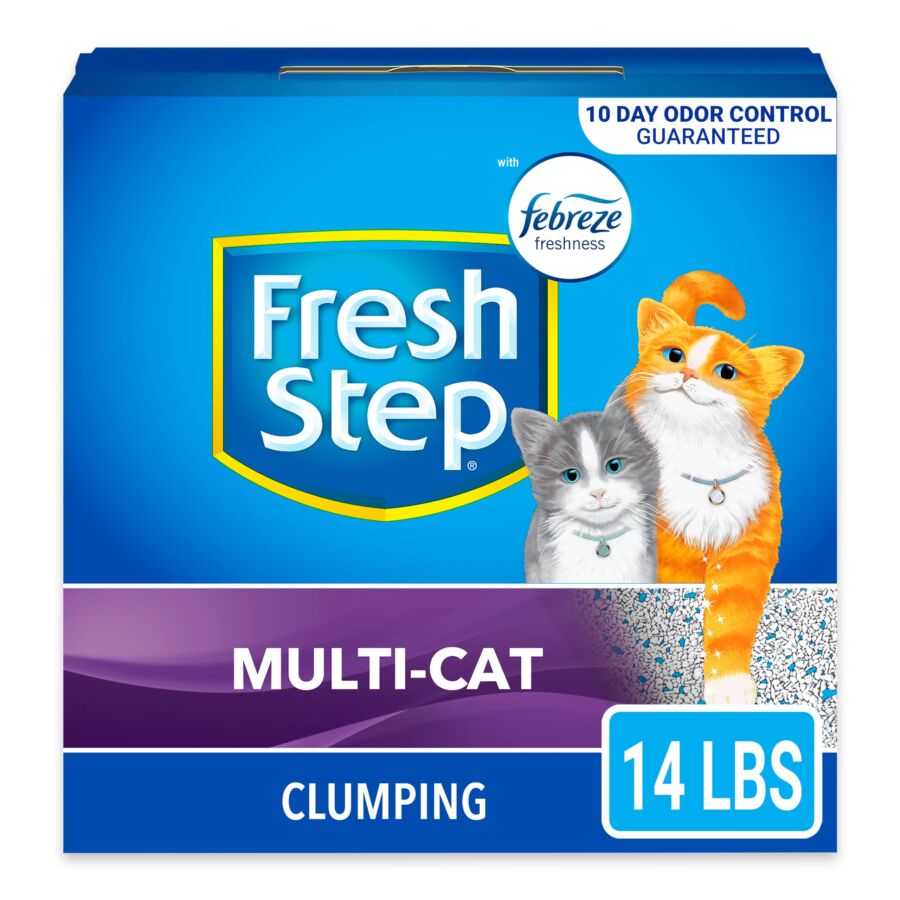
A solid choice for anyone looking to keep their home odor-free and clean.
- Excellent odor control
- Easy to clean clumps
- Low dust formula
- A bit pricey
- Can be dusty during pouring
- Slightly heavy package
If you’re juggling multiple cats, Fresh Step Clumping Cat Litter helps you maintain a fresh-smelling home. Its clay formula, with ClumpLock Technology, clumps tightly to make cleanup quick and straightforward. Plus, the addition of Febreze freshness means every step your cat takes releases a pleasant scent.
This litter also impresses with its ability to control bacterial growth, thanks to Ammonia Block Technology. The low dust formula reduces mess, keeping surfaces and air cleaner. It’s perfect for households where cleanliness is a top priority.
While the benefits are clear, it’s not without a few downsides. The litter can be somewhat dusty during pouring, which might be bothersome for some. Additionally, it’s a bit on the pricy side, which could be a consideration if you have a lot of cats. Despite these points, its efficiency and odor-fighting power make it a worthwhile investment.

Perfect for keeping your cat entertained and happy during travel .
- High potency
- Non-GMO and natural ingredients
- Versatile use
- Some cats might not react
- Packaging could be better
- Could be messy
Cat Crack Catnip provides a potent blend of Nepetalactone that really gets cats excited. Made from high-quality natural ingredients, it ensures your feline friend gets the best without the worry of harmful additives. The North American-made product makes it feel like a luxurious treat for your pet.
You can use this catnip in various ways. Sprinkle some in their carrier to help keep them calm or use it on toys to make travel a bit more fun. Versatile and easy to integrate into different parts of your cat’s life, it’s not just for play.
On the flip side, not all cats will enjoy it, which can be a downside. It comes in a small jar that isn’t very airtight, so some freshness might be lost over time. And if your cat is a bit messy, you might end up with catnip all over the place.
Nonetheless, if you’re looking for something to keep your kitty occupied, this could be the product for you. The high rating from many satisfied cat owners suggests this product really delivers.
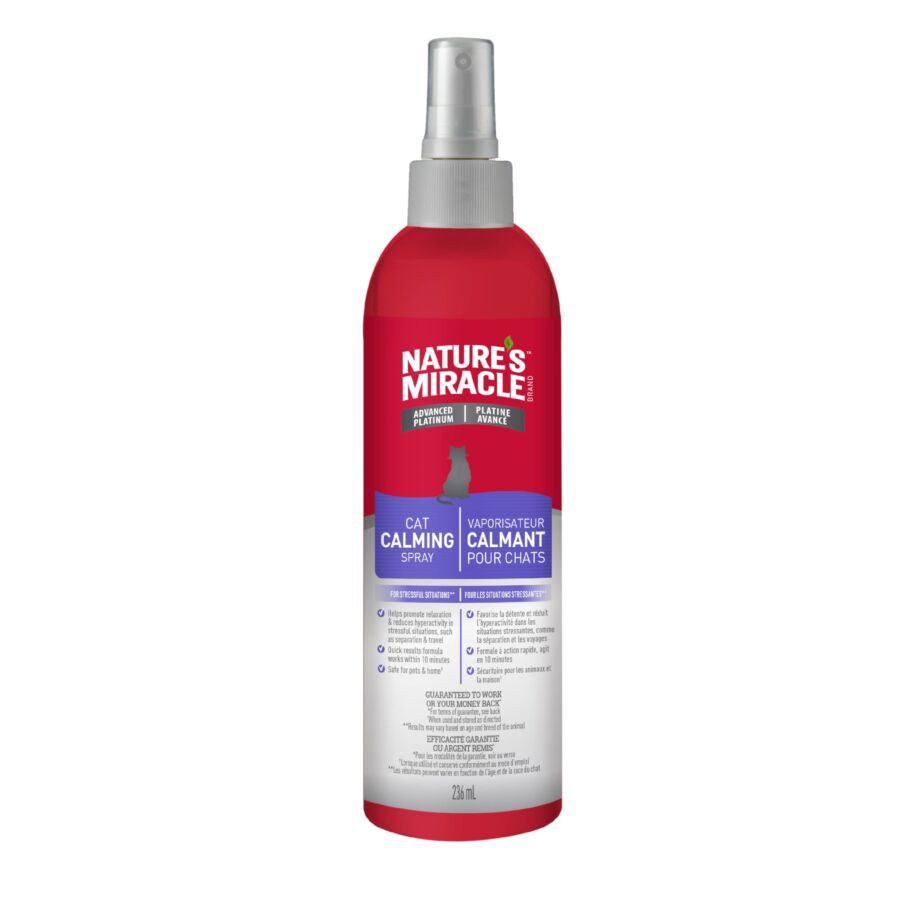
This spray helps ease your cat’s anxiety during travel and other stressful situations.
- Works quickly within 10 minutes
- Gentle formula and pleasant smell
- Simple to use and apply
- Effects may vary between cats
- Some cats may dislike the smell
- Requires reapplication every few hours
If you’re planning a trip and worried about how your cat might handle the stress, Nature’s Miracle Cat Calming Spray could be a lifesaver. It’s easy to use—just spray it in the carrier or where they hang out. The soothing scent starts working fast, and you might notice your cat chilling out in just a few minutes.
Cats are known for being finicky, and not all are fans of the same smells. Some cats might not respond well to this spray and could even dislike it. It’s best to try it out before your big travel day to see how your pet reacts.
The fact that you need to reapply it every four hours can be a bit of a hassle during long trips. Still, its safety around pets and human-friendly fragrance make it a convenient option for reducing travel-related stress for your furry friend.

If you’re thinking about calming your cat for travel, this product could be a good choice with some pros and cons to consider.
- Helps reduce stress and tension in cats
- Includes melatonin to promote relaxation
- Ginger supports sensitive stomachs during travel
- Some cats might not like the taste
- Effects can vary from cat to cat
- The container is quite small for the price
These calming chews are aimed at reducing your cat’s stress, thanks to the blend of thiamine and L-tryptophan. For many cats, melatonin adds to the relaxation effect, making them calmer and less anxious.
One thing you might notice is the smell of the chews. Some cats might be picky and refuse to eat them, which can be a hassle. You may need to crush and mix them with something your cat likes to ensure they eat it. The ginger in the chews can help prevent upset stomachs, which is great if your cat gets car sick.
If you decide to try NaturVet’s Quiet Moments, be aware of the mixed reviews. Some users report great success, while others haven’t seen much difference. The price of the chews might feel a bit steep given the small container, but if they work for your cat, the peace of mind could be worth it.
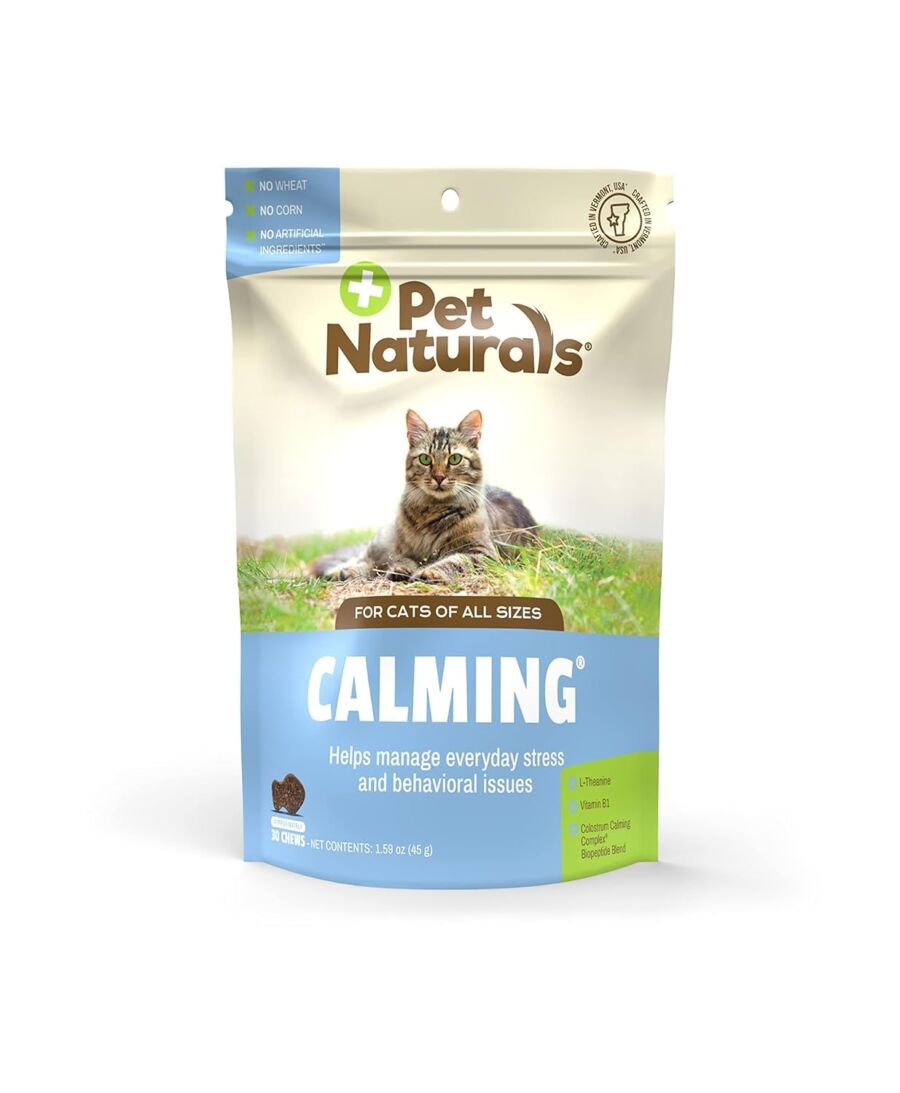
These chews are worth considering if you need a way to help your cat stay calm during travel.
- Easy to administer and tasty
- Formulated by veterinarians
- No sedation effect
- Some cats may dislike the taste
- Formula seems to vary in consistency
- Effectiveness varies among cats
Pet Naturals Calming Chews are designed for all cat sizes and aim to reduce anxiety without sedation. Many cat owners appreciate the chicken flavor that makes these chews easier to give, even for picky eaters. Their formulation, including Thiamine and L-Theanine, aims to soothe your pet during stressful times such as vet visits or long car rides .
You might love that these chews are not sedatives. Your cat remains alert and doesn’t suffer mood swings or drowsiness. Since it’s formulated by veterinarians, you get a product that cares about the health of your furry friend.
On the flip side, some users report changes in the formula, leading to inconsistencies in texture and effectiveness. While some cats react positively, others might not enjoy the taste or show significant improvement in their anxiety levels. Nevertheless, it’s worth a try if you’re looking for a non-sedative option.
When choosing a sedative for your cat during travel, consider the following factors:
Check with your vet. Ensuring your cat’s health and safety is paramount.
Look for a product that works well. It should keep your cat calm for the duration of your journey.
Sedatives come in various forms: pills , liquids , or treats . Choose what is easiest for you to administer. Verify the correct dosage based on your cat’s weight and age.
Be aware of potential side effects. Monitor your cat closely for any adverse reactions.
Some products are easier to give to your cat than others. Consider how cooperative your kitty is when choosing.
You have options between natural remedies and prescription medications. Natural options might include herbal supplements or pheromone sprays .
Costs can vary. Price ranges:
Long trips might need stronger or longer-lasting effects. Short trips might not need heavy sedatives.
Read reviews from other pet owners. They can provide insights into how effective a product might be.
Consider all these points when choosing the best sedative for your cat’s travel. Making an informed decision helps ensure a smooth trip for both you and your furry friend.
- Saint Mark’s Basilica
- Castel Sant’Angelo
- Leaning Tower of Pisa
- Johan Cruijff Arena
- Burj Khalifa
- Exclusive historical walking tour of Lucerne with a local
- Luberon lavender fields guided tour with transport from Avignon
- Walking tour of Bern Instagrammable spots with a local
- Private guided tour through the architecture of Glasgow with a local
- Berlin museum quarter interactive audioguide scavenger hunt
- Takayama old town walking tour with local guide
- We Tested And Found the Best Travel Backpacks for Adventure-Ready Explorers
- The Future of Air Travel: 5 Cutting-Edge Technologies You’ll See in 2025
- 5 Breathtaking UNESCO Heritage Sites in Africa You’ve Never Heard Of
- 6 Affordable Tropical Destinations for a Winter Escape
- Best Apps for Travelers: 12 Must-Have Tools to Save Money and Time
- The Ultimate Guide to Travel Hacking: Maximize Rewards Without Sacrificing Financial Health
Related Posts
- 20 Best Places to Visit in Austria: Your Ultimate Travel Guide
- Scandal at Notre-Dame: The Controversial Appointment of the Young Organist
- Destination Chicago Wedding: Top Venues, Planning Tips, and Ideas
- 20 Best Places to Visit in Portugal: A Must-See Travel Guide
- Best Day Trips from Sacramento: Top Destinations to Explore
- Frequent Bathroom Breaks on Road Trips: Tips for a Smooth Journey

Cheapest Places to Travel Right Now: Budget-Friendly Destinations for Your Next Vacation

Why Are Flights So Expensive Right Now? 5 Reasons You Should Know

Where to Stay in Athens: Top Neighborhoods for Every Traveler

The Ultimate Vacation Planning Checklist: Top Tips for a Stress-Free Trip
Leave a reply cancel reply.
Your email address will not be published. Required fields are marked *
You may use these <abbr title="HyperText Markup Language">HTML</abbr> tags and attributes: <a href="" title=""> <abbr title=""> <acronym title=""> <b> <blockquote cite=""> <cite> <code> <del datetime=""> <em> <i> <q cite=""> <s> <strike> <strong>
Save my name, email, and website in this browser for the next time I comment.

How to Sedate a Cat for Travel
Everybody’s cat will react different to traveling. Some cats will travel without any issues at all. Then there’s cats like mine that will give you every problem in the book. Sometimes It is necessary to sedate your cat if they are very jumpy, have increased levels of anxiety, or if they just don’t take traveling very well.
Whatever the reason, I’m here to inform you about the options that I have learned to help you with sedating your cat. Here’s a complete guide on how to sedate a cat for travel.
Table of Contents
What Are Cat Sedatives?
Cat sedatives are used to help make your cat sleep or calm down. This is highly effective in scenarios where your cat may be unable to relax or is stressed out. This makes cat sedatives the perfect choice for relaxing your cat while traveling.
When Should You Sedate Your Cat for Travel?
You may need to sedate your cat for a long trip like in a plane, train, or even going to the vet. Sedating a cat for travel will help maintain your cat’s behavior. In terms of behavior, sedating your cat will help ease your cat’s anxiety levels which can prevent many issues that high anxiety can cause.
Having a high level of anxiety can cause difficulty breathing, be stressed out, urinate or defecate, and cause motion sickness in cats .
Some cats just do not do well during travel. They will usually meow and moan the whole trip due to the added stress and anxiety they are going through. Sedating your cat will help put your cat into a calmer state.
So calm that they may just nap for the entire duration of the trip. Okay… Maybe they wont nap for the entire trip unless you give them too much medicine on accident, but they will be in a much more submissive state and easier to deal with.
How to Choose the Right Medication to Sedate Your Cat
The first step you can take is to talk to your vet. Even if you plan on buying an over the counter medication, it is still smart to run it by your vet to make sure he approves of it. Choosing a poor quality product can be more harm then good as well as dangerous to your cat’s health. Any animal that will be undergoing sedation should first be medically examined to make sure they are healthy enough. This is especially important if you plan on traveling with your cat on a plane . Planes are very cramped and can give your cat an increased amount of stress and anxiety.

The first type of cat sedative I would recommend trying is a simple cat calming spray. I was surprised at how cheap and portable this cat calming spray was on Amazon . It’s very easy to use and it doesn’t require your cat to ingest anything. You simply spray your cat’s carrier or the area he will be in and let it soak in. Make sure to use a cat carrier that is the perfect size for your cat. Always spray the area about 30 minutes in advance to make sure your cat isn’t over exposed to the spray. This means no worrying about whether or not your cat got a proper dose if he ends up throwing up if you were using an oral medication.
Another option to sedate a cat for travel is to use oral medications. Oral medications usually have a longer onset time. They are also usually a lot harder to give to your cat. There are many variables that can go wrong with oral medications. Your cat may not swallow the medication, or if they vomit you won’t know how much medication they actually ingested. Your cat may even experience side effects like an upset stomach or other much more severe side effects. One upside to oral medications is that they can be extremely effective at sedating your cat which can make for a very easy trip.
How to Give Your Cat an Oral Sedative
Make sure your within the time frame based on the type of sedation you are using. You want to give the medication enough time to kick in before the stressful event you will be exposing your cat too. If you are using a cat calming spray, simply spray an area. This area can be a bed, cat carrier, or a blanket.
The key is to spray an item that your cat will be lying down next to. If you are using a pill or liquid form medication, start by wrapping your cat in a blanket. Once your cat is wrapped go ahead and follow these steps to sedate a cat for travel:
- Put your thumb on one side of your cat’s mouth, and your forefinger on the other side
- Apply pressure until your cat’s mouth begins to open.
- With your free hand, press down on the lower jaw to further open your cats mouth.
- Place the pill or squeeze the liquid medication into your cats mouth on the side of a cheek
- Make sure that your cat swallows all of the medication. Go ahead and slowly release your cat’s mouth from your hands. Lift up your cats face and point his nose upward.
- Gently rub on his throat to encourage him to swallow the pill or liquid medication. A good tip is to gently blow in his face which will help him swallow.
- Go ahead and reward your cat with a treat to praise his good behavior.
Here is a helpful video on administering an oral medication to your cat:
Are There Alternative Methods to Administering the Medication?
Yes. There are other delivery methods you can use if needed. It can be difficult to give a cat an oral medication because it just isn’t natural. Here are a few other methods of medication that are available for your cat so you can decide which one best suits you and your cat.
- You can buy pill guns that let you drop the pill toward the back of your cat’s mouth. I’ve used pill guns on my cat to great success. I recommend this pill gun from Amazon. It’s extremely convenient and easy to use while allowing you to administer more than one pill at a time. A pill gun greatly increases the chances of your cat swallowing the medication.
- Another method you can try is giving your cat the pill with some food. Simply smash the pill up into your cat’s wet food and serve. You can also try wrapping the pill in cheese or a treat that your cat enjoys to sneak it into him. Some pet stores actually sell treats that have a hold where you can place a pill which makes it convenient. I call it a waste of money.
- If you just don’t have any luck with giving your cat medication in pill form then you can try a liquid medication. The only downside to liquid medication is if you don’t get all the liquid down your cats stomach. If for some reason some of the liquid sedative didn’t make it into your cats stomach I strongly advise you to not give him more. Giving your cat more might cause an overdoes since you don’t exactly know how much medication got into his system.

- This final method you can try involves your cat to wear a collar. These are special types of collars that are enhanced with pheromones to help with calming. An example is this collar from amazon. I personally have never used a collar designed to calm a cat, but the amount of positive reviews this product has says something.
How Long Does It Take for the Cat Sedative to Kick In?
Different medications and dosages take different lengths of time to kick in. Try reading the back of the label of the sedative you are using. Most of the time it will let you know the drug onset time. Oral medication can usually take 30 to 45 minutes to kick in while a spray can take effect after only 15 to 20 minutes.
How Long Do Cat Sedatives Last?
The spray that I recommended can sedate your cat for a long car ride or a plane ride. This can range from an hour or two to a few hours depending on how much product is sprayed. Be sure to NOT spray the product directly on your cat. The spray is to be used on either the carrier, crate, bed, or blanket. Your cat will ingest this medication from the scent. Be sure to let the spray completely dry before placing your cat in the area of the spray.
Pills and liquids have a similar time of effect. The main difference is they take a little bit longer to kick in since they have to go through your cat’s digestive system first. If you plan on using an oral sedative then it is best to give it to your cat 30-45 minutes before going out to give the medication some time to work.
Are Cat Sedatives Safe?
When trying to sedate a cat for travel, all sedatives have their own safety and health risks. For sprays, never spray the product directly on your cat. With pills be sure to not overdose your cat by following the instructions on the back of the label. One of the most common concerns with sedatives are blood pressure.
Sometimes they can lower blood pressure to a dangerous level. This usually happens if you overdose your cat with the sedative. Some symptoms of low blood pressure may be a very groggy and disoriented cat. If you see your cat walking around the house and bumping into things or not walking in a straight line he might have had just a little too much.
Putting your cat in a relaxed state can also lower his heart rate. This in turn will cause your cats breathing to be short and shallow. To observe this watch your cat’s stomach as he is breathing. You will notice it expand and contract rather quickly instead of being slow and controlled.
Sedatives are meant to relax and calm your cat, but if misused they have the potential of being fatal.
Prescription Sedatives
If if you talk to your vet you can get a prescription for a strong medication. The main downside of these products are price. Typically prescription medications tend to be on the pricier side. On the contrary, the good thing about purchasing a prescription medication is you will have your vet’s knowledge about a product since they are the ones prescribing it. They can even you how to properly administer the medicine to your cat.
Your vet will also give you a small lecture about any side effects your cat may have and what signs to look out for in case of an allergic reaction or other side effects.
Natural Cat Sedatives
You may or may not have heard of these two plants called catnip and Valerian. Catnip comes from the plant Nepeta Cataria while Valerian comes from the Valerian plant.
Only about 50 percent of cats will respond to the exposure of catnip. In the eyes of a cat, catnip resembles urine. Once they come in contact with it they do things like roll, paw, drool, or act frisky as if they were in heat.
If your cat ingests this herb it will act like a natural sedative. The side effect associated with catnip is induced if your cat smells the herb. Smelling it can cause your cat to act different by running and jumping around the room.
Valerian works similar to catnip except it is much stronger and lasts longer. If your cat does not respond to catnip then you can try using this plant instead. Just be careful because if you give your cat too much it may make them groggy and lethargic. Its effects are similar to catnip. It can make your cat act crazy if they sniff it, but will have a nice sedating effect when ingested.
I personally do not have any experience with these two types of plants, but these options are out there if you want to try and sedate your cat naturally.
Always Consult with Your Vet Before Giving Your Cat a Sedative
Anytime you plan on self medicating your cat I always recommend to make sure you take a quick visit to your vet. Your vet can get your cat’s baseline vital stats to see if they are healthy enough to go ahead and use these types of medications. Vets will also give you their recommendation when it comes to dosing your cat with liquid, pill, or spray form medications. Usually an older cat (a senior cat) will be at a greater risk than a younger cat.
It is also not advised to give a kitten that is younger than 6 weeks any type of sedatives.
Final Thoughts
Sedating your cat before traveling may be necessary so it’s good to know all the options that you and your cat have to choose from. I would suggest that you first test out how your cat responds to a quick ride around the block in your car. I learned a lot from my cat when I took him for a little test drive.
This is when I actually decided that I was going to give my cat some form of medication before leaving the house for long car rides. Sometimes it is not necessary to use all this medication on your cat for a short trip.
Related Posts
Can i take my cat to the beach our best tips and tricks, how to get a scared cat to the vet, how to keep a cat cool in a car, leave a comment:.
Save my name, email, and website in this browser for the next time I comment.

How to Sedate a Cat for Travel
Cat sleeping pills for travel - 5322 views.

The reactions of cats when it comes to traveling often differ. Some even take the entire journey without any form of issues. However, there are those that tend to bother the owner and are problematic for carrying along. It is for such reasons that giving such a cat some sleeping pills becomes an option. Sedating helps in calming the cat and avoiding any jumpy and such bothersome behaviors.
The calm cat is in most case the best companion to get, and admire as it sleeps. Besides, there are many more reasons why sedating is of high importance to the pet and the owner. Below are some important tips of cat sedative for travel that are worth when calming the pet cat for a journey.
When to Sedate the Cat?
Often, short distanced journeys are fun traveling with a pet which is active and playful. However, it could not be the same case when taking long traveling hours. It is highly recommended to administer sleeping dosages to the cat when in long trips, such as when using trains, the plane of during its usual clinics.
It is a way of trying to regulate the pet’s behavior. The calmness results from the fact that there is a significant lowering of the pet’s anxiety levels. The consequences that results from the high level of anxiety include strained breathing, defecations, urination, stress and motion sickness.
Some cat gets to their destination appearing very ill if they were never sedated. Others tend to moan and meow for the entire travel. It may turn difficult for the pet owner to handle the situation if they fail to recognize that the cat is emotionally unstable. They go through anxiety and stress, of which it is hard for them to bear.
Therefore, thinking of how to bring calmness and make them comfortable is a top priority. It is a way of bringing the pet to a calmer state. Some pets turn so calm to the point of taking a nap for the whole journey. It may not be given that the pet will remain in its nap, but sedating it puts it in a submissive and easier to handle state.
How to Choose the Right Sleeping Pills
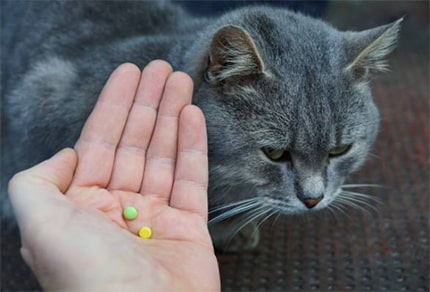
Ensuring that the vet officer approves the pills is a guarantee of positive outcomes. Consequently, picking poor quality products may cause more harmful and unhealthy. The vet officer should also examine the pet to ensure that the pills are fit enough for its health.
It is more important having this procedure, especially when taking plane journeys. There is a combination of elevation effects such as excessive stress, air pressure, and temperatures variation. The cat is subjected to potentially fatal conditions. The sleeping pills are administered in different options such as ingestion, injections or sprays.
However, consider situations such as if the cat throws up and enough dose. Most oral sleeping pills are known to have prolonged onset time, but they are often hard to administer to the cat. But, for the spray form of mediation, it is more of a guarantee that the cat took enough of it into its bloodstream.
How to Administer Oral Sedatives
Most sleeping pills available in the market are orally ingested. The procedure of having the cat consume them starts by timing as per the prescriptions. It is worth having enough time for the medication effects of sinking before the travel exposure starts. There are those sleeping pills that are in solid form while others are in suspensions.
The process should happen in a very calm and caring manner. So, it is wise to start by wrapping the pet with a warm cloth or blanket and then follow the following procedure for cat sedative for travel.
- A thumb is placed on one side of the pet’s mouth, and forefinger on the opposite side.
- Pressure is applied until the cat opens up its mouth.
- The mouth is opened further using the other free hand and pressing down the lower jaw.
- It is then that the pill or liquid medication is squeezed into the pet’s mouth just beside the cheek.
- The cat is soother to ensure that swallows the pills before its mouth is slowly released. It may be necessary to lift the pet’s face and let its nose point upwards.
- A gentle rub on the throat is highly encouraged to ensure that the liquid or pill medication is fully swallowed. Alternatively, make a gentle blow on the cat’s face.
- After that, treat the cat with its favorite meal or such to ensure it is feels praised for the good behavior.
Alternative Methods to Administer Sleeping Pills

There are a couple of other alternatives to administer sedatives. A pet owner, and with the help of a vet, are the people to decide the best method suits the cat in the subject.
- A commonly used technique has a pill gun. It easily enables for the pill to get dropped at the back of the cat’s mouth. The process of forcing the cat to open its mouth and trying to push the pills deeper is well sorted. The pill gun raises the probabilities of having the cat swallow the medication. It also minimizes possibilities of causing throat irritations that could make the cat vomit the medication.
- Another highly recommended method is offering pills when they are mixed with cat foods. It is simple to smash up the pills into the pet’s wet meal and serve. Alternatively, wrapping the pills with some food balls, cheese or other favorite forms of cat treat will make it consume the medication at ease. One can purchase some of these treats available in the market where the place to hold the pills is conveniently made.
- The liquid medication is also an alternative to offering solid pills. The only challenge with it is when the entire dose fails to reach into the pet’s stomach. It is highly advisable not to add any of the sedatives in case there was spillage or other factors that made it not to get to its stomach. Some pet owners tend to mess up by overdosing the cat since the exact measure of the medication into the pet system can’t be established.
- The last method involves having the pet wear a special collar. These collars are somehow treated with the drug medication and then tied around the pet’s neck. It helps in ensuring that the pet slowly takes in the dose and remains calm.
How long it takes for the Sleeping Pills to Kick In.

The oral pills often take approximately 30 – 45 minutes while the spray form may take as little as 15 – 20 minutes. Hence, choosing the right dosage, medication and administration depend on the journey preparation time and hours it takes to the destination.
How Long Do Cat Sleeping Pills Last?
The duration of sleeping pills effects much depends on the dosage taken. A cat would remain calm for longer hours if a higher dose were used. On average, most sleeping pills go for an hour and above. It means that the travel hours are key in determining how many hours the cat is needed calm. Prays are known to be more effective since it is the carrier that is sprayed, making the pet to ingest the medication slowly.
For the liquid and solid pills, the kick in time is longer and slow since they take the entire digestive system process before getting to effect. The pills may appear to last longer through the gradual intrusion into the bloodstream.
Are Cat Sleeping Pills Safe?
All the sleeping pills in the market have some degree or health risks and safety. One main precaution when using sprays is to avoid having them sprayed directly on the pet. For the pills, overdosing may lead to immense hazards, and thus, it is needful to follow the precautions and prescriptions given at the label. A common issue with most sleeping pills is their effect on the pet’s blood pressure.
Some of them lower it to extremely dangerous levels while others cause it to shoot too high especially if an overdose is administered — some observable symptoms with a cat whose blood pressure is low include perplexed and groggy cat. The heart rates may also vary, resulting in difficult breathing. It implies that sleeping pills have equal chances of turning fatal as well as calming the cat.
Natural Cat Sleeping Pills
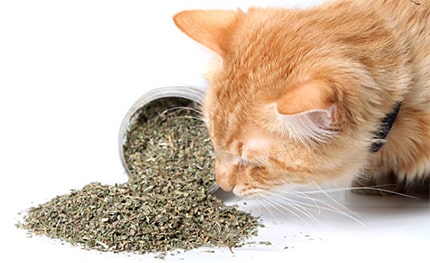
They may sound not common, but research has it that these are well applicable when bringing the cat to sleep. Approximately 50% of cats respond to the coming in to contact with Catnip for it is more of urine to the eyes of the pet.
However, it is a natural way of having the cat sleep upon having it ingested in their body. The only precaution is to avoid having the cat smell the herb for it may result in it acting frisky, rolling, running, drooling and pawing.
The Valerian herb has similar effects to those of Catnip, though its effects a longer lasting and stronger. The only challenge is knowing the right dosage to administer. Often, some pet owners end up overdosing their pets which results in them to be lethargic and groggy. However, the experience with these herbs is not known by most pet owners. It takes an expert to know the right amount and procedure to administer it to the pet.
The Need to Consult a Vet before giving Sleeping Pills
A vet is a person with much knowledge and experience on the right procedures to undertake the procedure of cat sedative for travel. It is important having to engage a vet when taking any medication oriented decisions. When planning to do some self-medication on the cat, making a quick visit to the vet with the pet goes a long way in guaranteeing its safety and health.
It is here that the cat can get examined to ensure that it is healthy enough for the procedure. They are the people who can choose the best dosage and medication for the pet. Their recommendation on whether to take the spray, a liquid or the pills medication administration are worth. They also examine the risks attached to every phase or decision of the procedure.
The younger cats are known to be at lesser risks as compared to the older ones. Kittens below six weeks of age are also highly not recommended to consume any form of sedatives.
Final Verdict
Giving some sleeping pills to a cat for travel is quite necessary to ensure that the pet is calm and can get control. However, there exists a couple of options of cat sedative for travel, and decide on when and how to administer them. Taking the pet to a vet helps in determining the health condition and possible effects of these different medications.
It is recommended to take the pet around for a drive in determining of the best sedatives to ingest and its response to the pills. The need to have the medication comes out stronger when a semi-travel environment is created. It may not be necessary for doing any form of medication when travel is a simple short trip.
Sharing is caring
- Pinterest 11
Related Articles

Say “Meowy Christmas” with These Purrfect Presents
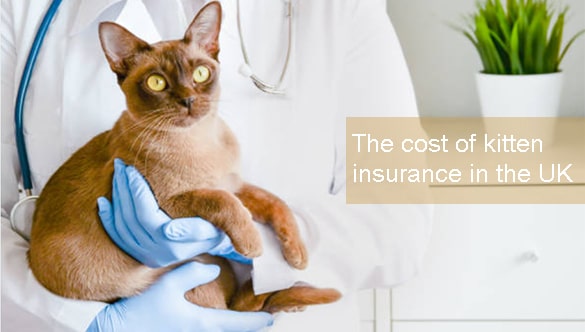
The average cost of kitten insurance in the UK

6 Beautiful Ways To Honor Your Beloved Cat
LEAVE A COMMENT Cancel Reply
Your email address will not be published. Required fields are marked *
- Share full article
Advertisement
Supported by
Drug Overdose Deaths Are Dropping. The Reasons Are Not Perfectly Clear.
The decrease across the country is a major breakthrough in efforts to reverse the effects of fentanyl. Researchers and health officials say there is no easy explanation for the trend.

By Noah Weiland
Noah Weiland has written about the public health policies that seek to address drug overdoses.
Drug overdose deaths are decreasing sharply across the country, according to recent state and federal data, a dramatic improvement in the nation’s efforts to reverse the consequences of fentanyl’s spread in the illicit drug supply.
Between April 2023 and April 2024, overdose deaths declined by about 10 percent nationally to roughly 101,000, according to preliminary data published recently by the Centers for Disease Control and Prevention. That amounted to the largest decrease on record, according to the Biden administration. Nonfatal overdoses are also down more than 10 percent.
The data suggests that some of the tools used to combat opioid overdoses, such as naloxone, the overdose-reversing medication, were having a significant impact. But researchers and federal and state health officials have puzzled over the exact reasons for the decrease, including why overdoses have fallen so much in recent months.
The pace of the decline “is such an anomaly in the last 20 years,” said Nabarun Dasgupta, a leading drug policy expert at the University of North Carolina at Chapel Hill who published an analysis this week of the state and federal data.
Some states have reported even greater decreases than the national rate. In Kentucky , overdose deaths dropped by more than a third between April 2023 and March 2024. Arizona, Maine and Vermont all recorded recent decreases of around 15 percent.
North Carolina’s fentanyl overdose rate fell by more than 30 percent from May 2023 to May 2024, Dr. Dasgupta said, a figure that prompted him to call the state’s health department to confirm that the number was real.
Drug overdoses have amounted to one of the most intractable public health crises in modern times, increasing almost every year since the 1970s and peaking at roughly 111,000 in 2022. They declined slightly last year to around 108,000, according to preliminary data.
Experts cautioned that the number of overdose deaths remained extraordinarily high, raising the question of whether the recent good news was a blip or the beginning of a sustained downward trend.
Dr. Rahul Gupta, the director of the White House’s Office of National Drug Control Policy, said the new data proved that the Biden administration’s drug policy agenda was working. Regulations for addiction treatments had been loosened , he said, while newly over-the-counter naloxone had become cheaper.
But he acknowledged that attributing the decrease to specific strategies was difficult.
“In public health, we often don’t have cause and effect,” Dr. Gupta said. “Like you’re having a heart attack and you go into a stent and you’re alive. That’s not public health. Public health is more associations. You look at the patterns over time.”
Drug policy experts and health officials have pointed to a number of theories that could help explain the trend.
Naloxone is much easier to find.
Naloxone, which can be injected or sprayed in the nose, has become widely available in recent years, in part because of large federal grants doled out to state health departments that helped saturate communities with the medication.
Dr. Yngvild Olsen, an addiction expert at the federal Substance Abuse and Mental Health Services Administration, said that states had become much more sophisticated at using different funding sources, including from opioid settlements , to distribute naloxone to the right people.
Van Ingram, the executive director of Kentucky’s drug control policy office, said his state used federal grant funds to distribute over 160,000 two-dose units of naloxone last year. “That’s a lot in a state of four million people,” he said.
Mr. Ingram said that many of those doses were given to the state’s dozens of syringe exchange programs , where opioid users can swap out used needles for new ones and receive other so-called harm reduction tools , such as fentanyl test strips.
“We’ve gotten better at getting naloxone into the hands of people most likely to use it,” he said.
In 2023, 22 million doses of Narcan, the best-known brand, were distributed in the United States and Canada. The Food and Drug Administration began allowing it to be sold without a prescription last year.
Treatment remains hard to obtain for many. But some reforms could be saving lives.
Lawmakers and federal officials have moved in recent years to loosen restrictions on buprenorphine and methadone, two common, effective and underprescribed opioid addiction treatments . Health providers no longer need a special license known as an “X waiver” to prescribe buprenorphine, while clinics can offer more take-home doses of methadone .
Dr. Elizabeth Salisbury-Afshar, an addiction physician at the University of Wisconsin-Madison who has trained doctors in prescribing buprenorphine, said that the buprenorphine reforms had changed the culture around offering the drug, allowing it to be prescribed by phone or through a telehealth appointment. “We’re going to treat it like other medicines,” she said.
Still, it is unclear how much those changes might have influenced the most recent overdose data. Despite a bipartisan push in Congress to ease how methadone, itself an opioid, is prescribed, the drug is still tightly regulated. Opioid users are often required to visit a specialized clinic every day to receive doses. And even with an increase in the number of providers who can prescribe buprenorphine, some researchers have found that it has not led to a major uptick in prescriptions .
Changes in the drug supply could be influencing the data.
Drug policy experts said that greater use of naloxone and addiction treatments could only suggest so much.
“When we see potentially big swings in either direction in overdose numbers or overdose deaths, we have to take the drug supply itself into account and think about what role that’s playing,” said Stephen Murray, an overdose survivor who runs an overdose hotline at the Boston Medical Center.
Many opioid users also take other illicit substances, a phenomenon known as polysubstance use . Stimulants such as meth and cocaine, which killed tens of thousands of Americans last year, are often mixed with fentanyl, complicating the uses of naloxone and opioid treatments.
Dr. Olsen pointed to increased use among drug users of test strips that can detect the presence of fentanyl or xylazine, an addictive sedative — and animal tranquilizer — that the White House designated as an “ emerging drug threat .”
Mr. Murray and other drug policy experts have suggested that there could be clues to the overdose decline in xylazine. The drug, which slows the heart rate and produces gruesome abscesses on the limbs , has been found in more than a third of powdered fentanyl samples this year, according to the Drug Enforcement Administration . It has been moving in the drug supply from the East Coast to the West Coast.
Because fentanyl users often take several doses every day, Mr. Murray said, xylazine’s long-acting, sedating effect discourages some users from using more fentanyl. “If xylazine is in the supply, people will use fewer times over the course of the day,” he said. “Xylazine also changes the makeup of what someone’s using — it changes the portion of fentanyl in the sample.”
Brandon Marshall, an epidemiologist and drug policy expert at Brown University, said that many drug users in recent years have developed more tolerance for fentanyl, including higher doses of it. If they can keep to a certain dosing consistently, he said, that lowers the risk of a fatal overdose.
“The ability for folks to manage such a toxic drug supply might be changing,” he said. “People have been exposed to fentanyl often for years now. They’ve adapted, are using safely and are less likely to be at risk of death.”
Noah Weiland writes about health care for The Times. More about Noah Weiland

IMAGES
VIDEO
COMMENTS
Learn about the best prescription and non-prescription options for calming your cat during travel. Compare the pros and cons of gabapentin, trazodone, alprazolam, zylkene, feliway spray, and more.
Learn about 10 prescription and over-the-counter medications to calm cats during travel. Find out when and how to use them, and what side effects to watch out for.
Learn about the different kinds of cat sedatives, how they work, and what side effects they may have. Find out when and how to use a cat sedative for travel, and how much it will cost.
1. Choose the Medication. Whether you choose to go with over-the-counter, prescription, or one of the natural methods above, you need to do your research and choose the proper medication for your ...
Learn how to determine if your cat needs sedation for travel, and what medications or natural remedies can help them cope with stress. Find out the signs of feline anxiety, the best options for car and plane travel, and the precautions to take.
Learn why experts advise against using cat sedatives for travel and what dangers they pose for your cat's health and safety. Find out how to deal with travel anxiety in cats without drugs and what other options are available.
A sedative is a drug that produces a calming or sleep-inducing effect. The term is derived from the Latin word "sedare" meaning "to sit" or "to settle.". The commonly used adjective "sedate," meaning calm, dignified, and unhurried, comes from the same origin. A sedative causes a cat to become "sedated" i.e. calm and sleepy.
A cat sedative for travel is an invaluable tool for pet owners who are looking to ensure their feline friends remain calm and stress-free during travel and other potentially stressful situations. Understanding the types, uses, and safety of these sedatives is crucial for making an informed decision that prioritizes your cat's well-being.
From my experience as a vet, sedating cats for flights is strongly recommended unless your individual cat is exceptionally docile and travel-trained. The benefits outweigh the risks. What Type of Sedation Should I Use? Most vets will prescribe a mild sedative like meloxicam that can be given a few hours before your flight. This allows your cat ...
Learn how to sedate your cat for travel with over-the-counter or natural products. Find out the benefits, side effects, and precautions of different methods, such as Benadryl, catnip, or Feliway.
Explore the world of cat sedation for travel. From types of cat sedatives to safety tips, discover everything you need to know to keep your cat calm.
Learn how to recognize and treat cat anxiety, and when to use sedatives or tranquilizers for stressful situations. Find out about natural remedies, supplements, and medications for cats.
After buying, you can give the cat a few hours before the trip. Then, in case of any side effects, contact your vet. Gabapentin: It is a strong sedative that can make a cat sleep for around 8 ...
Cat Sedatives vs. Anti-Anxiety Medications. Cat sedatives work by coaxing your kitty into a state of sleep to keep her calm for long periods of travel—a useful tool for moderate to severe cases of fear of travel. Unlike anti-anxiety medications, sedatives don't target the negative, fear-inducing emotions your kitty experiences.
Cat sedatives for travel. According to VCA Hospitals, your vet may prescribe medications like buprenorphine, gabapentin, or alprazolam. These medications help to reduce anxiety in cats and will encourage them to relax. It's important to follow your vet's instructions precisely, and it's a good idea to test out the medications on your cat ...
The veterinary exam is necessary to make sure your cat is up-to-date on all vaccinations and is healthy enough for air travel. Tranquilizers can affect a cat's ability to control their body temperature. Regulating a cat's body temperature could be a problem if they must be in the cargo hold. Find out in advance which airlines allow a cat to ...
The good thing about this cat sedative is that it does not have a very strong taste, and the cat might not realize she is taking any medication. It is best to administer it two to 2 hours before the trip; the dosage will vary from cat to cat. There is a powerful effect of sedation, and holds up to 8 hours.
A sedative can make this process go more smoothly for both cat and owner by mitigating the cat's anxiety and reducing the cat's fear in this new and potentially scary situation. Veterinarians also use sedatives to anesthetize your cat for certain procedures or prior to surgery. This ensures that your cat is safe, comfortable, pain-free, and ...
While some cats react positively, others might not enjoy the taste or show significant improvement in their anxiety levels. Nevertheless, it's worth a try if you're looking for a non-sedative option. Buying Guide. When choosing a sedative for your cat during travel, consider the following factors: Safety First. Check with your vet.
Many cats dislike care travel due to the random movement, loud noises, and motion sickness. You can make car travel less stressful for your cat by using pheromones or calming sprays , choosing an appropriate carrier, and reducing loud noises in the car. Speak to your veterinarian about light sedatives, calming medications, and anti-nausea ...
Dose for petite or geriatric cats: reduce dose to 50 mg per cat NB: The sedative dose (>20 mg/kg) is higher than the analgesic dose of gabapentin in cats (gabapentin for analgesia in cats = 5 - 10 mg/kg or 25 - 50 mg per cat, PO, BID) The use of pre-hospital gabapentin has been the single most effective tool for
Put your thumb on one side of your cat's mouth, and your forefinger on the other side. Apply pressure until your cat's mouth begins to open. With your free hand, press down on the lower jaw to further open your cats mouth. Place the pill or squeeze the liquid medication into your cats mouth on the side of a cheek.
A vet is a person with much knowledge and experience on the right procedures to undertake the procedure of cat sedative for travel. It is important having to engage a vet when taking any medication oriented decisions. When planning to do some self-medication on the cat, making a quick visit to the vet with the pet goes a long way in ...
Dr. Olsen pointed to increased use among drug users of test strips that can detect the presence of fentanyl or xylazine, an addictive sedative — and animal tranquilizer — that the White House ...